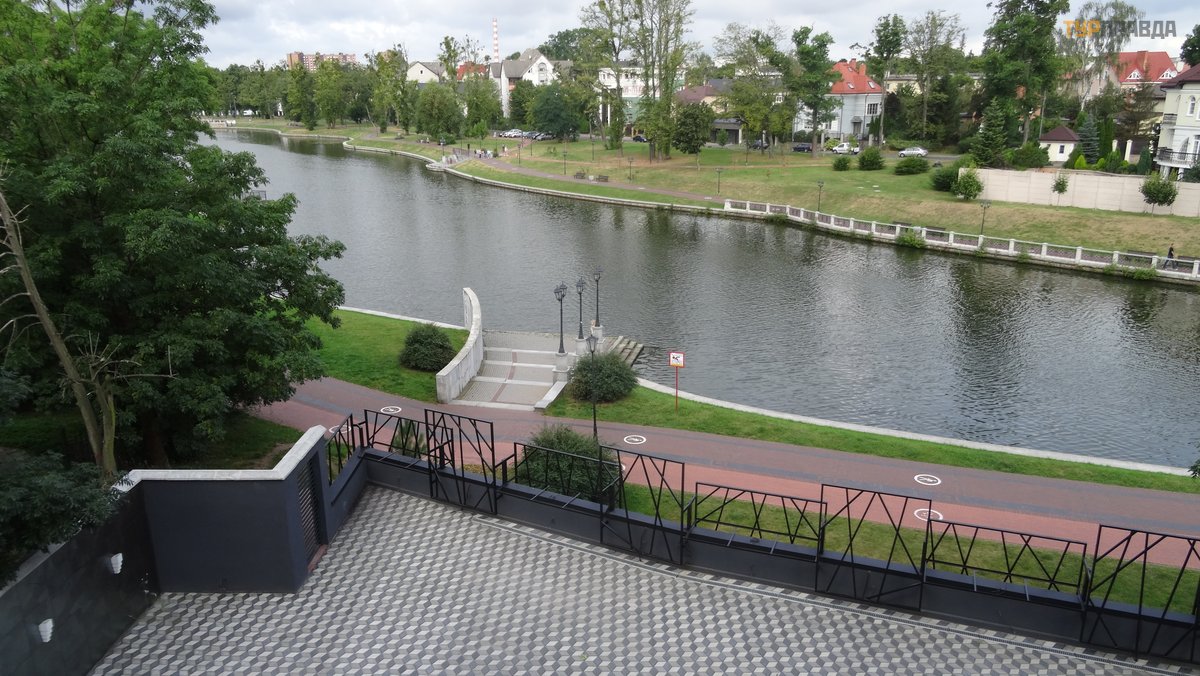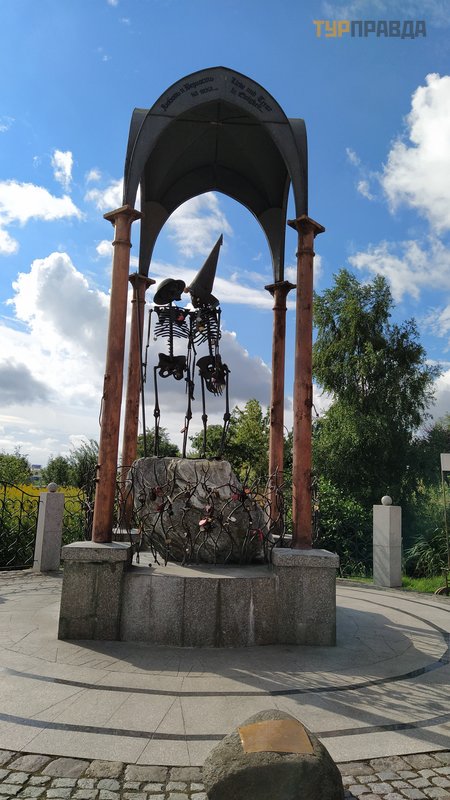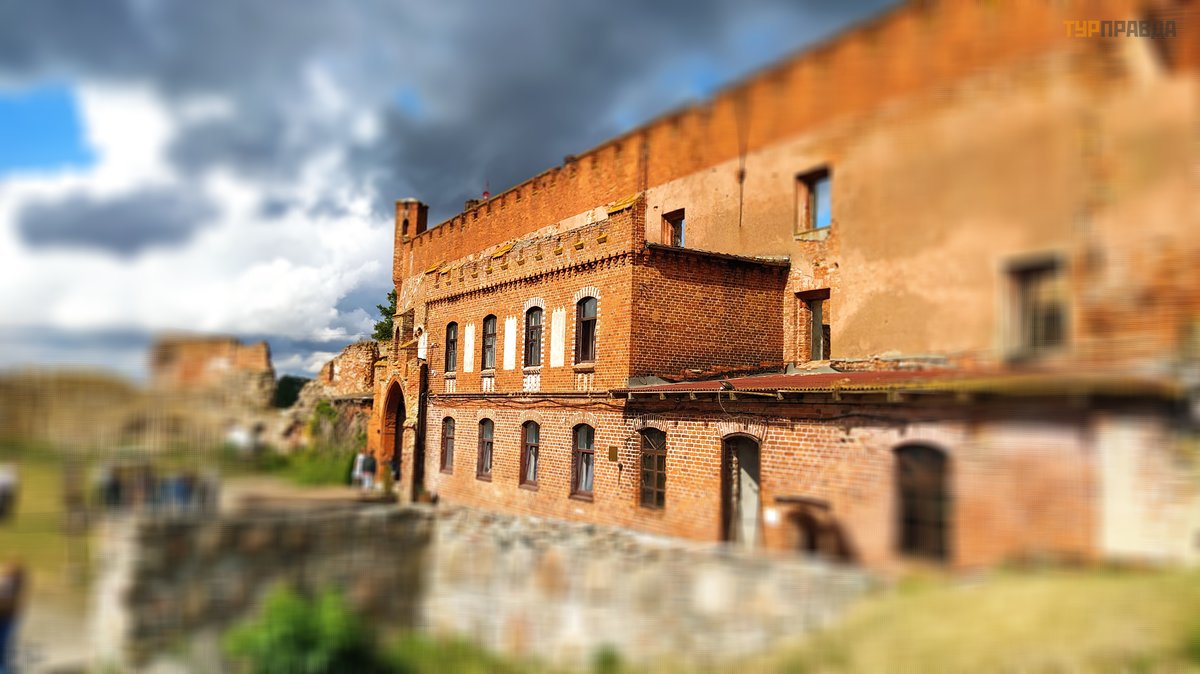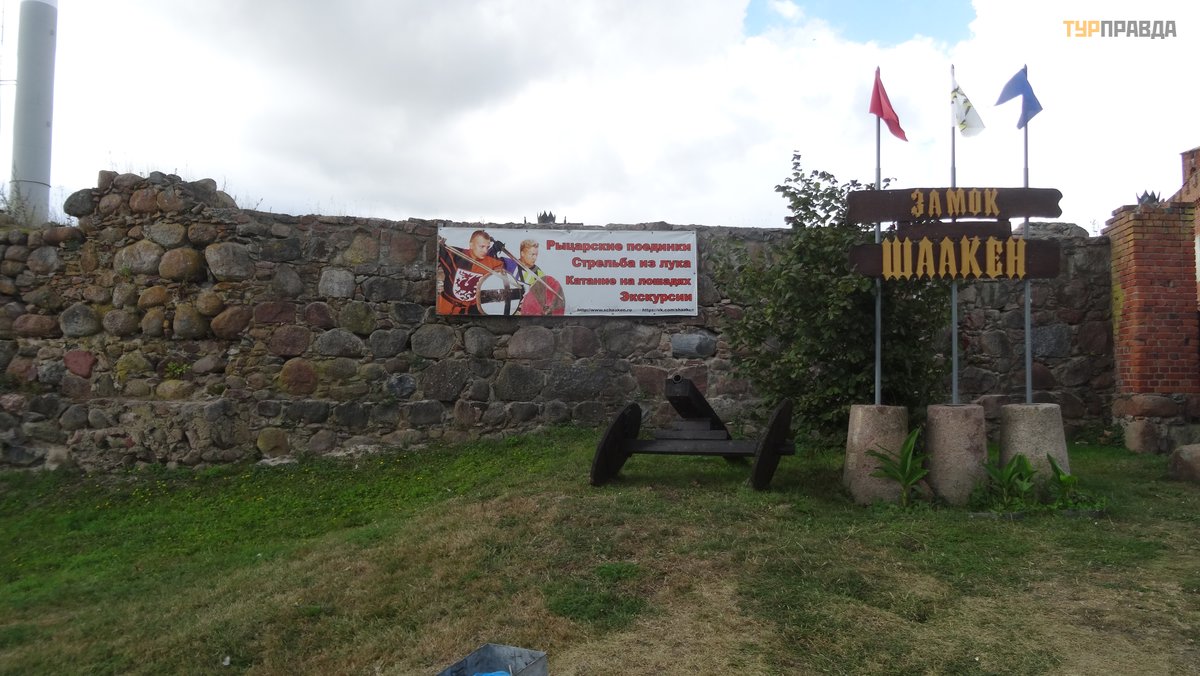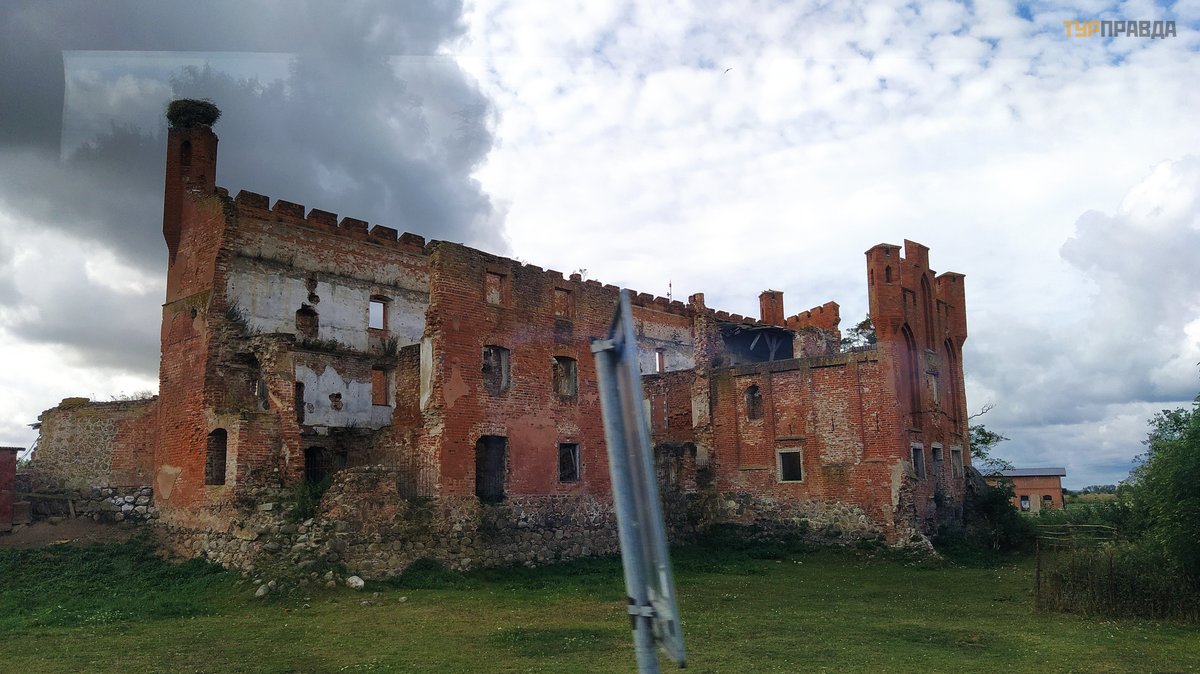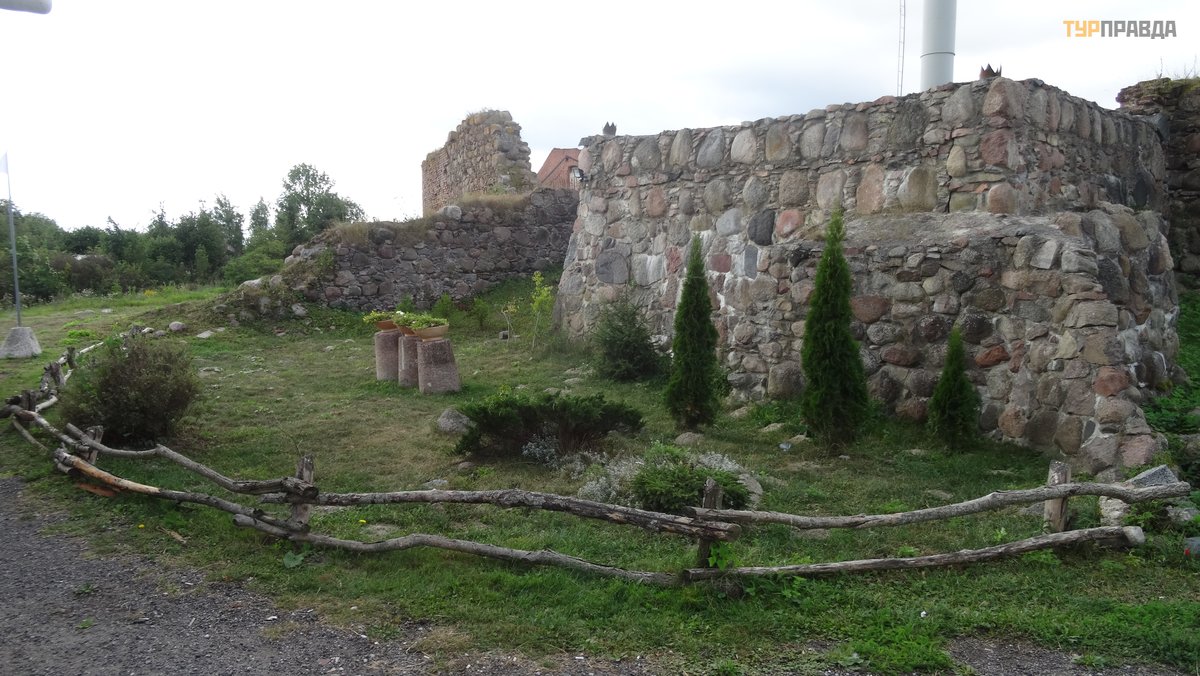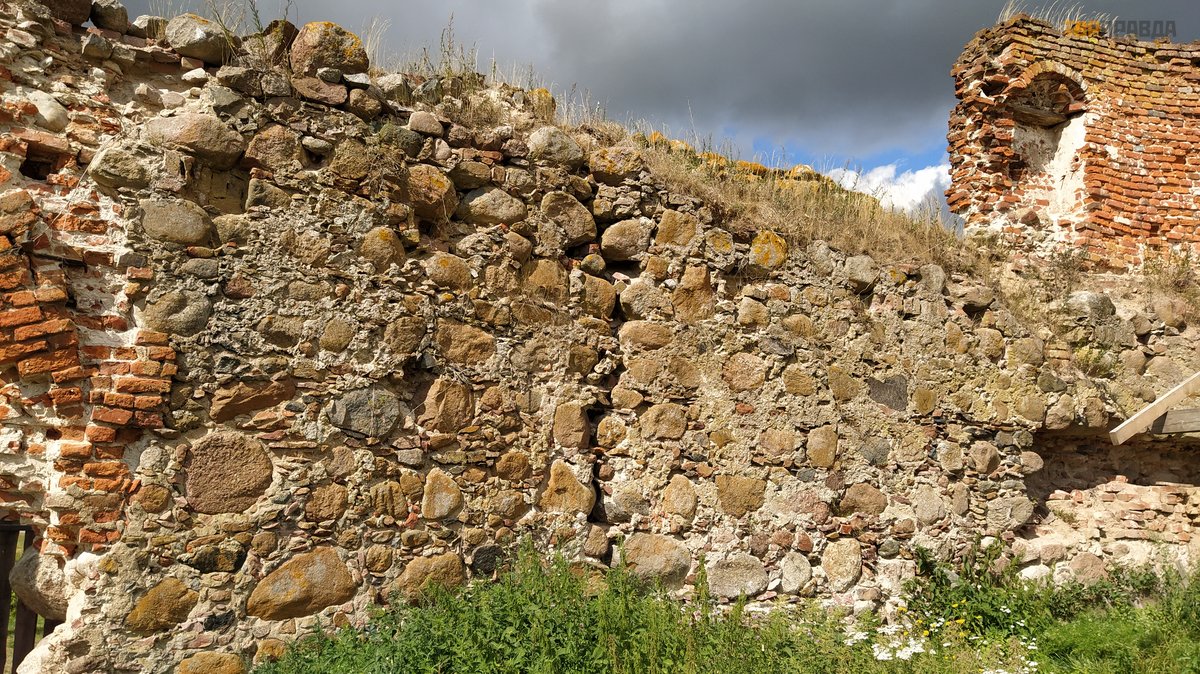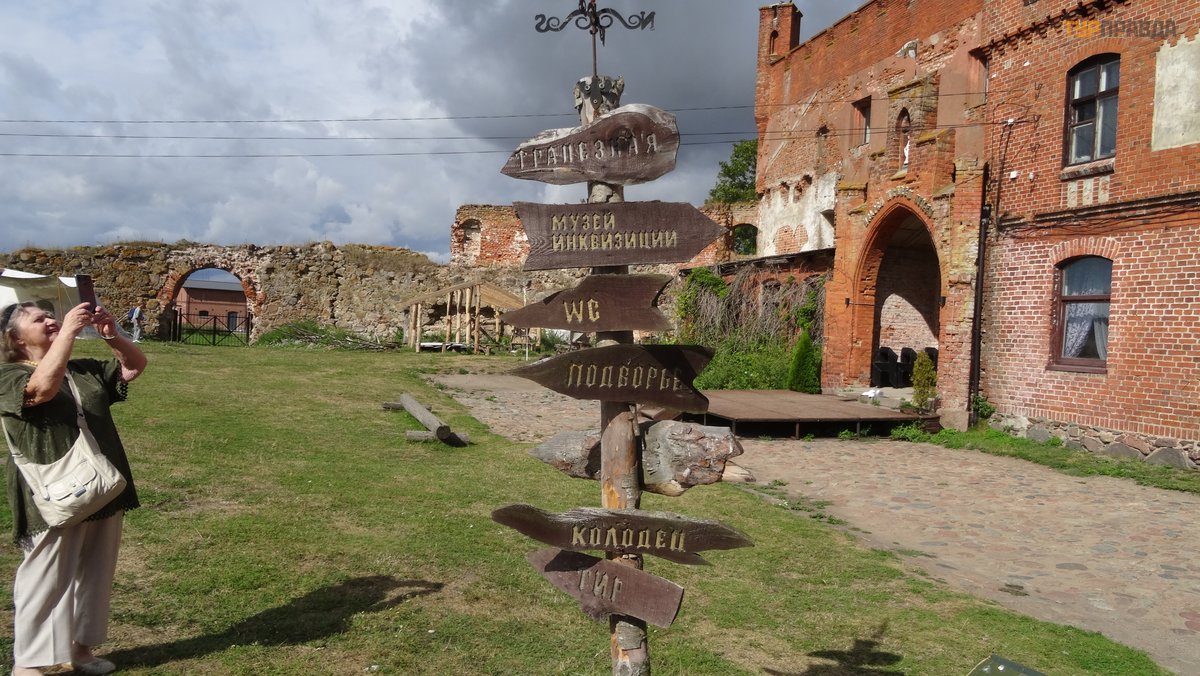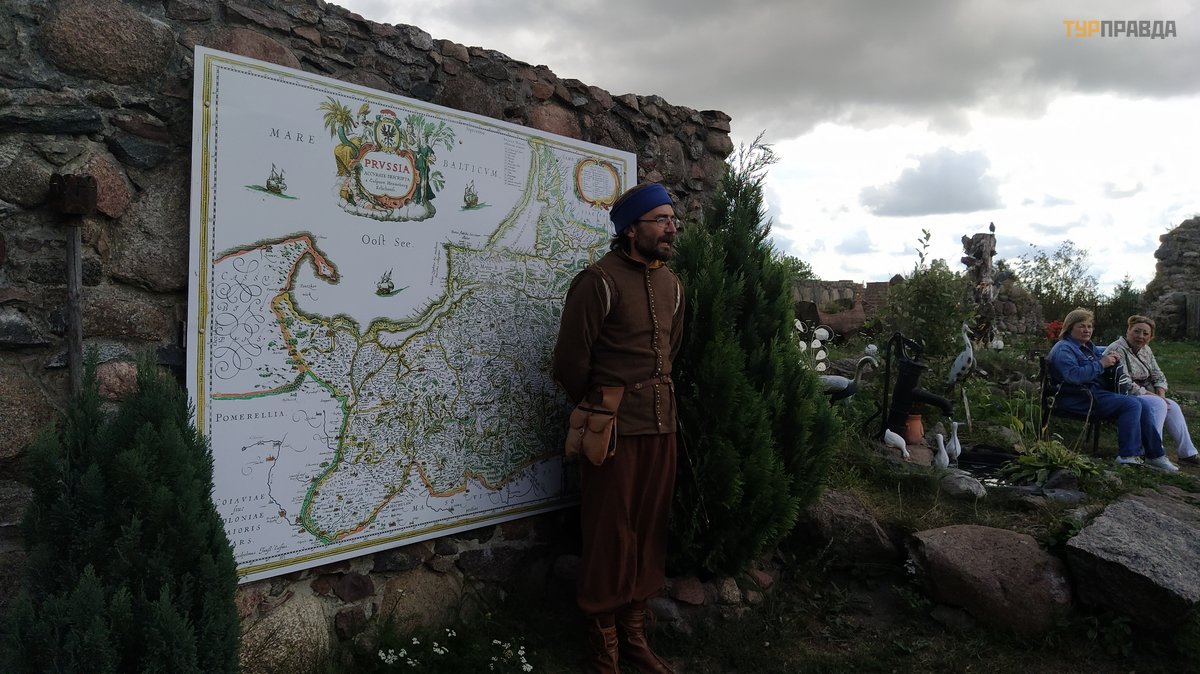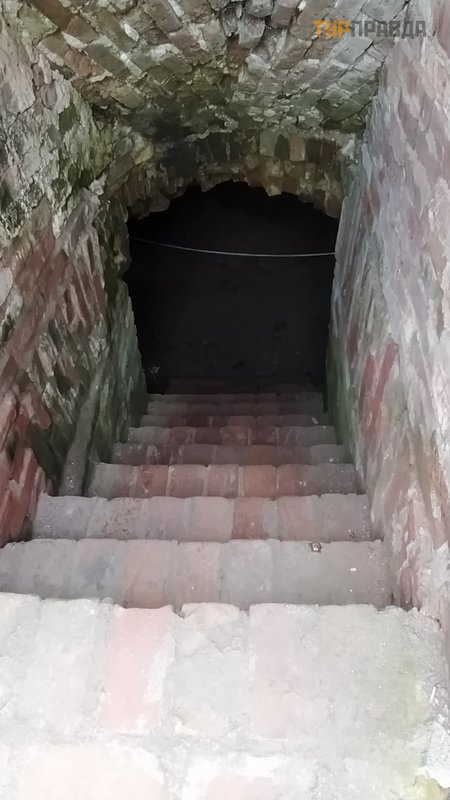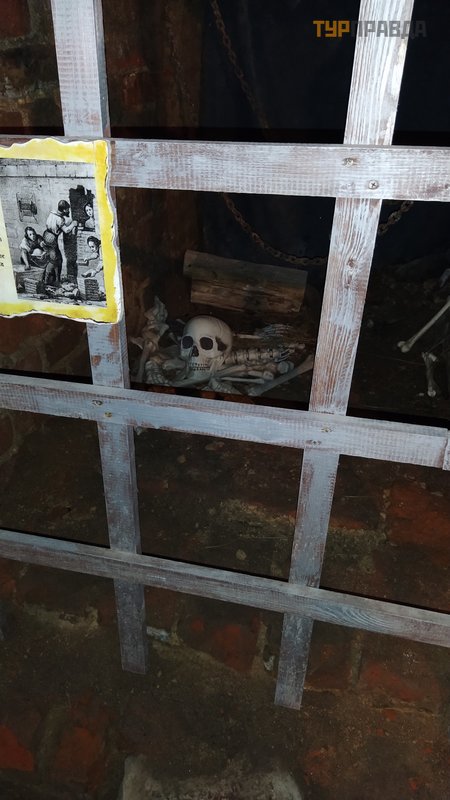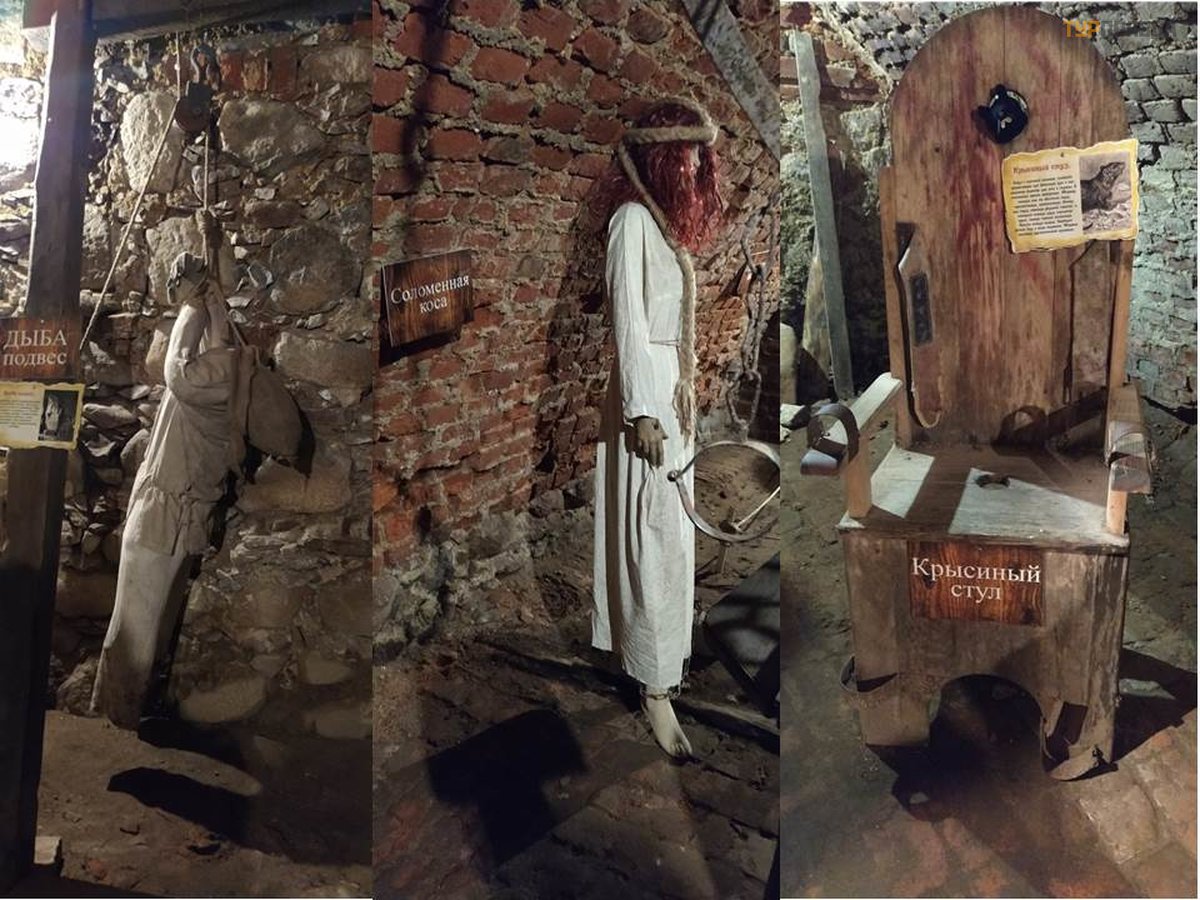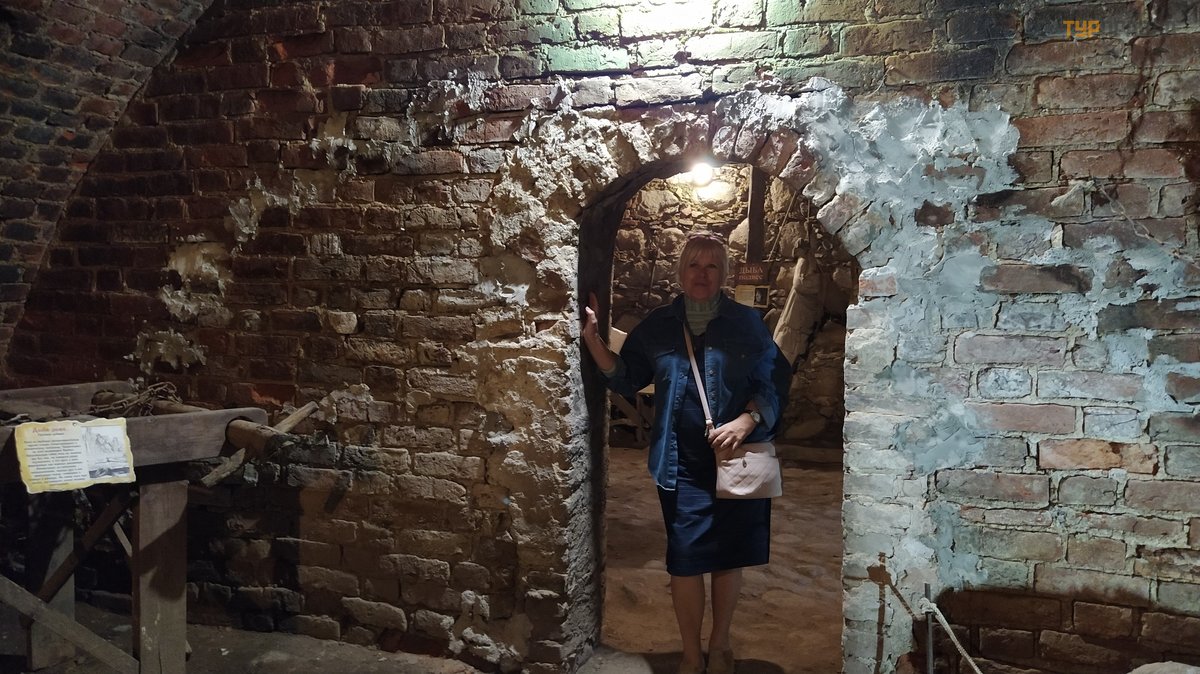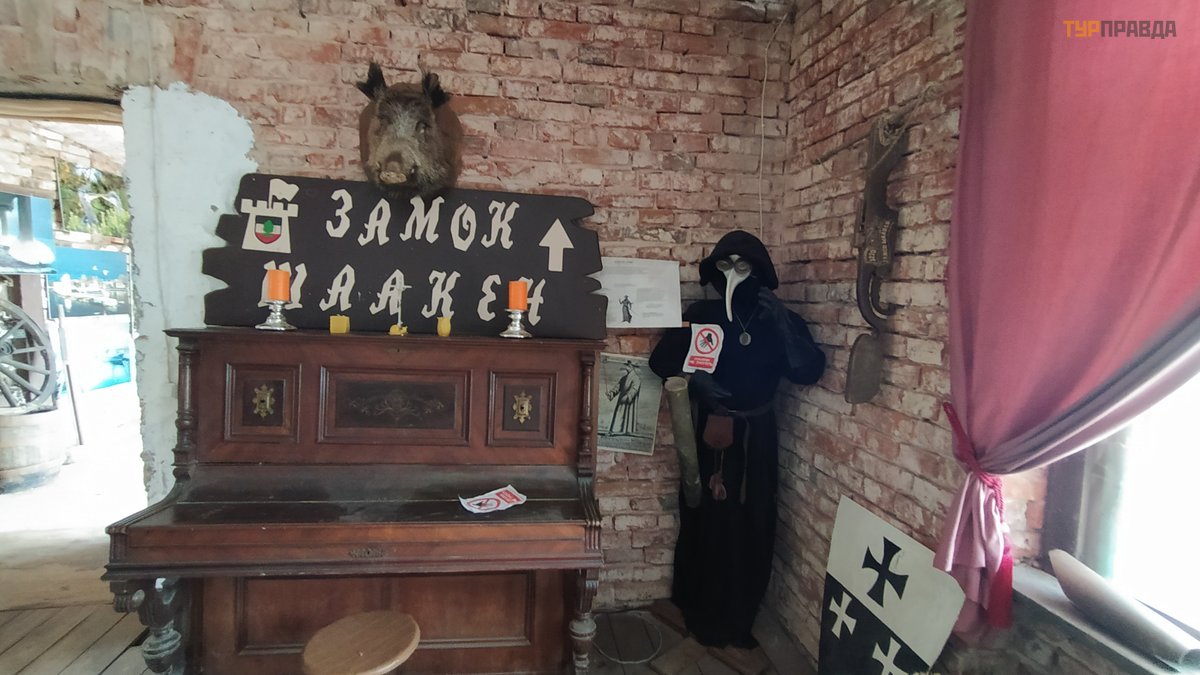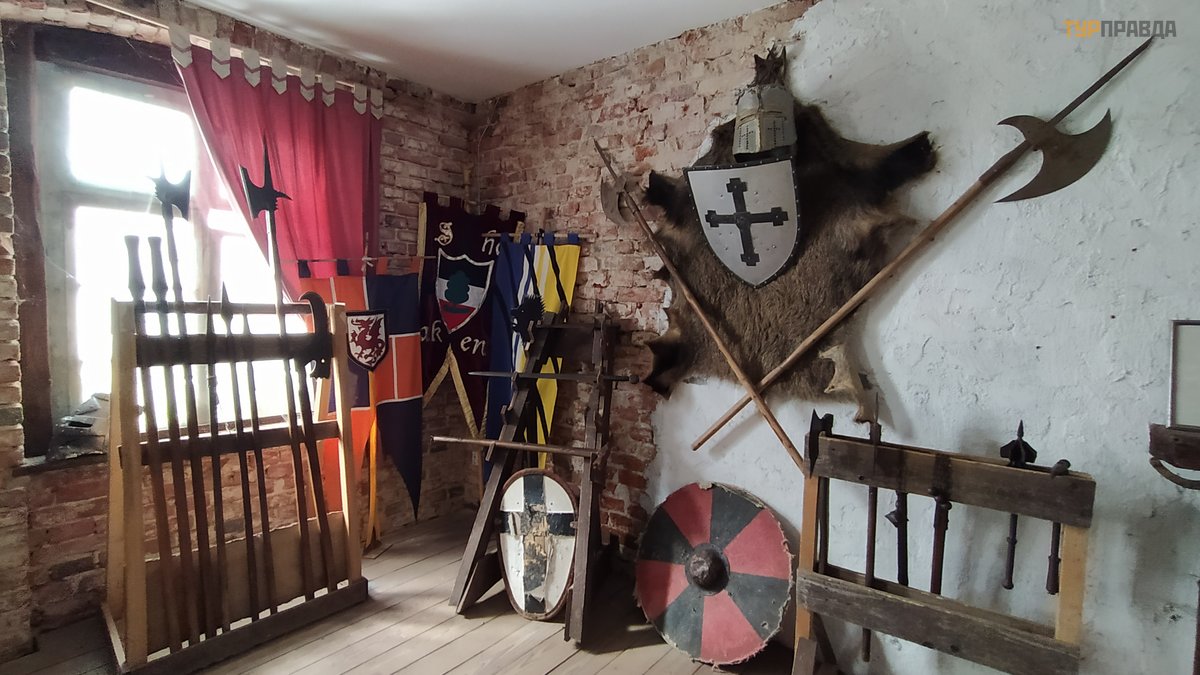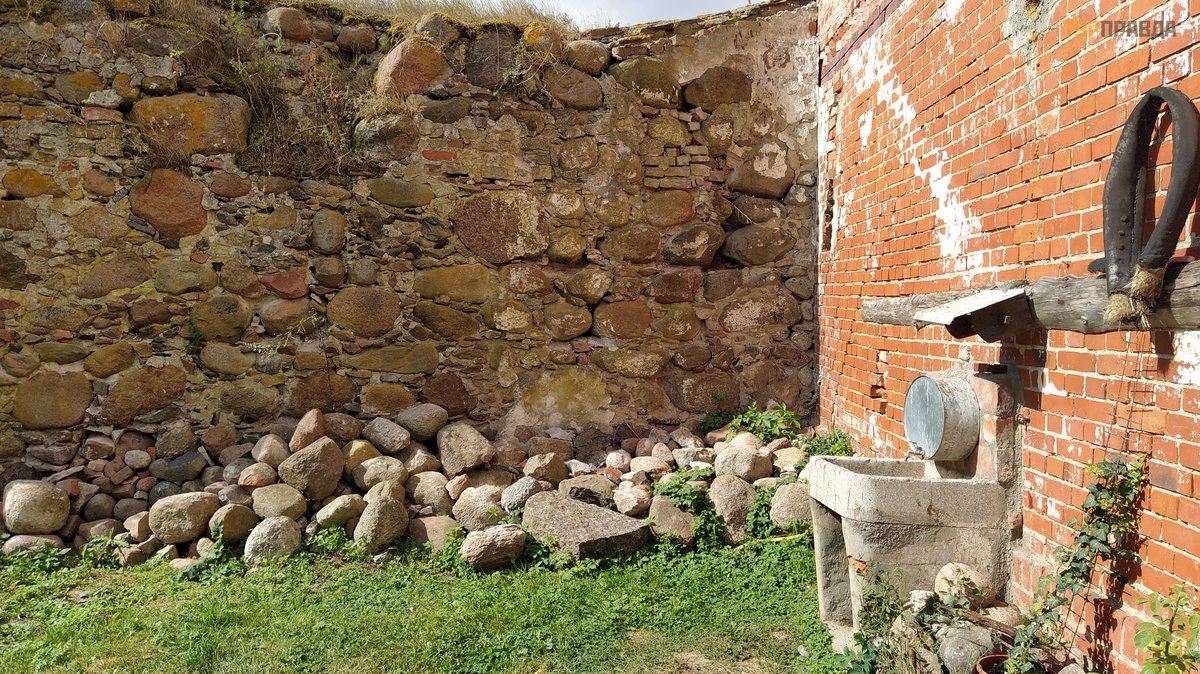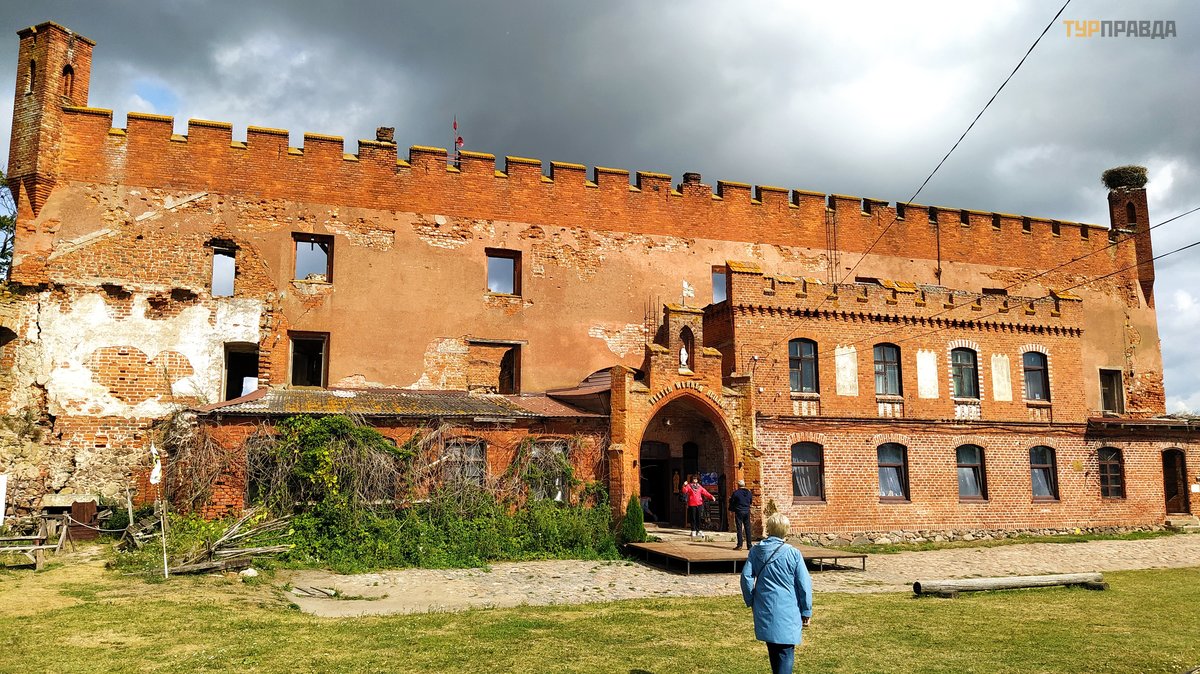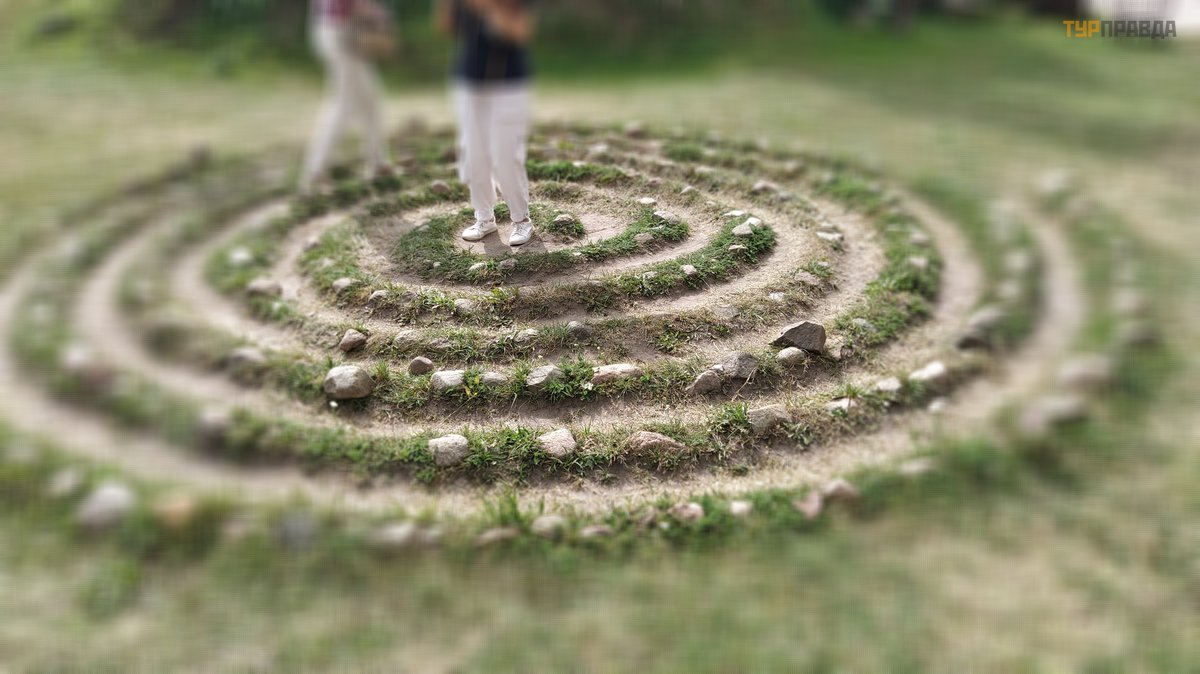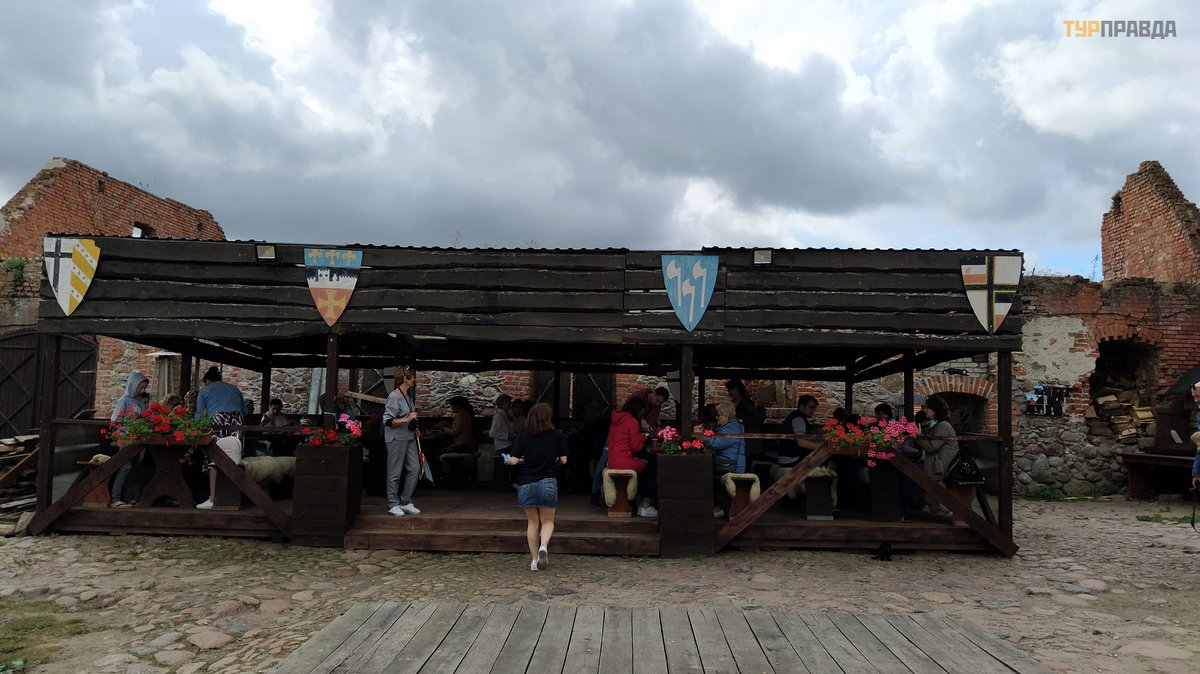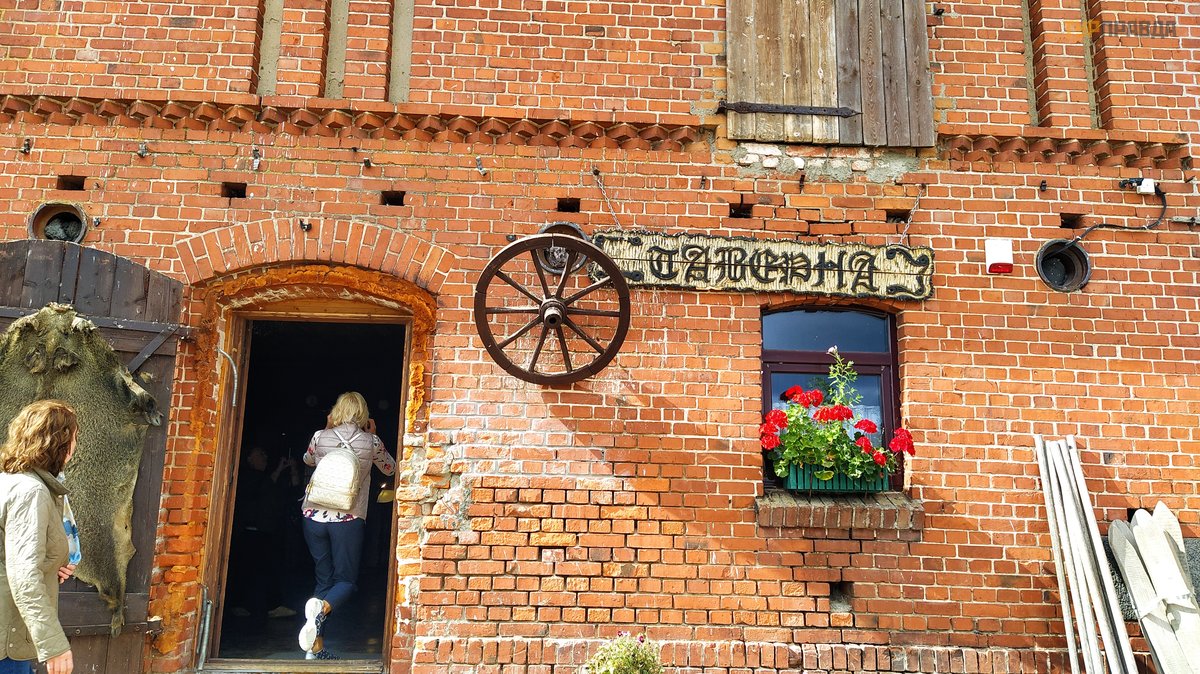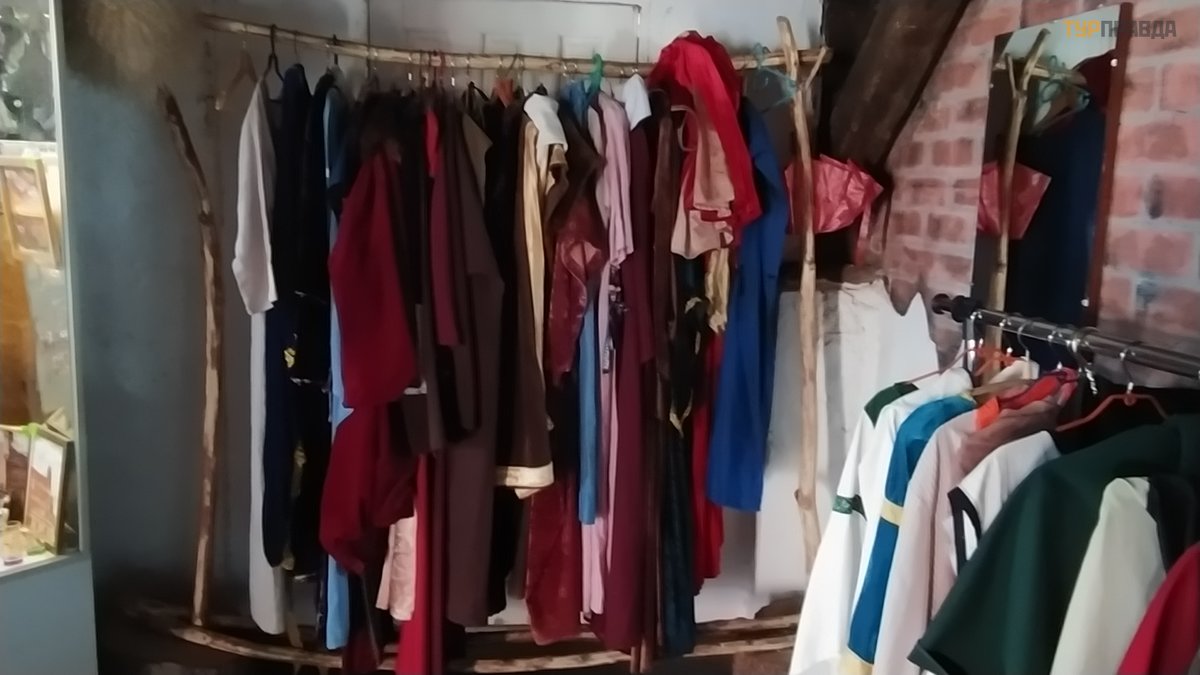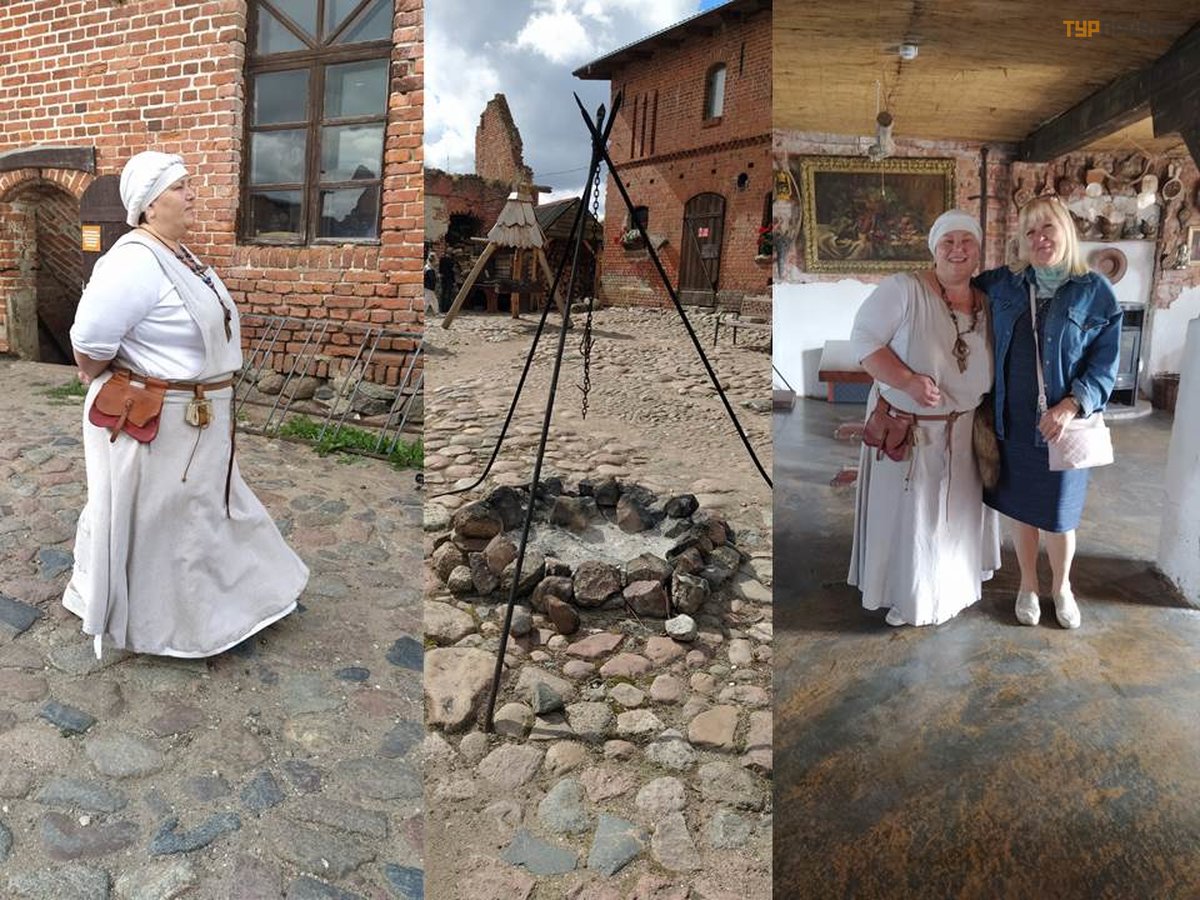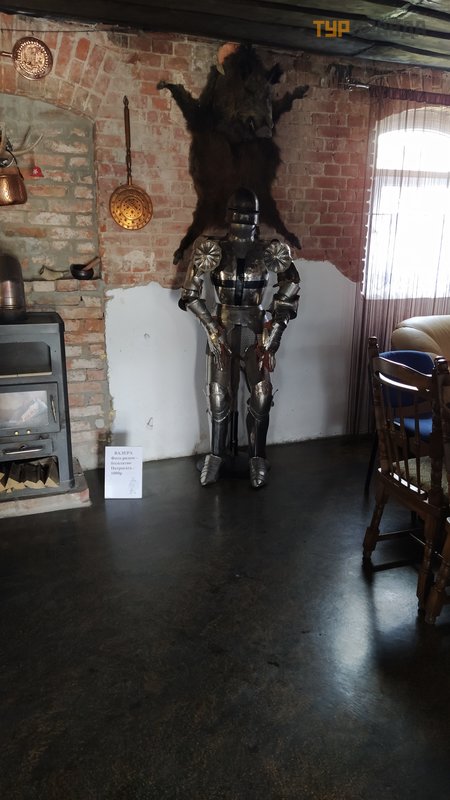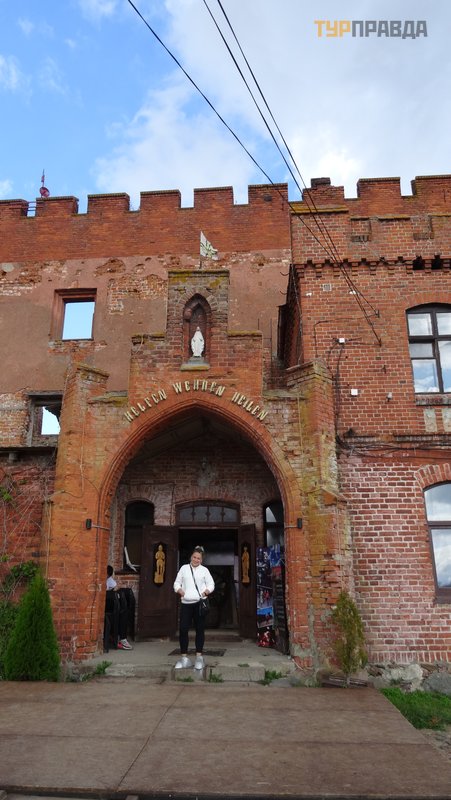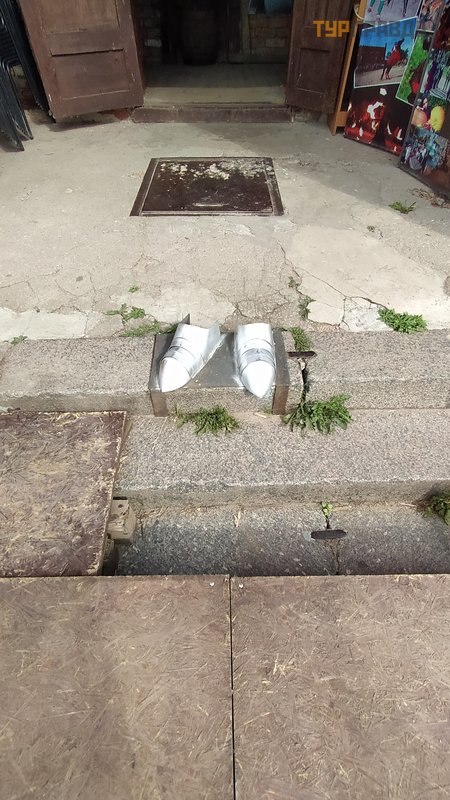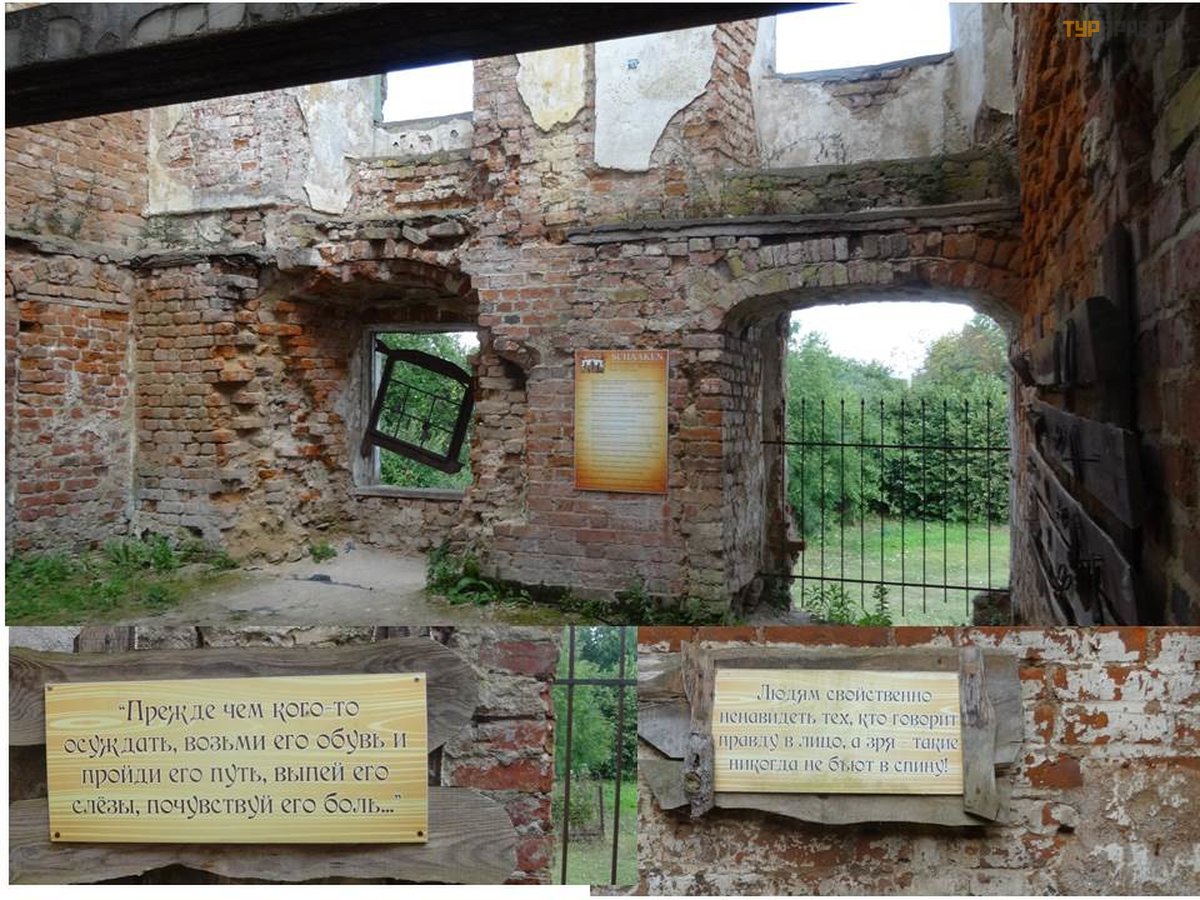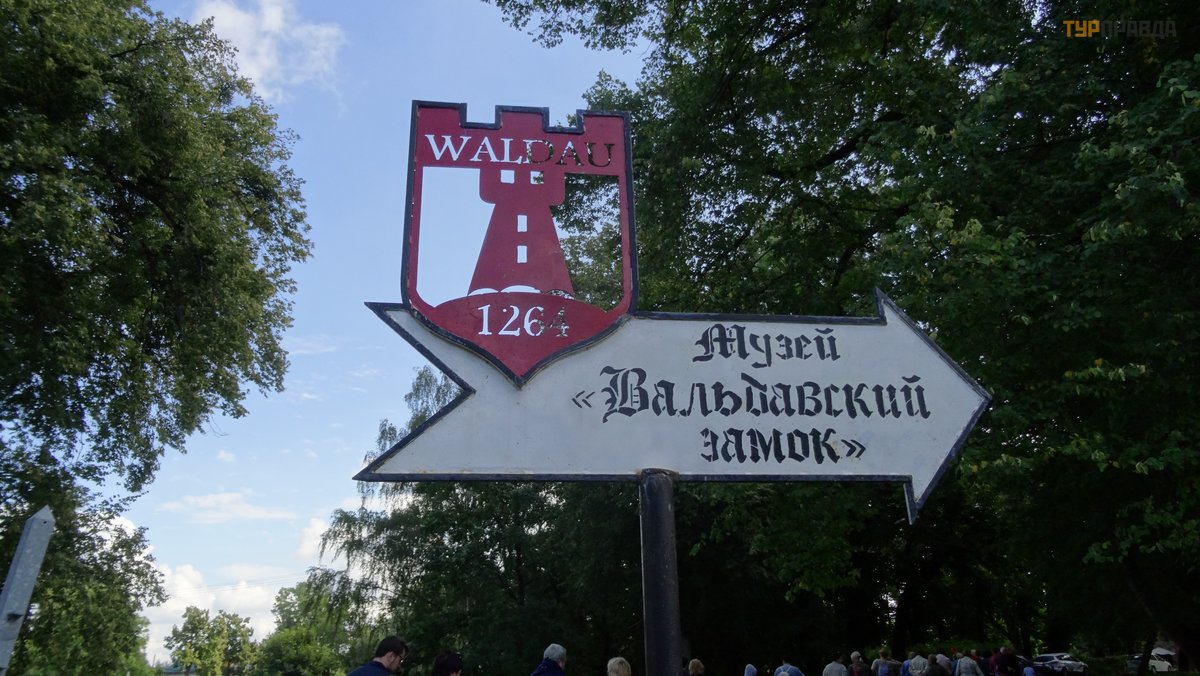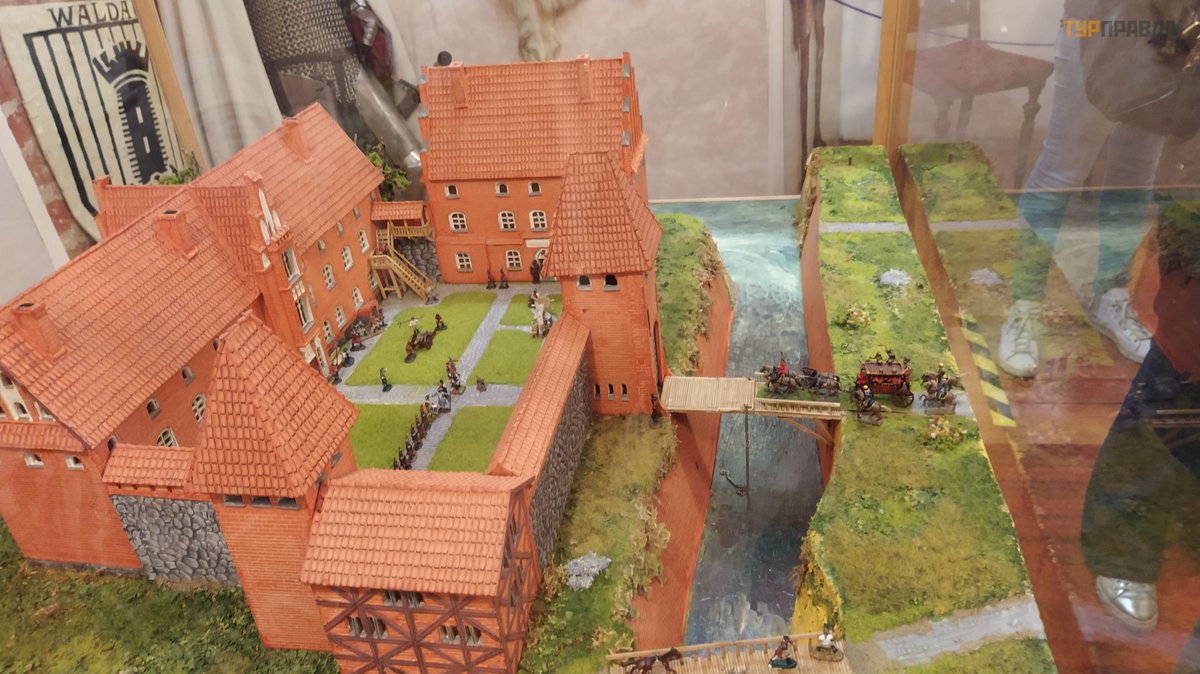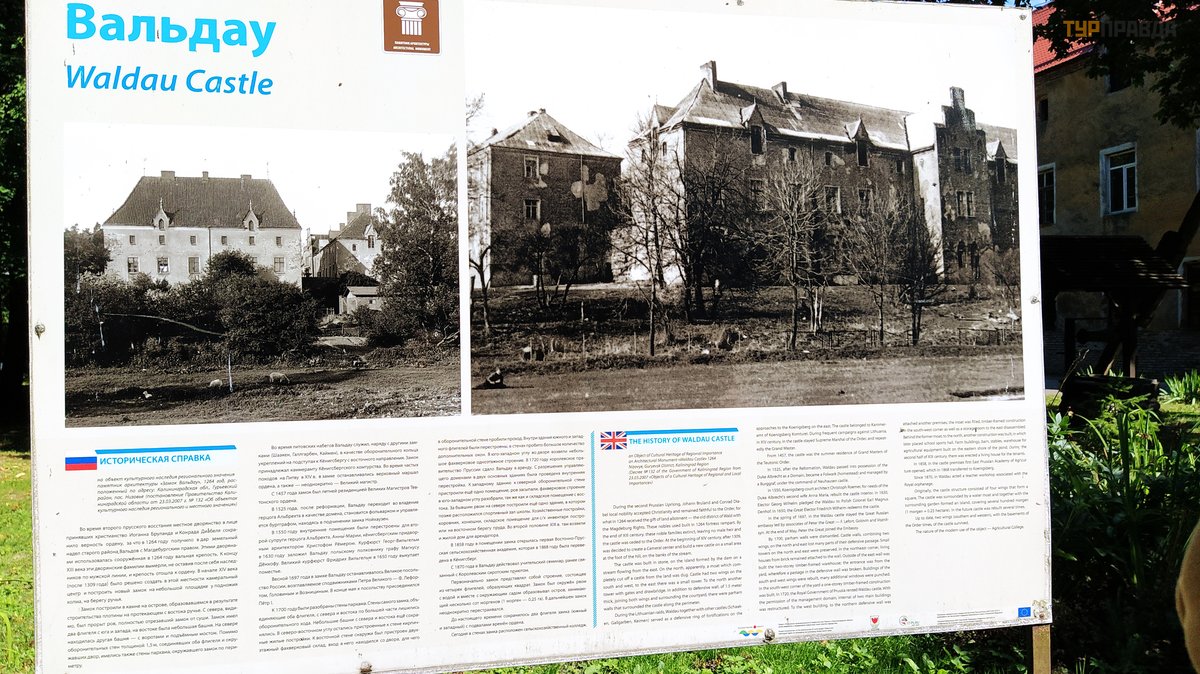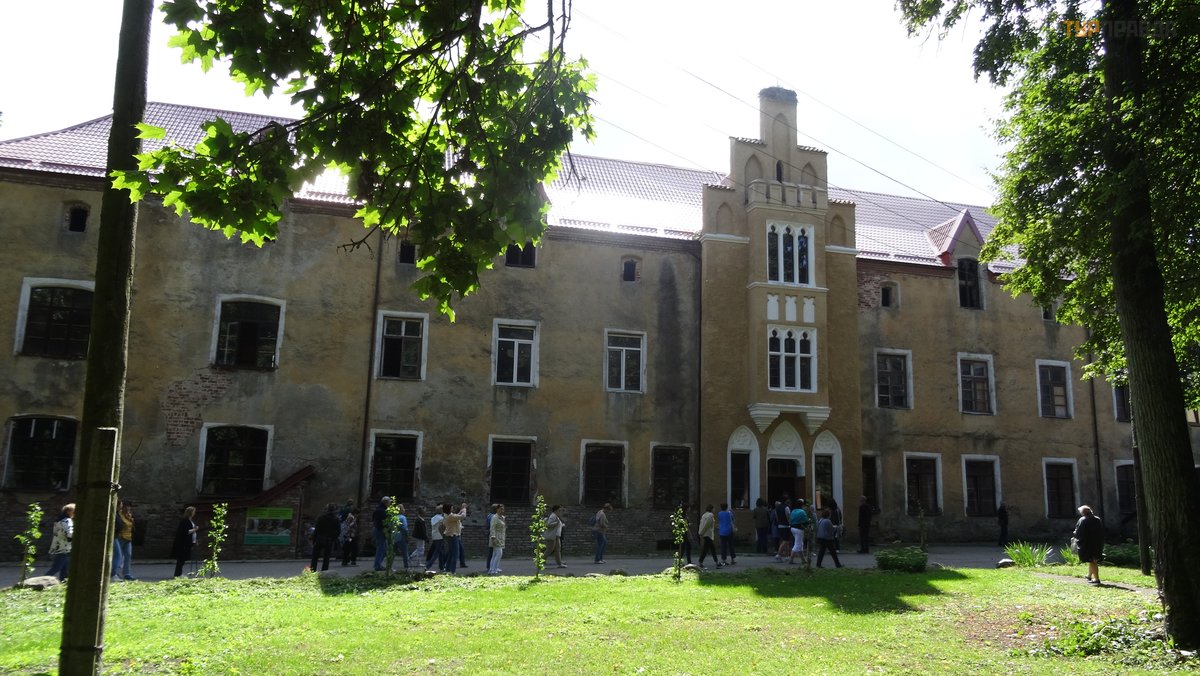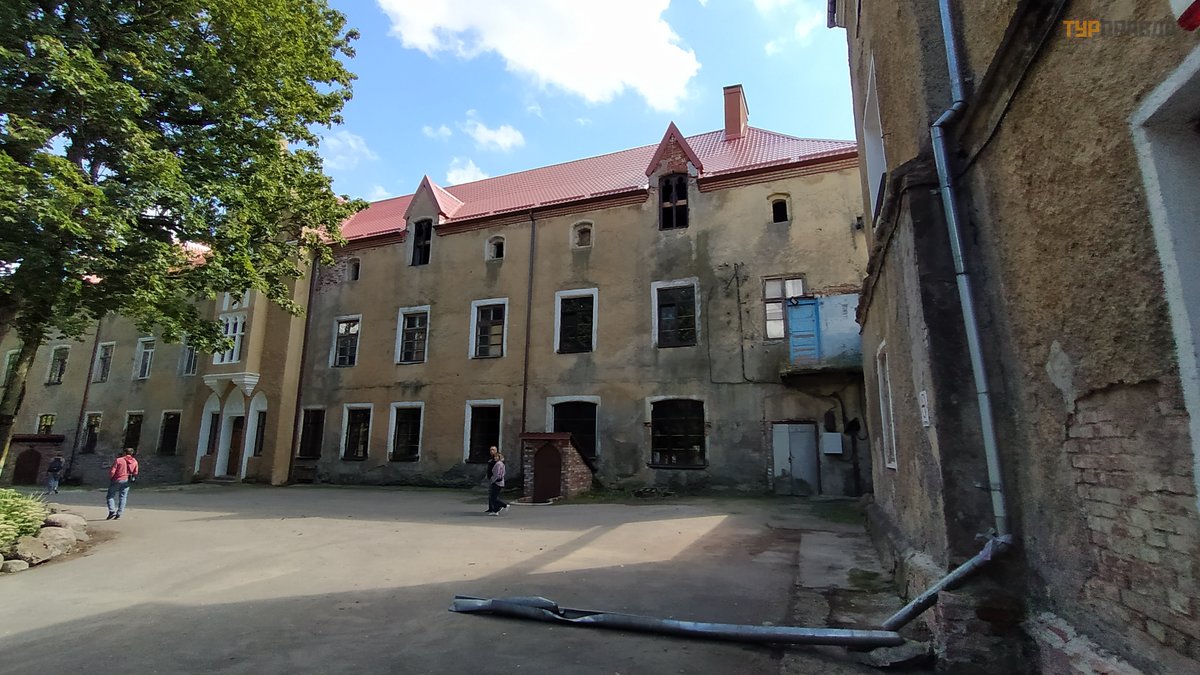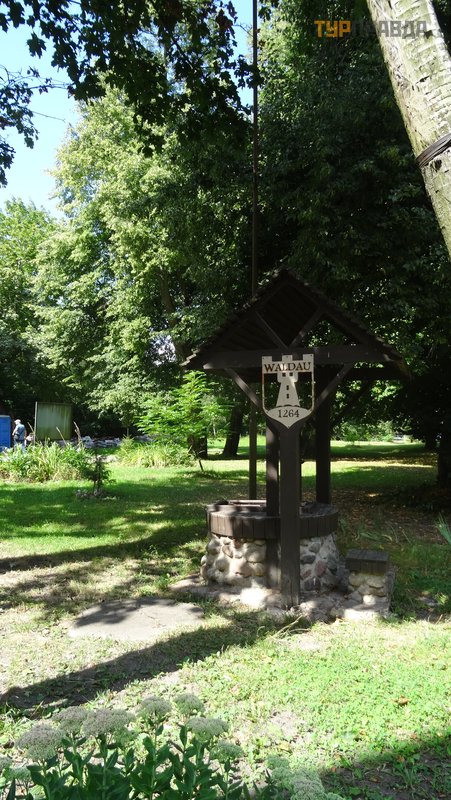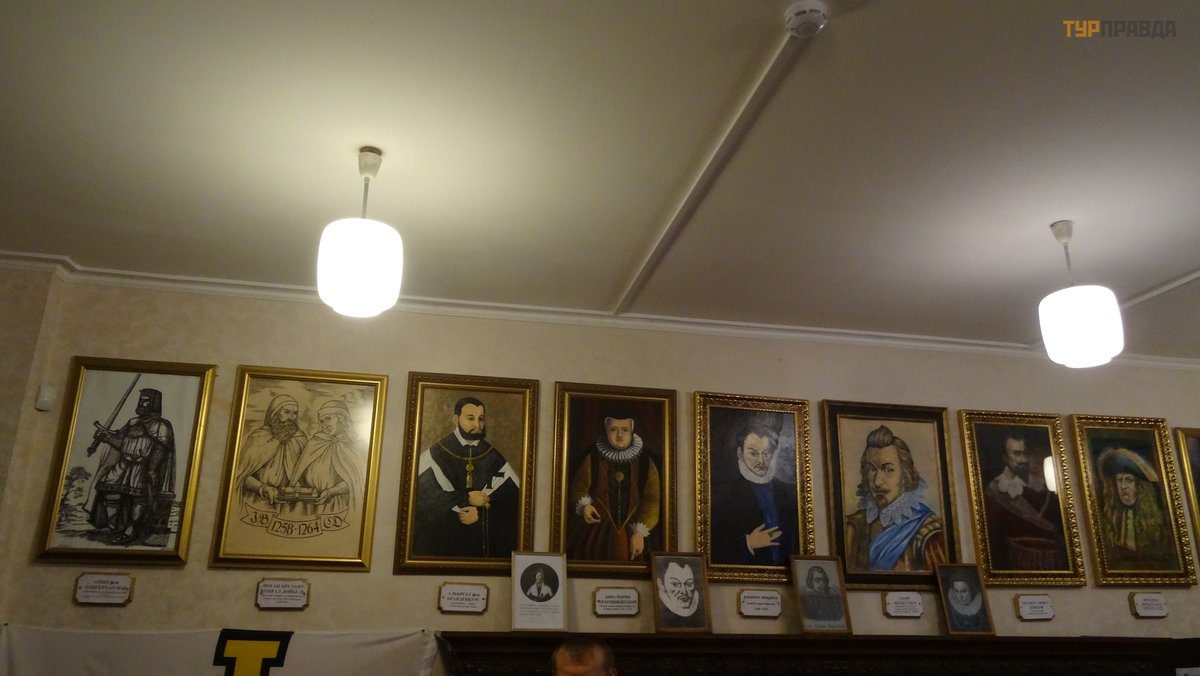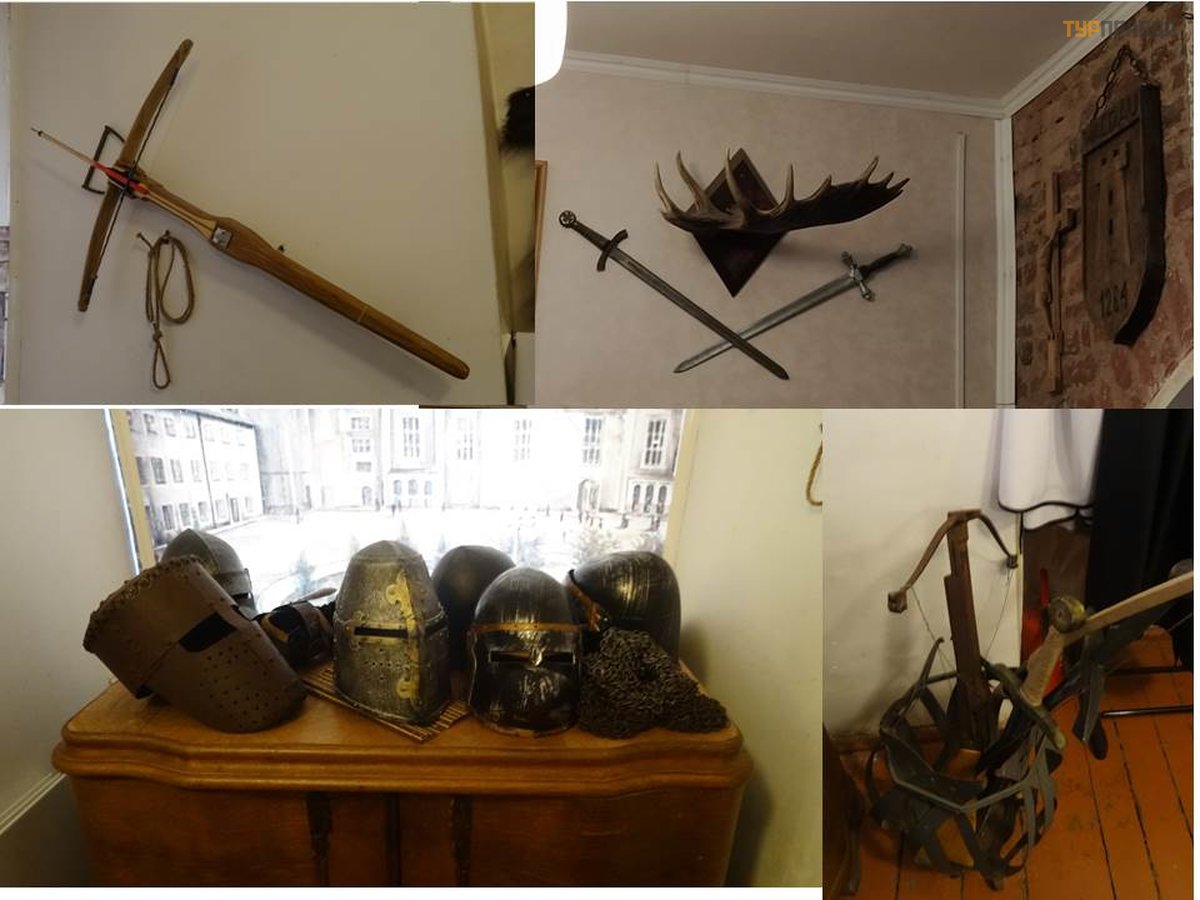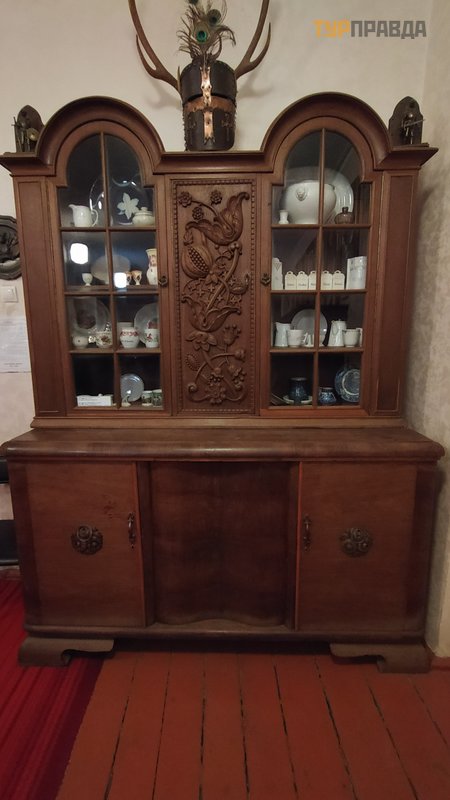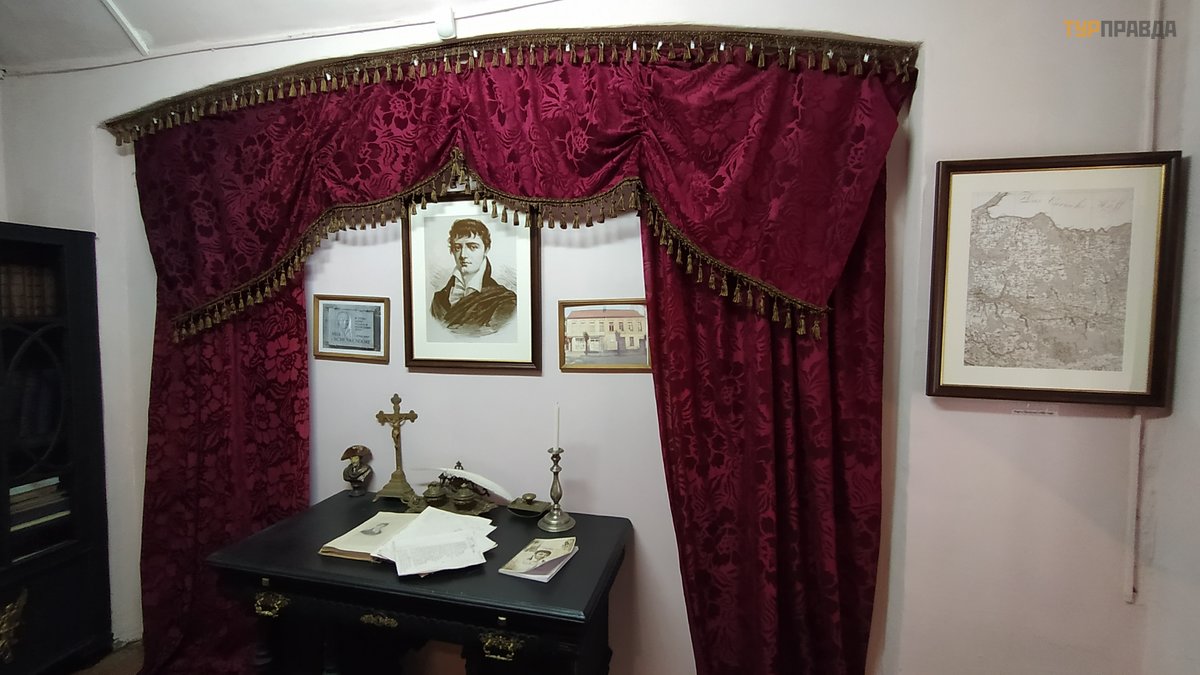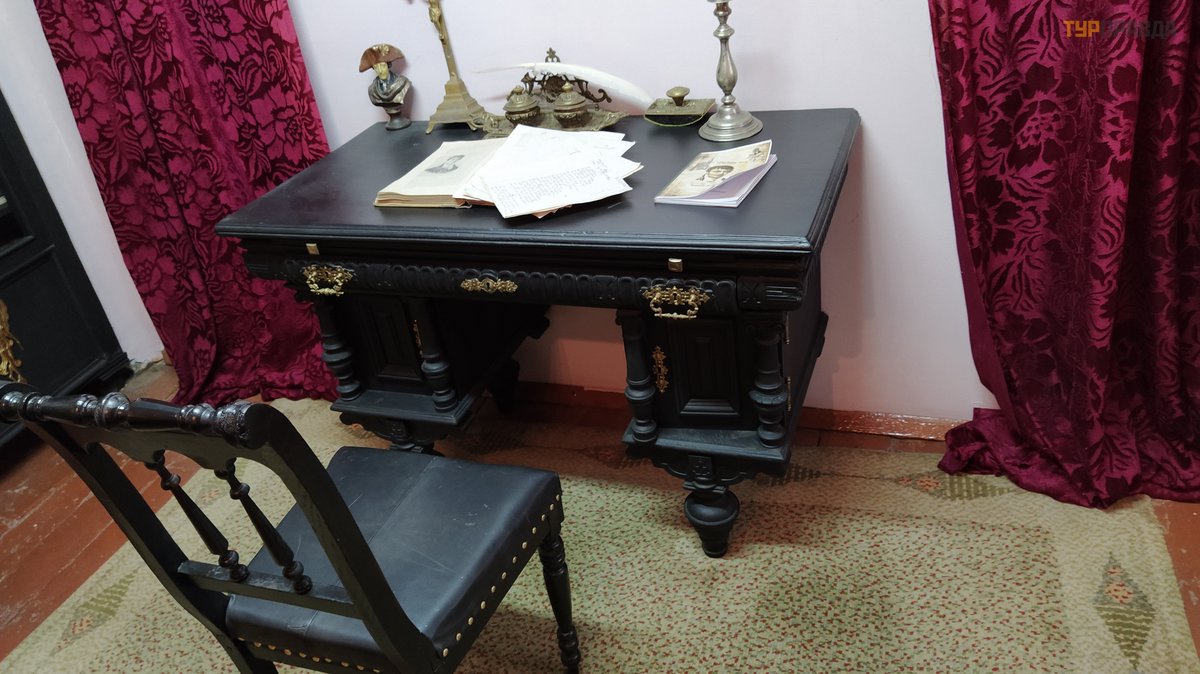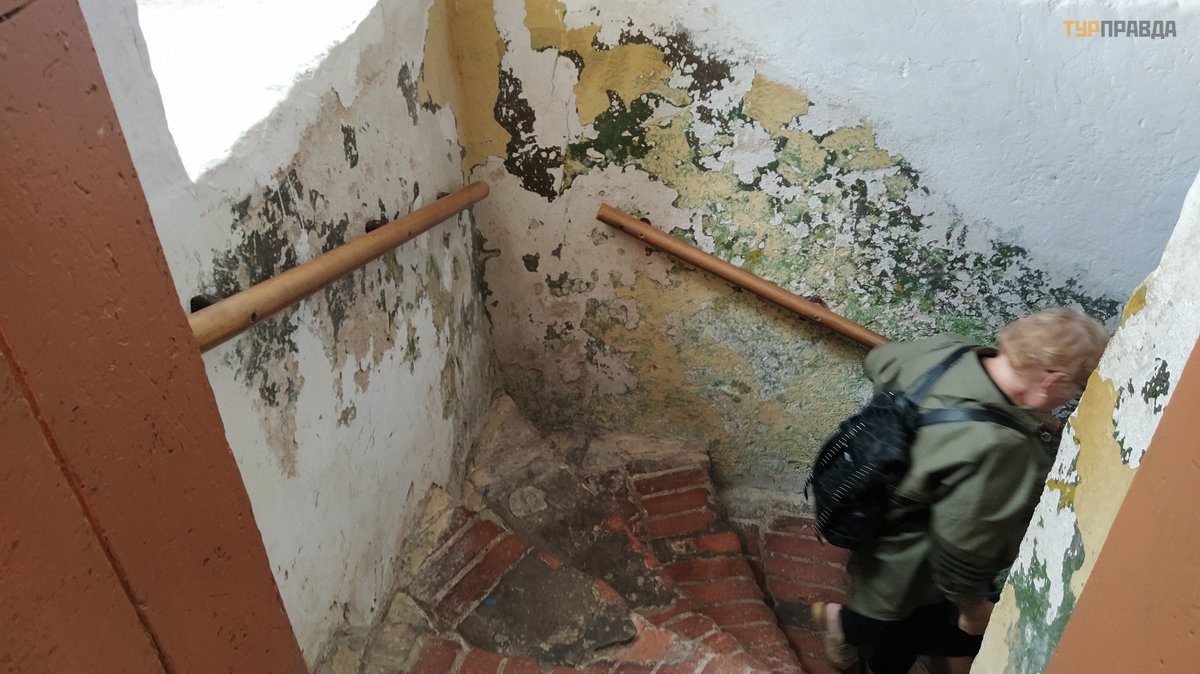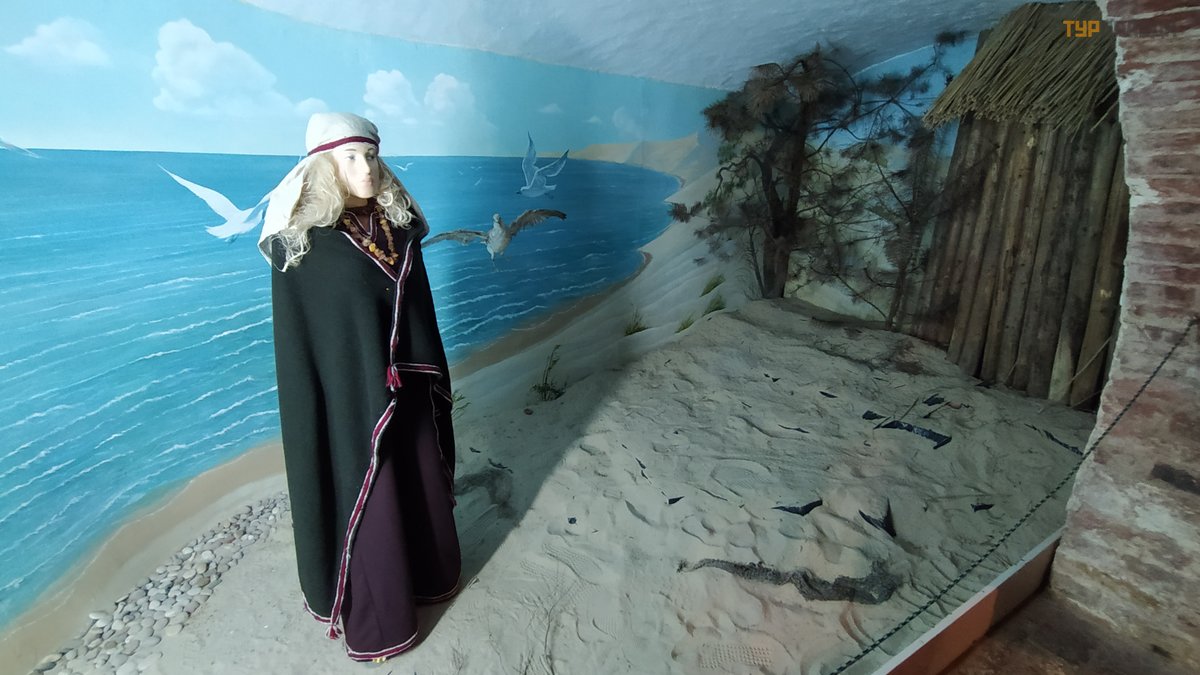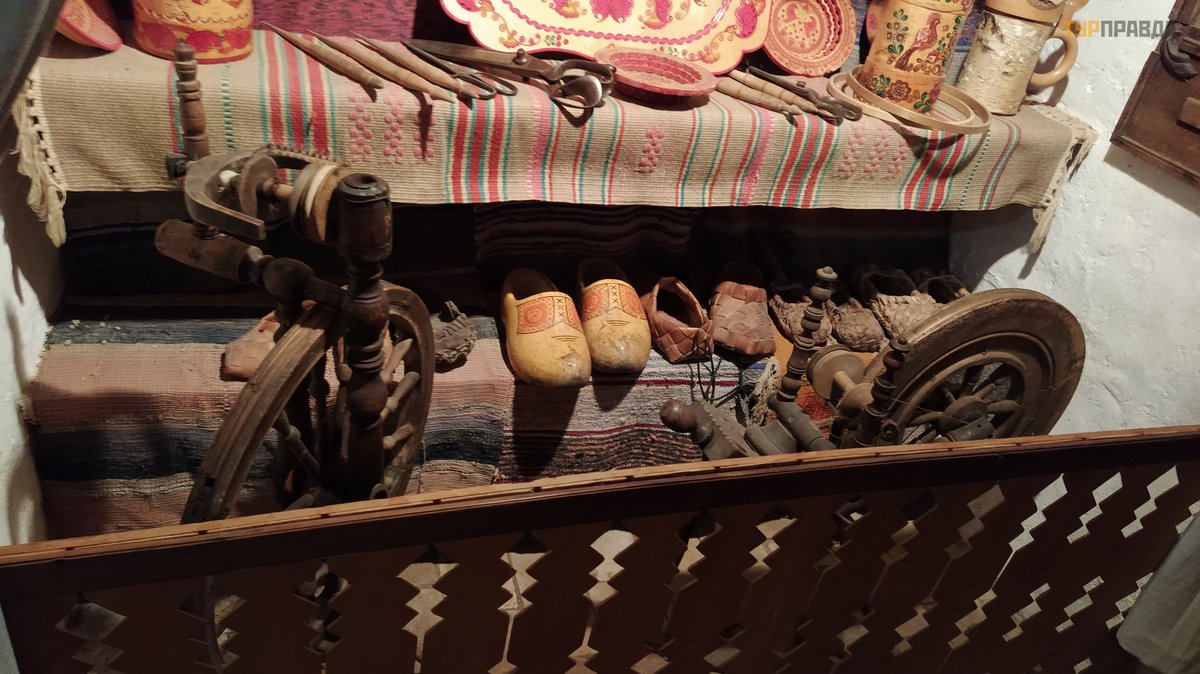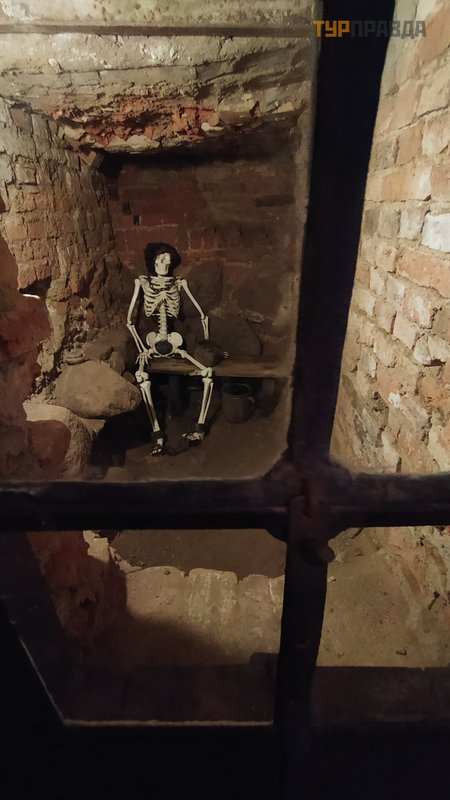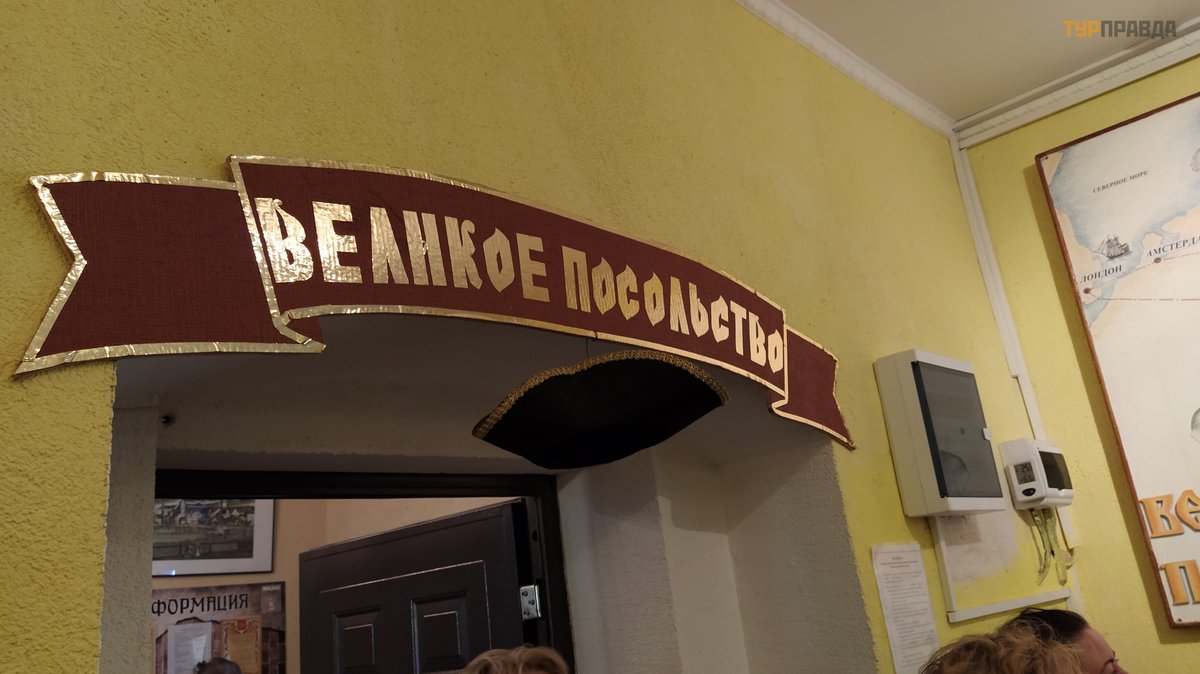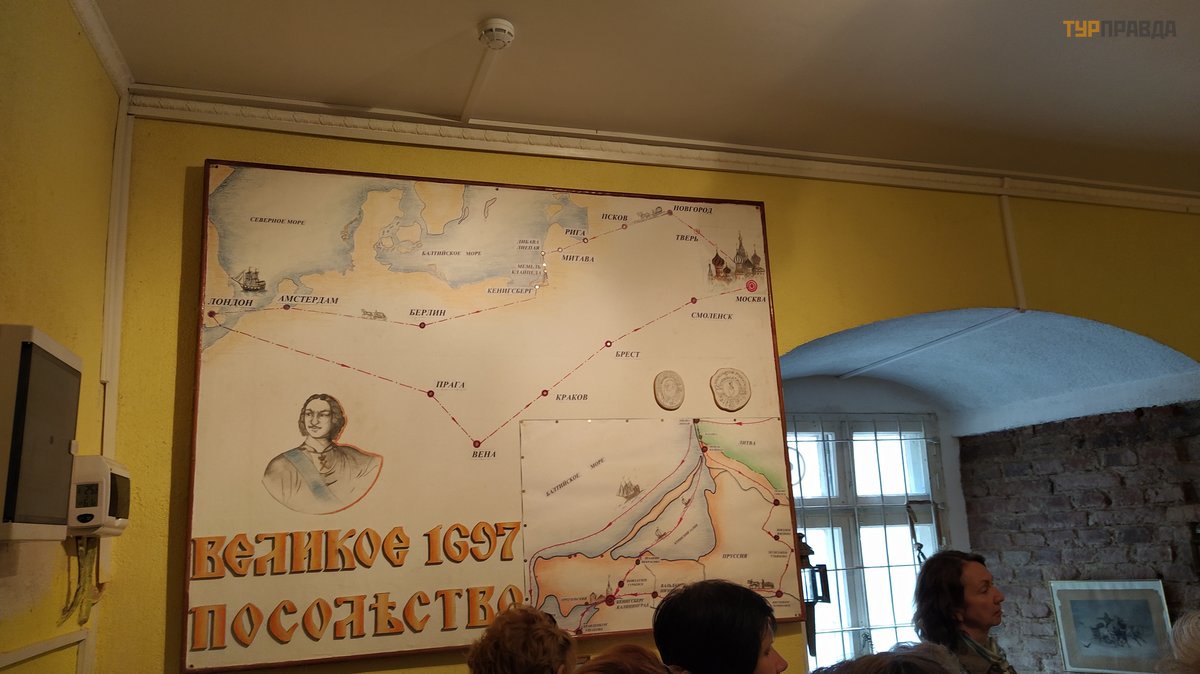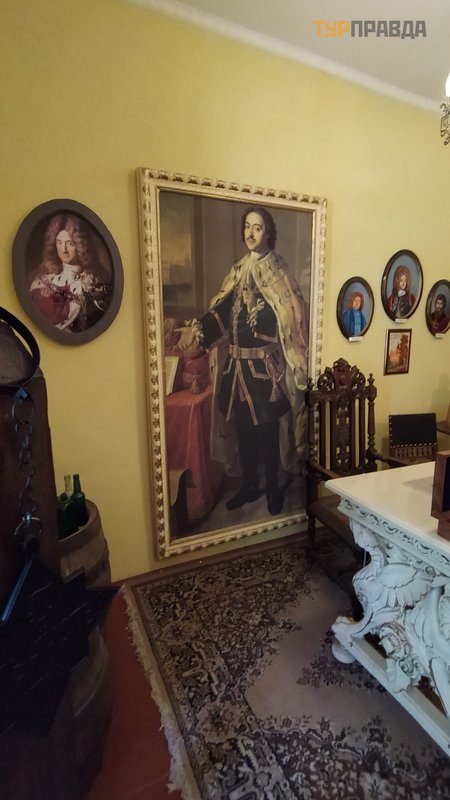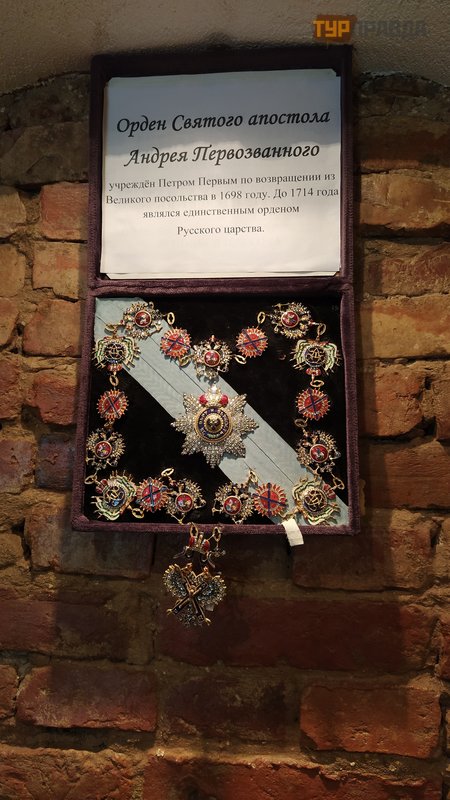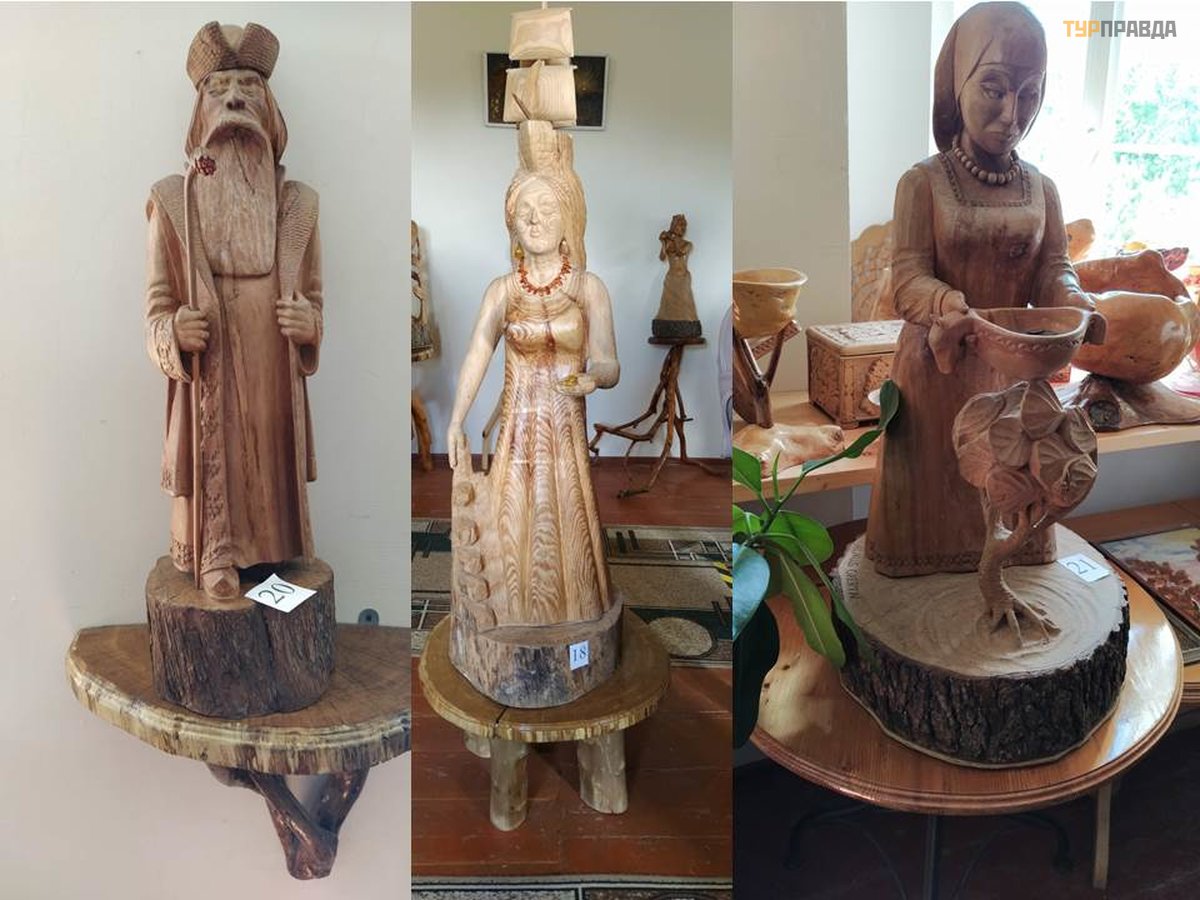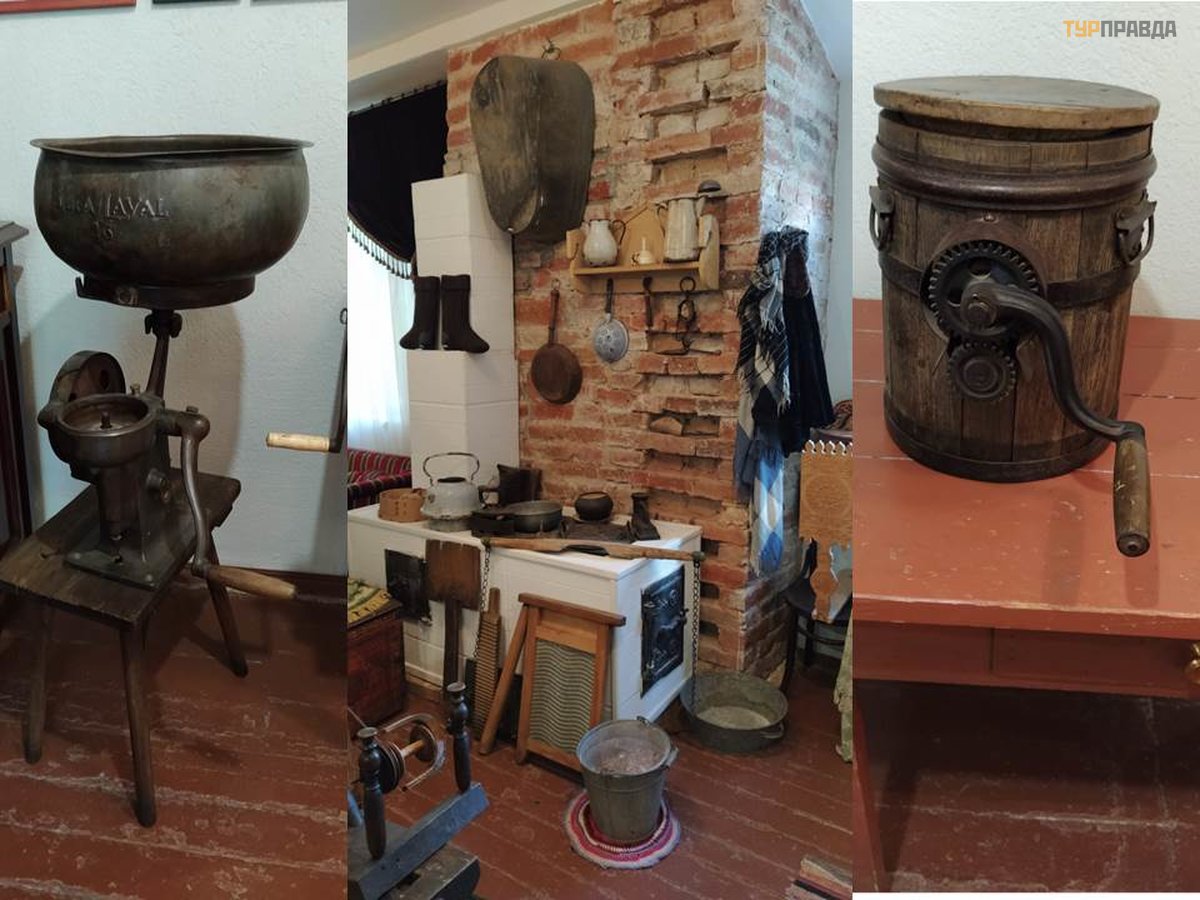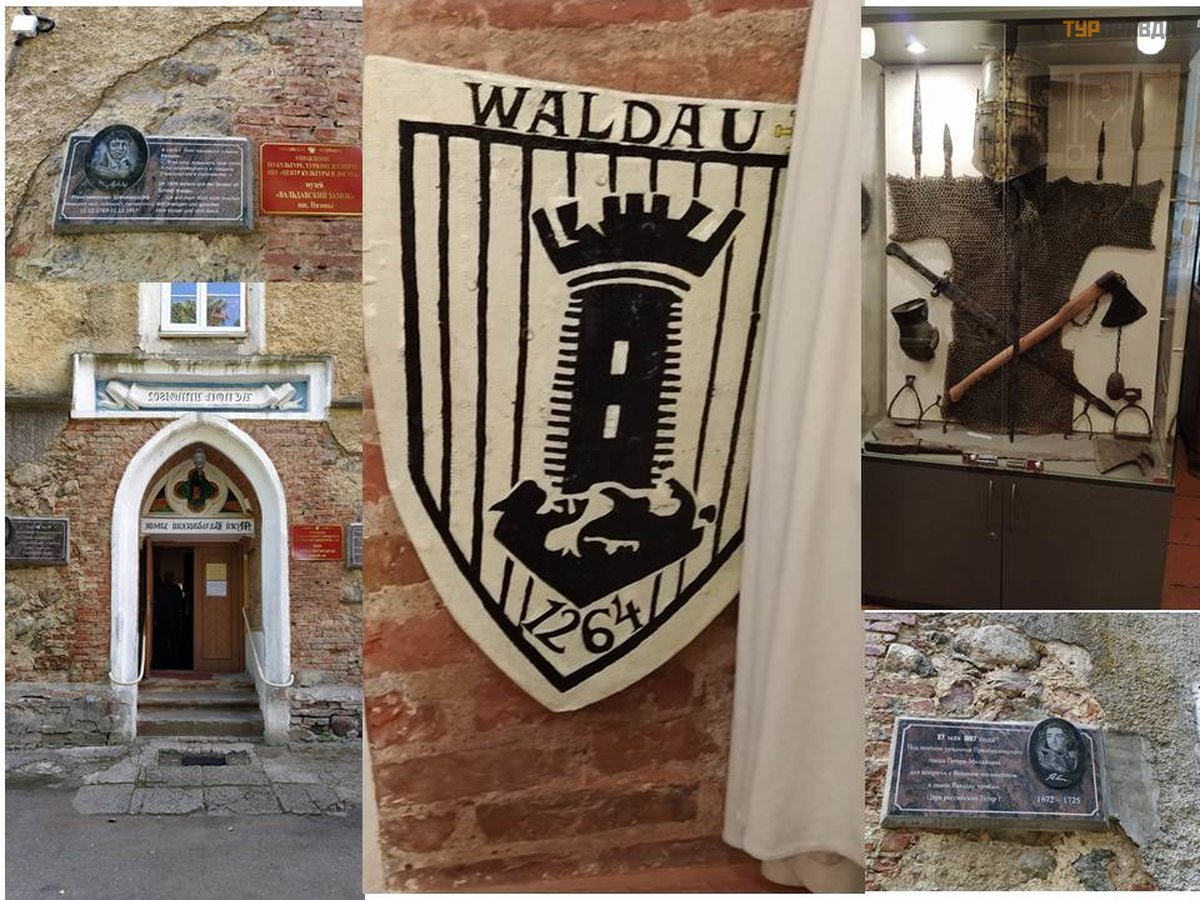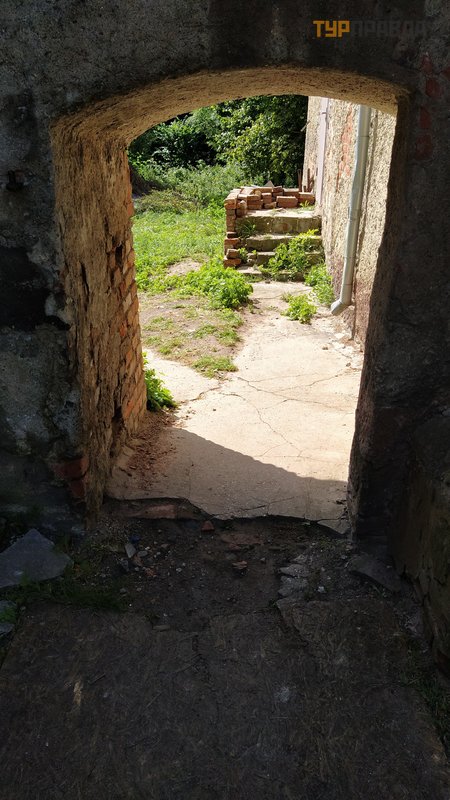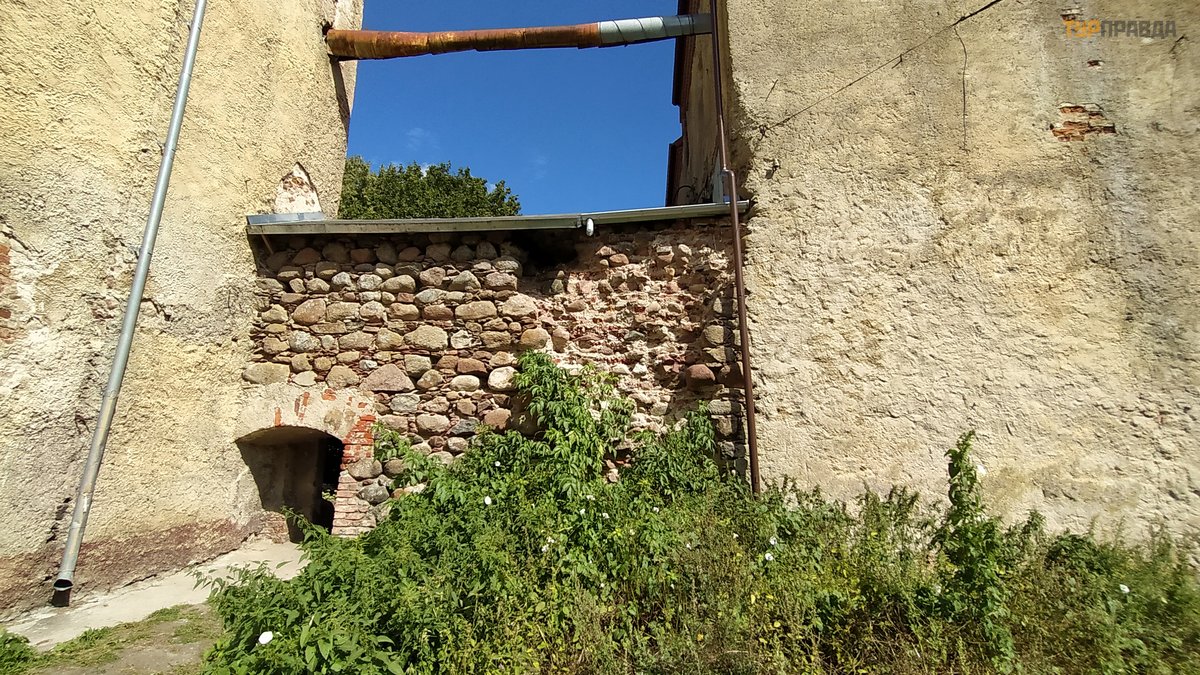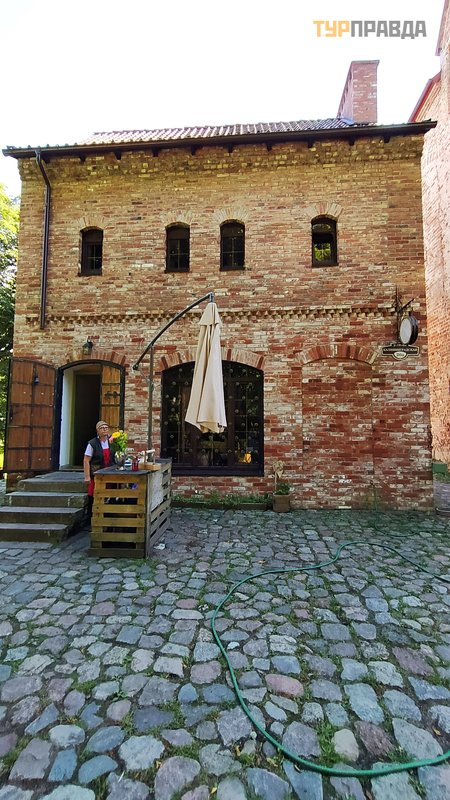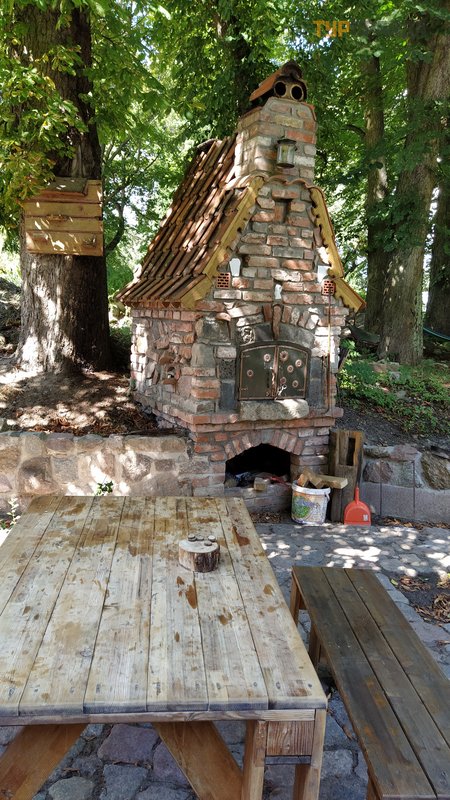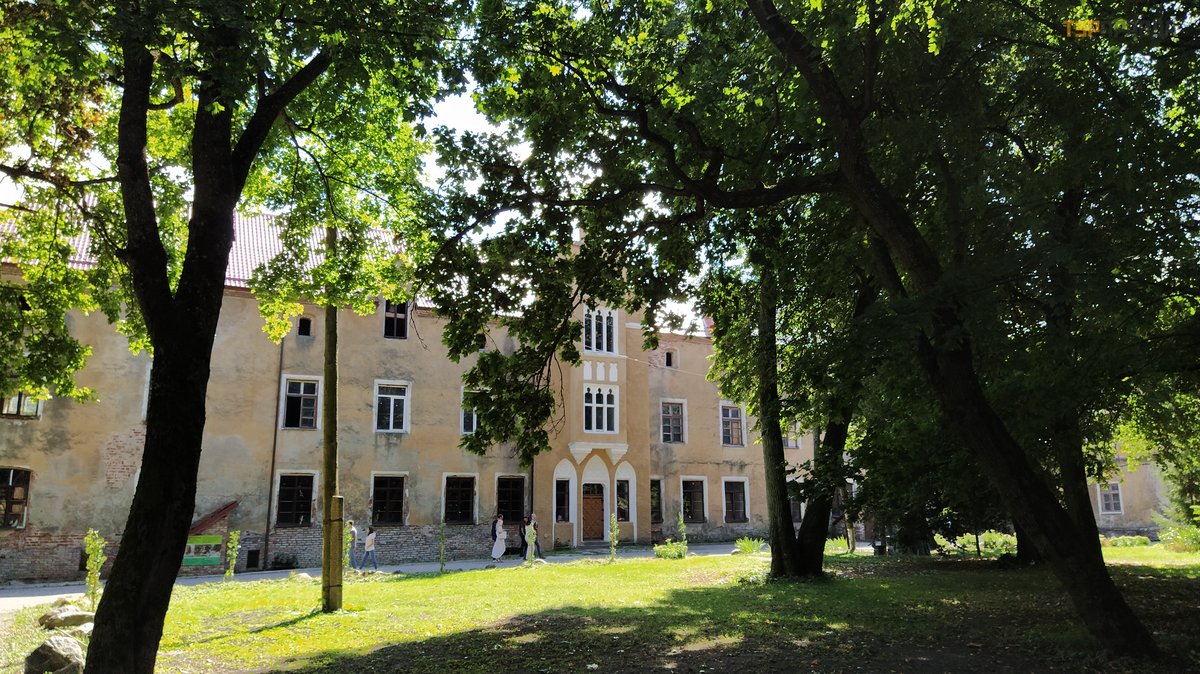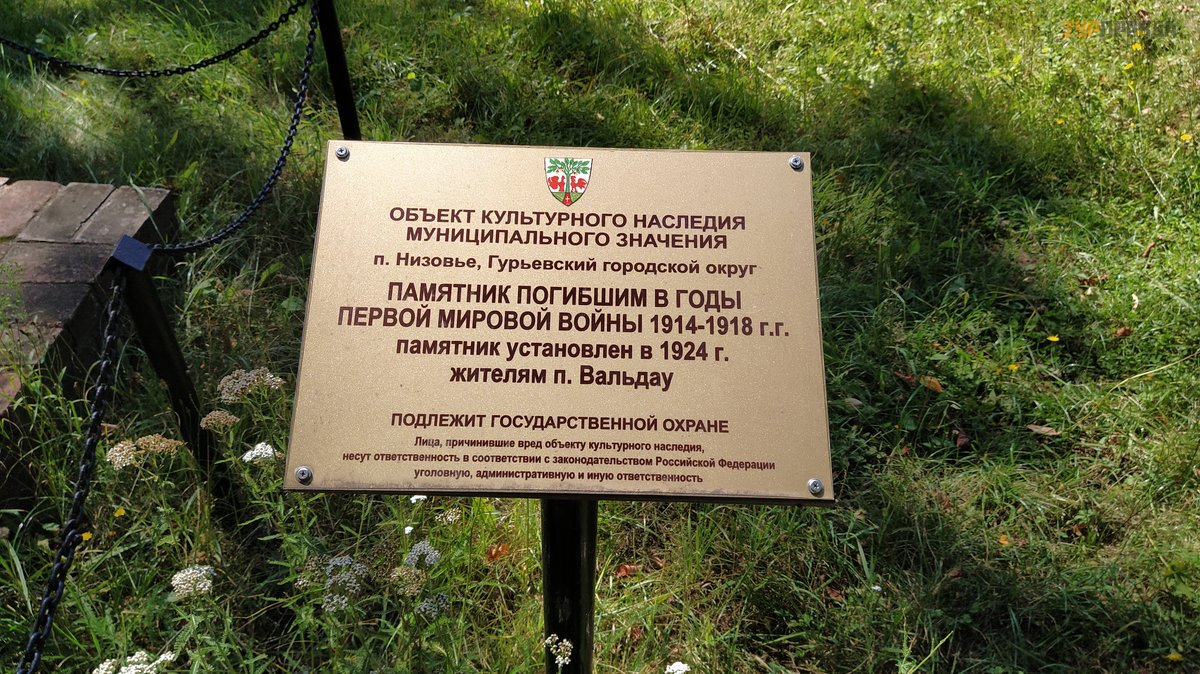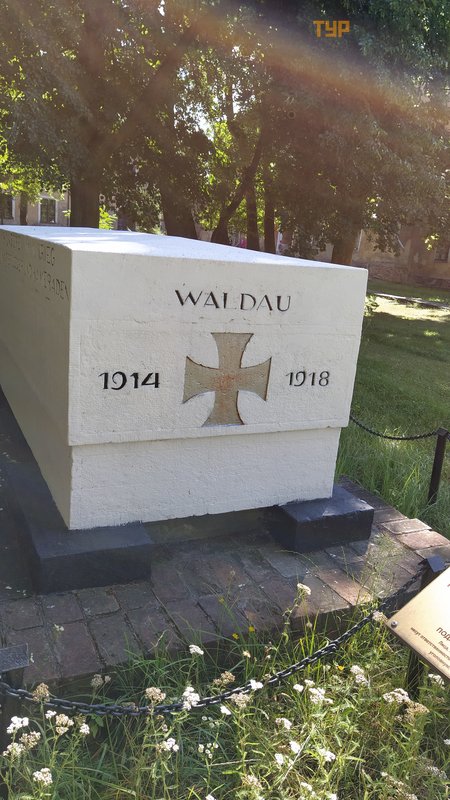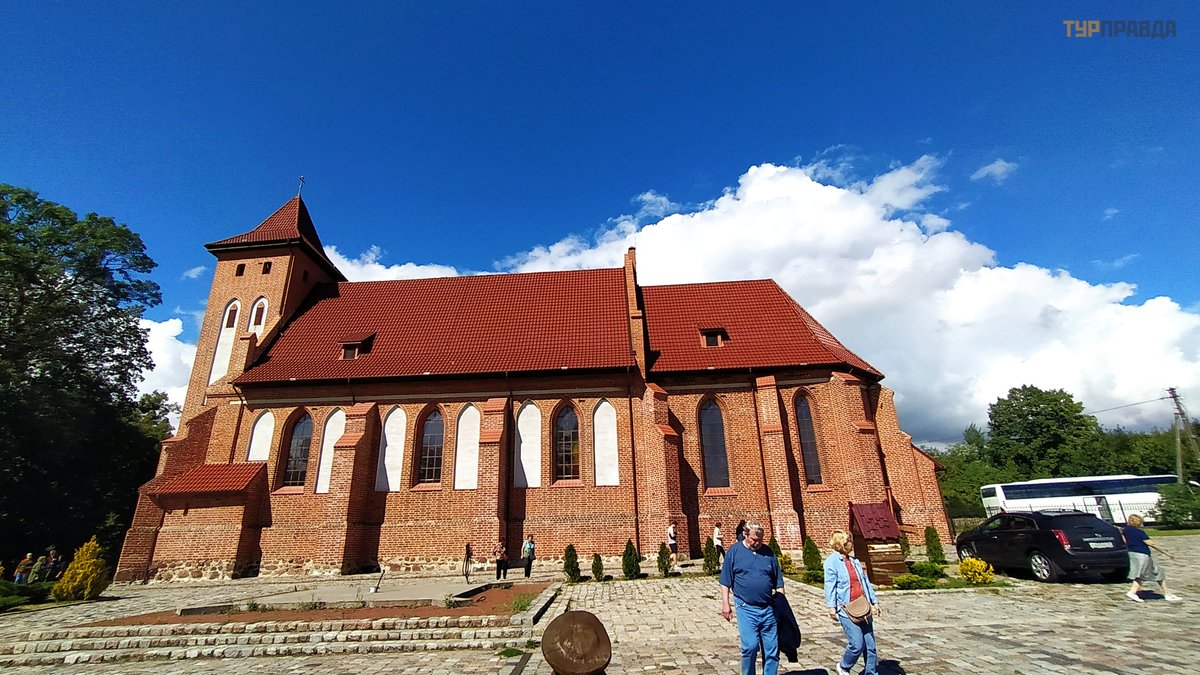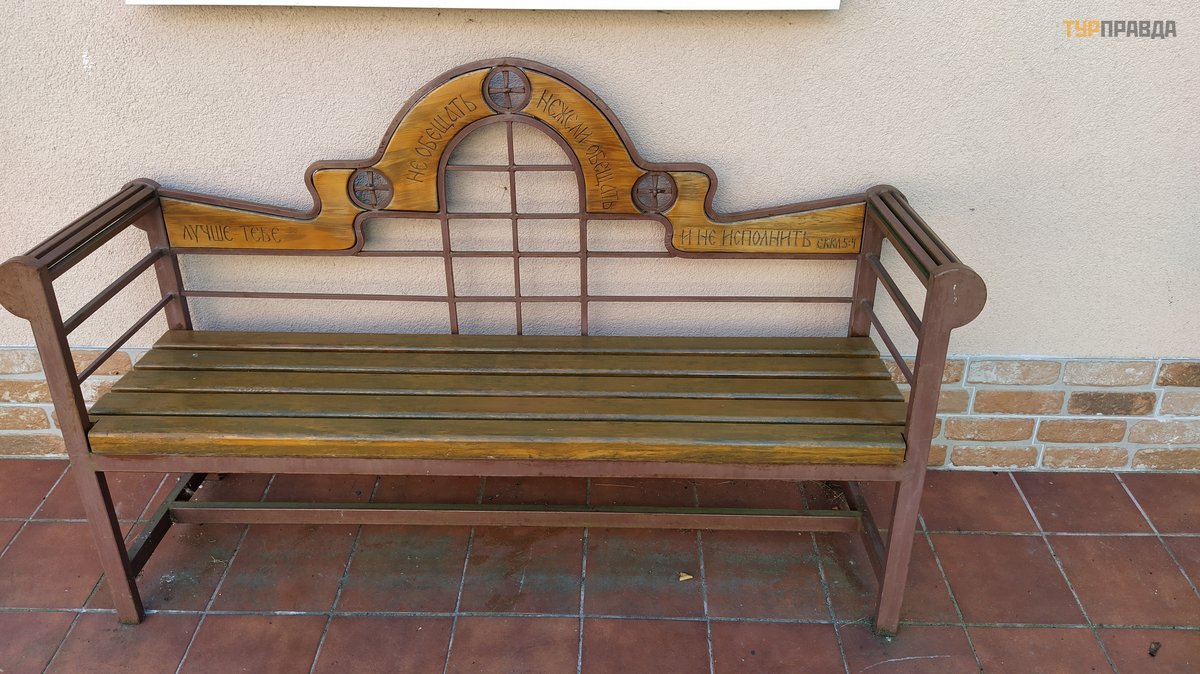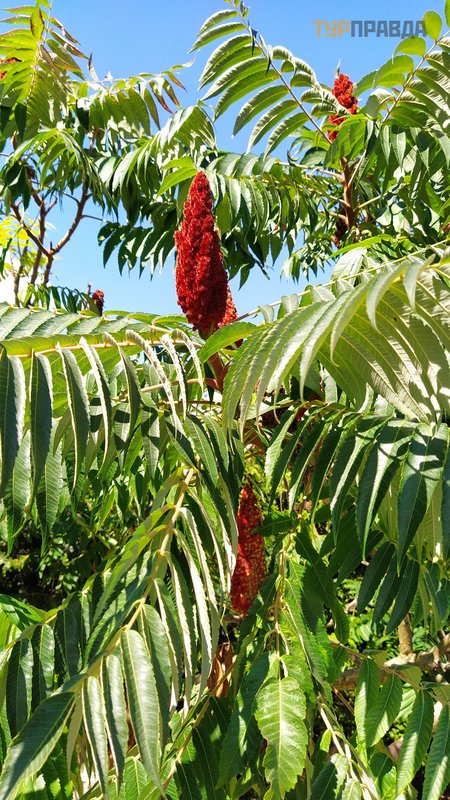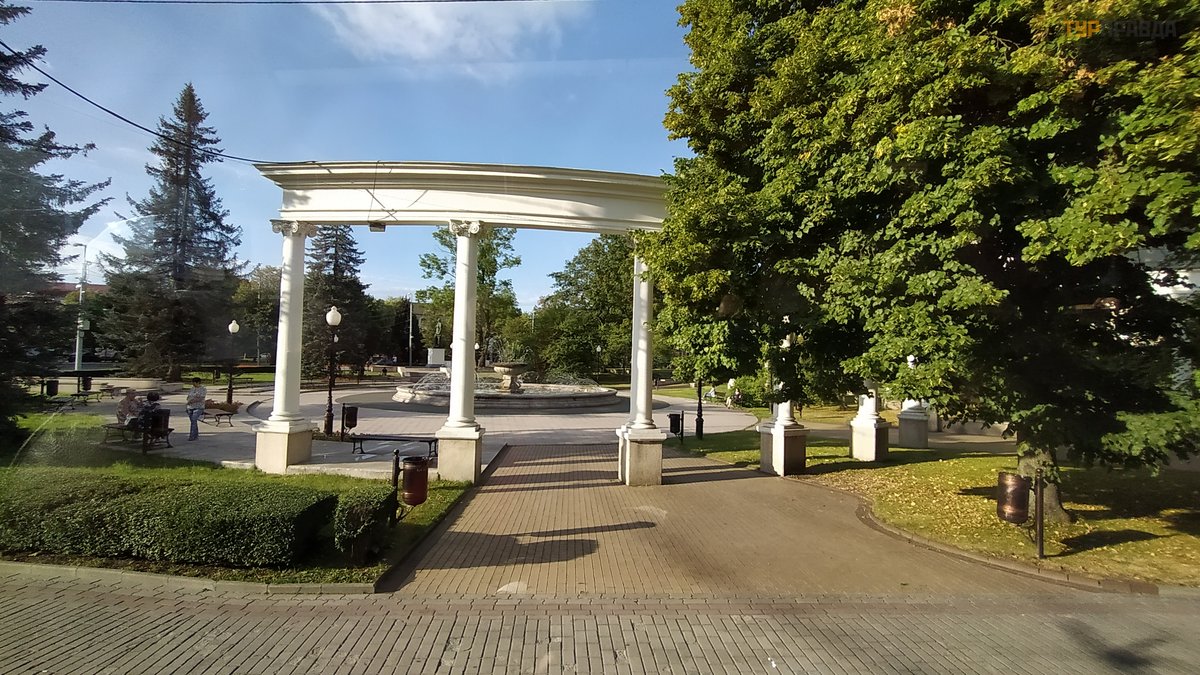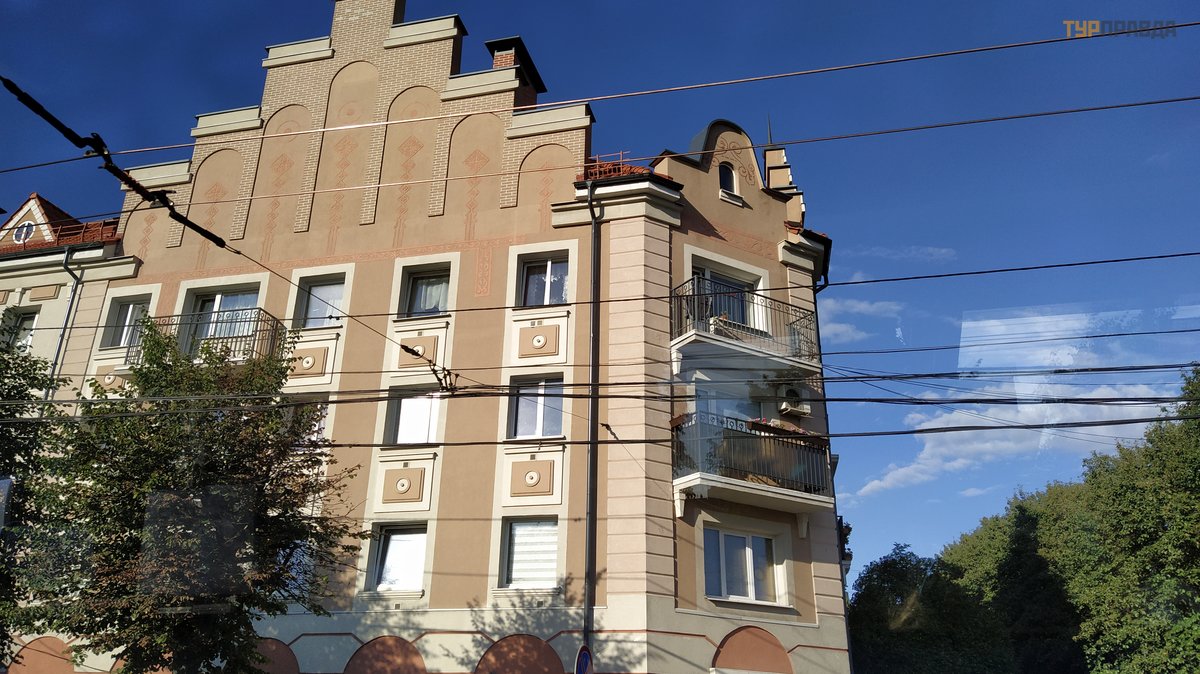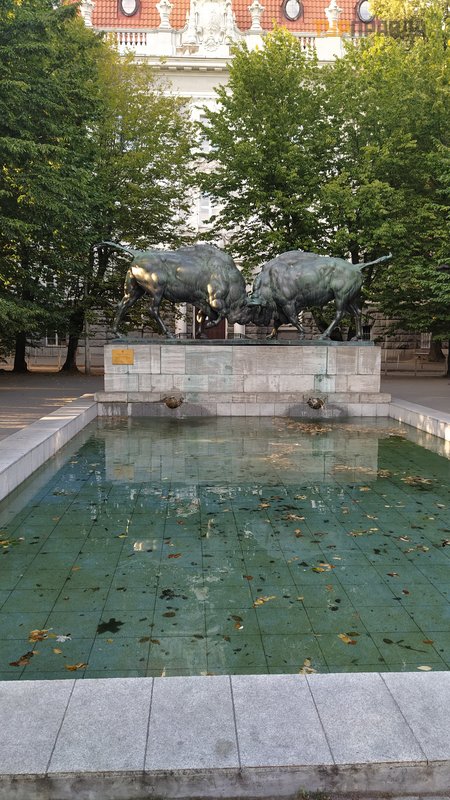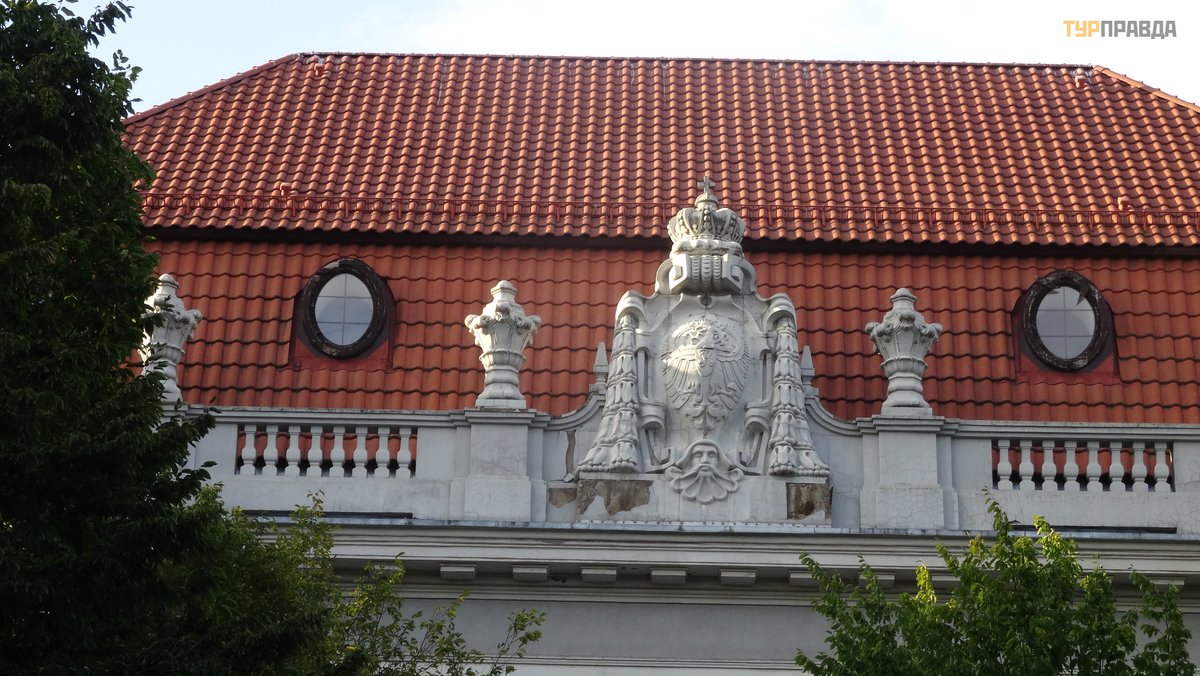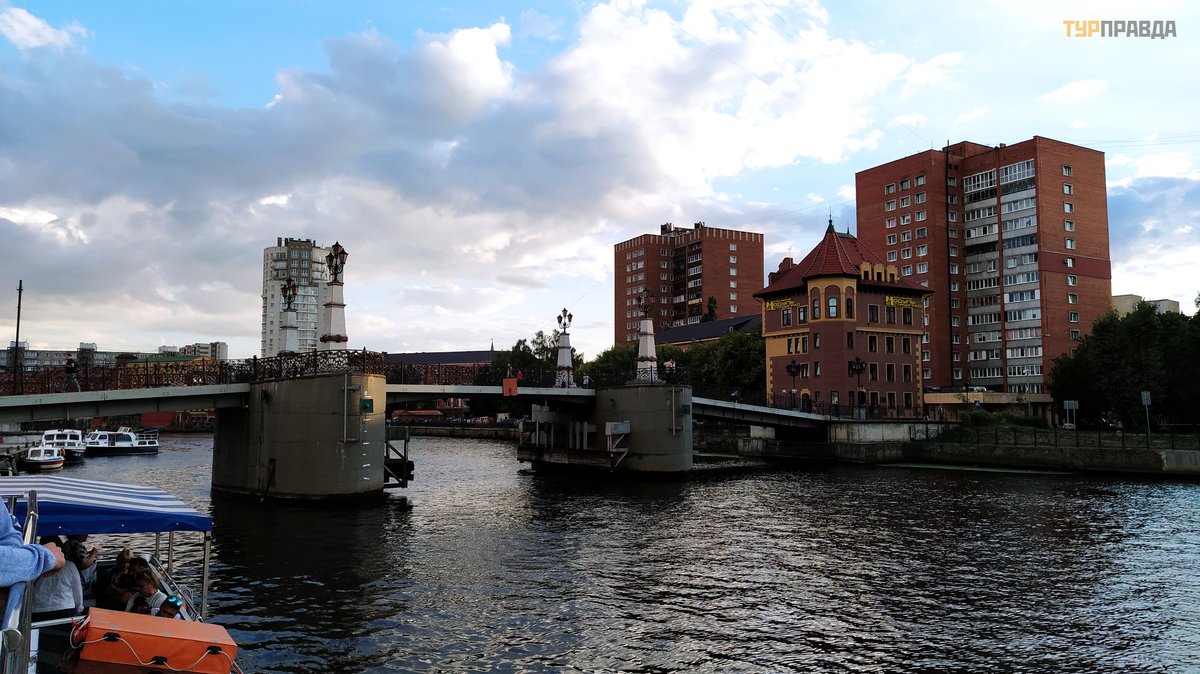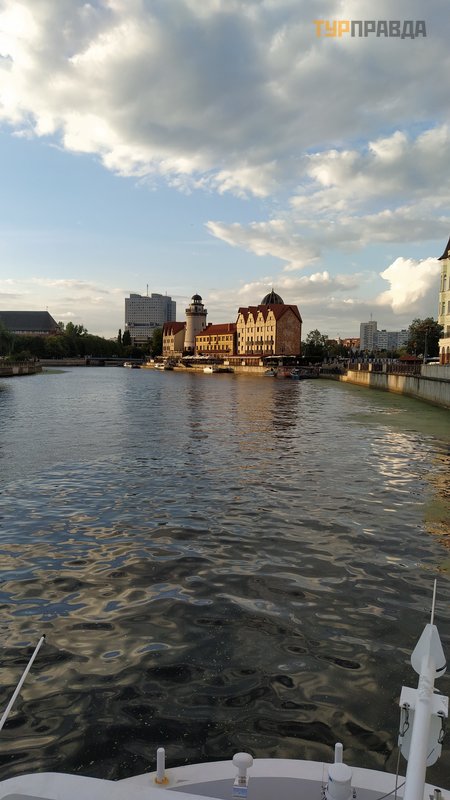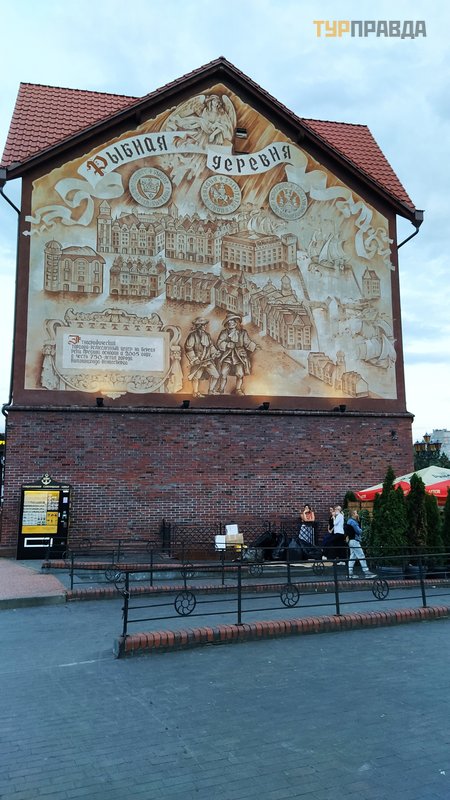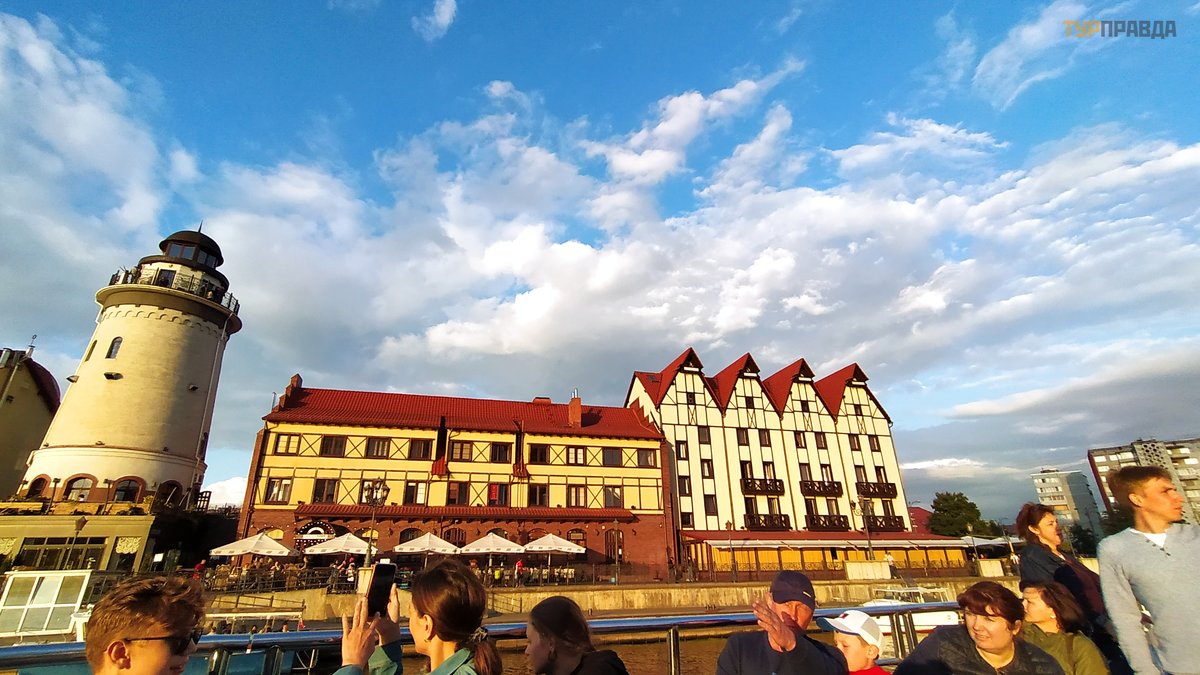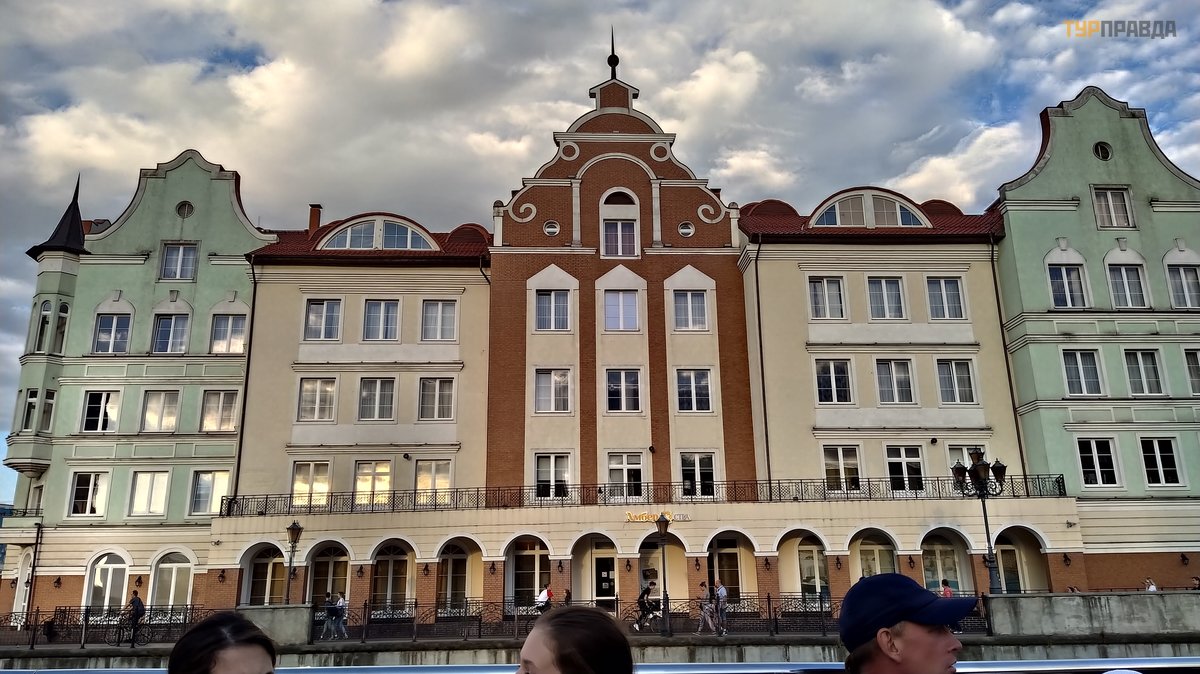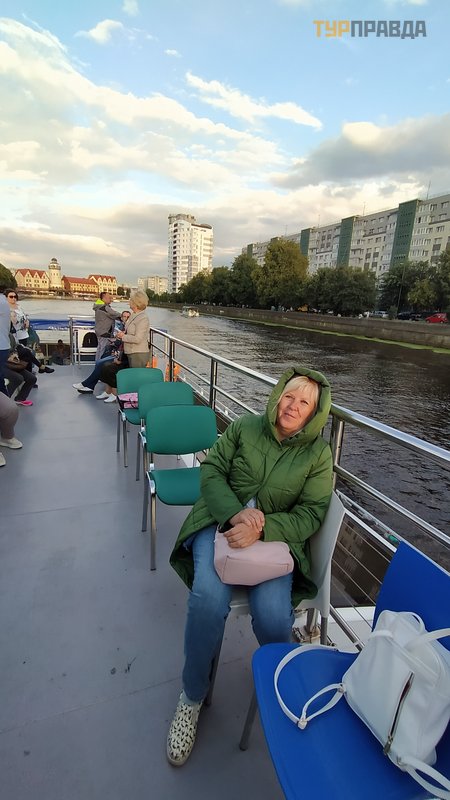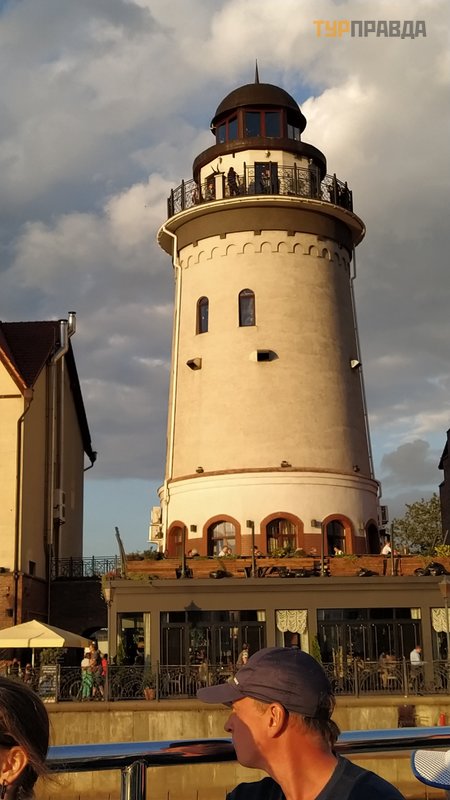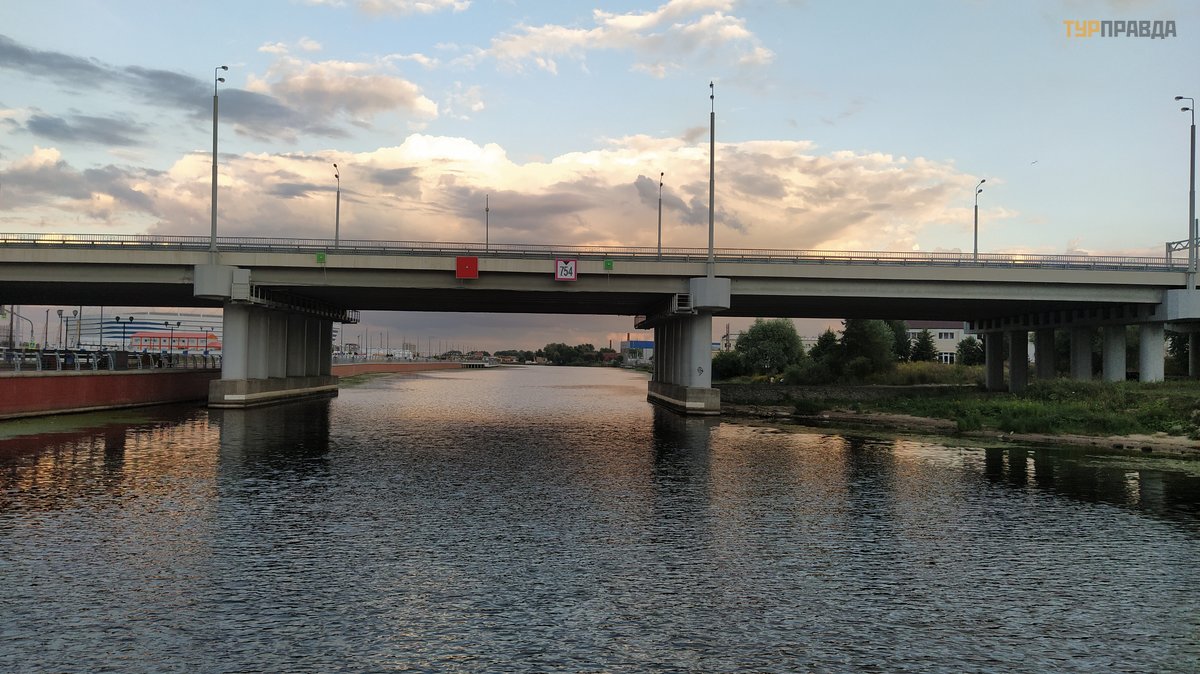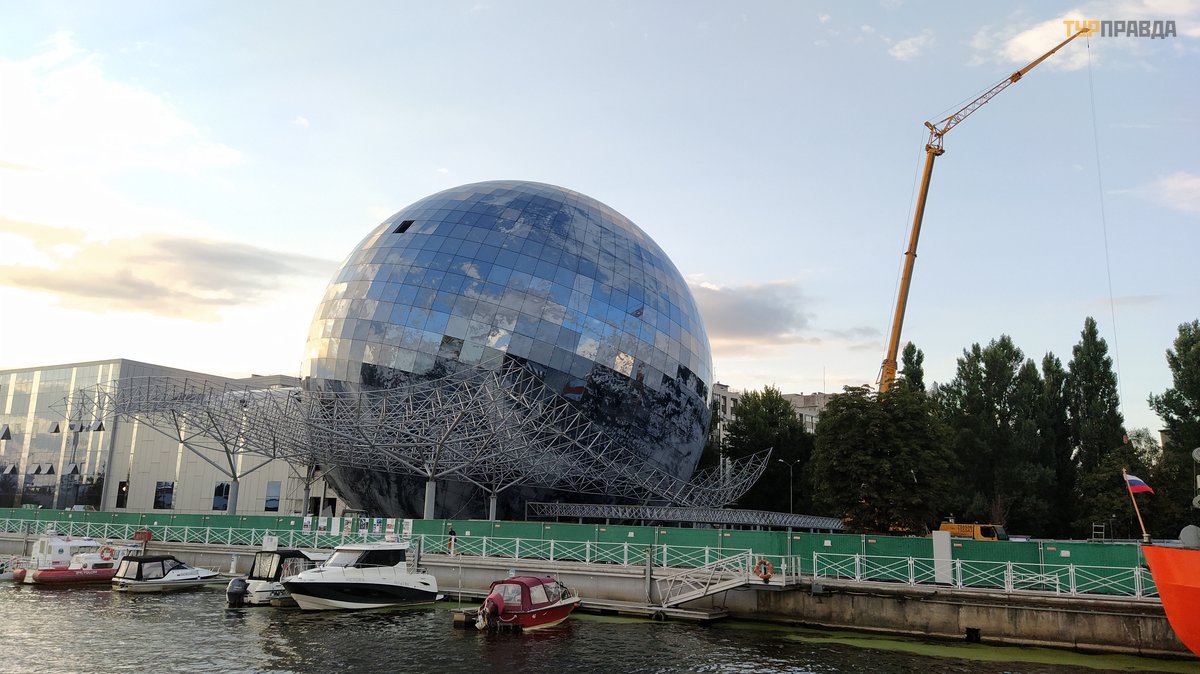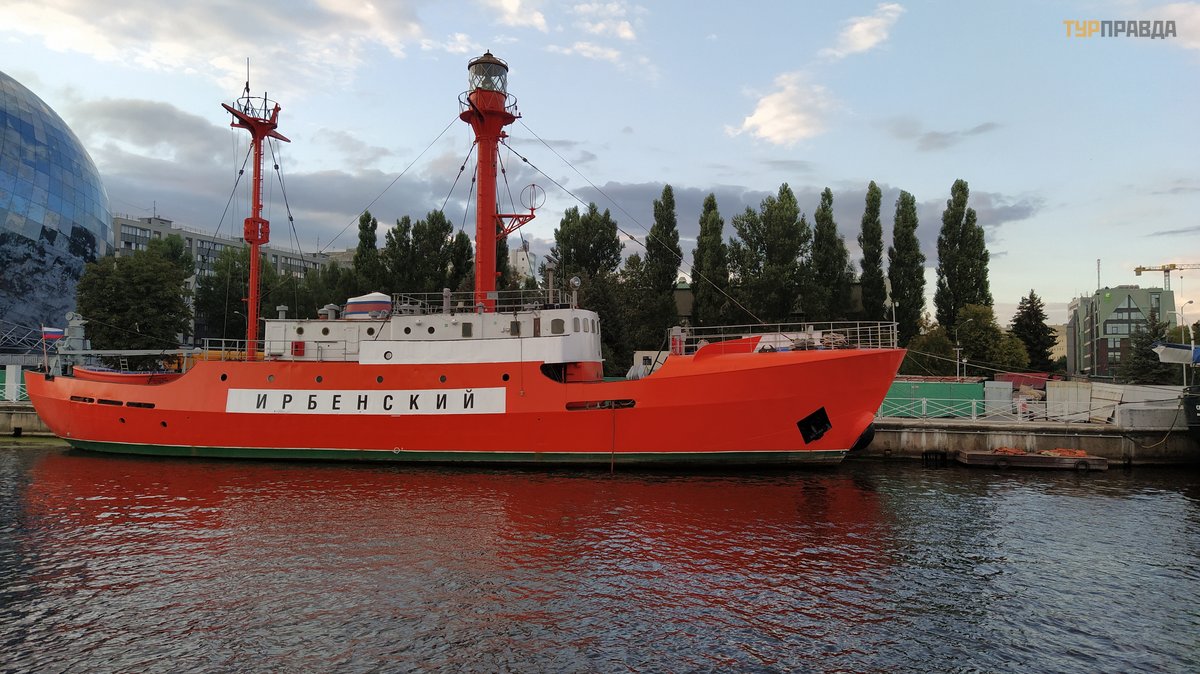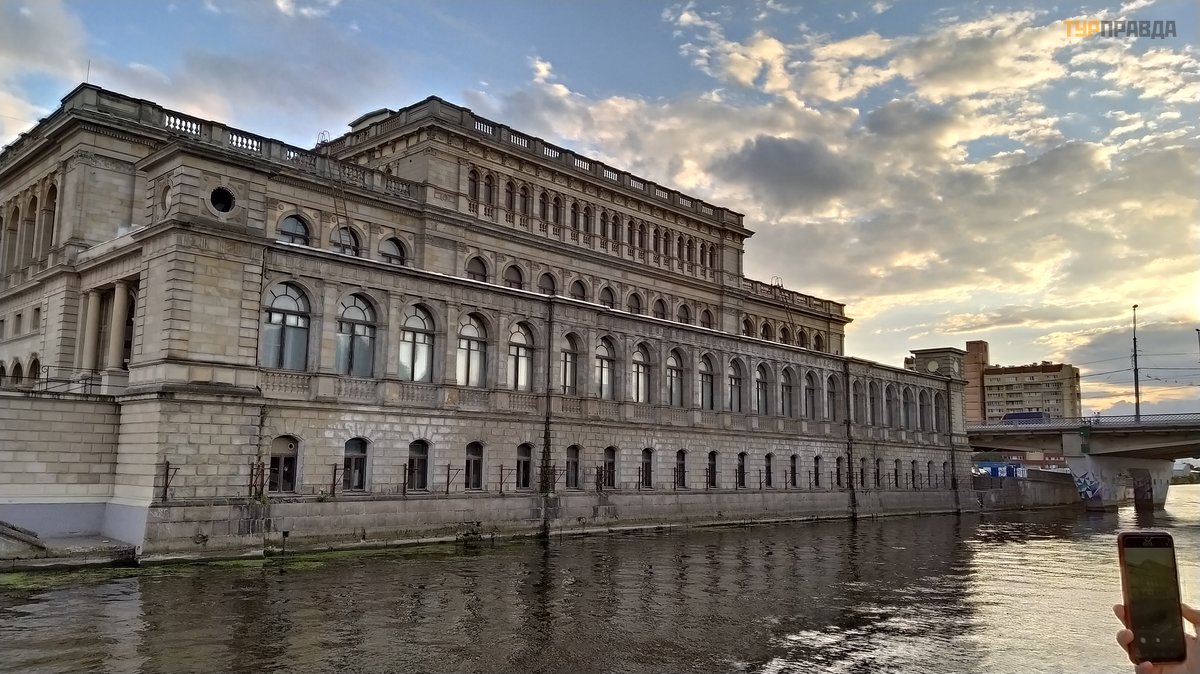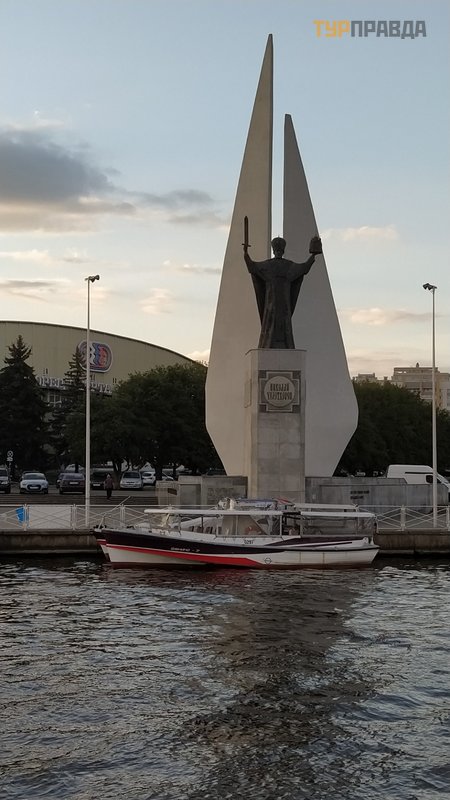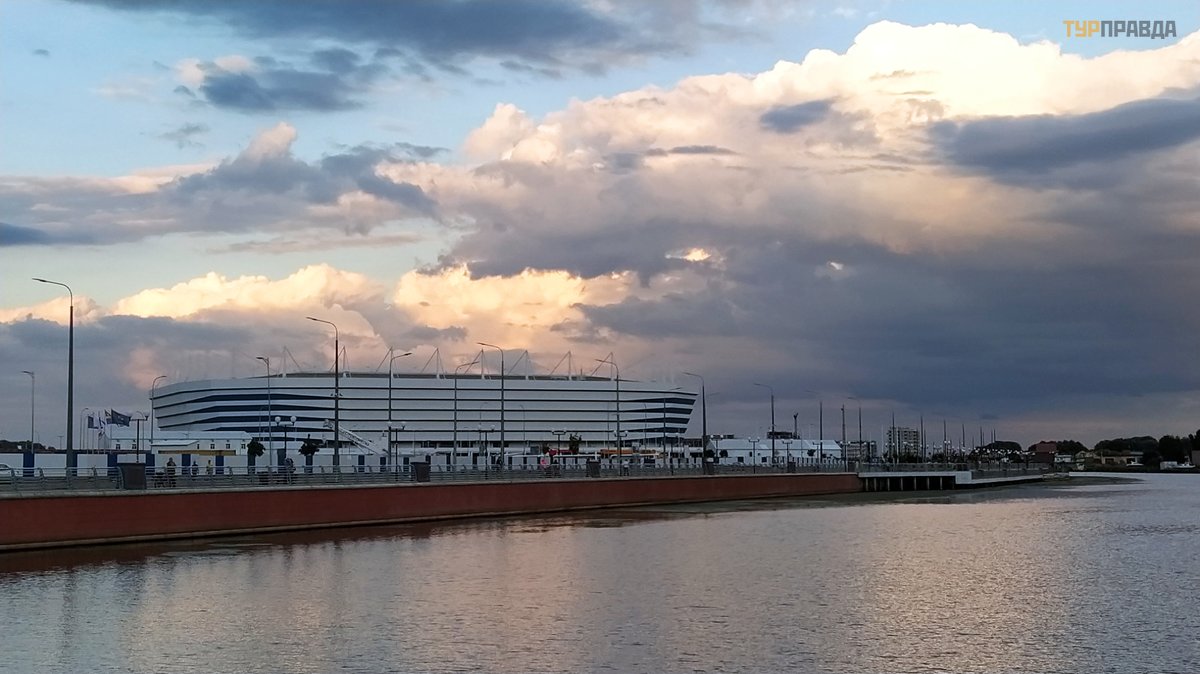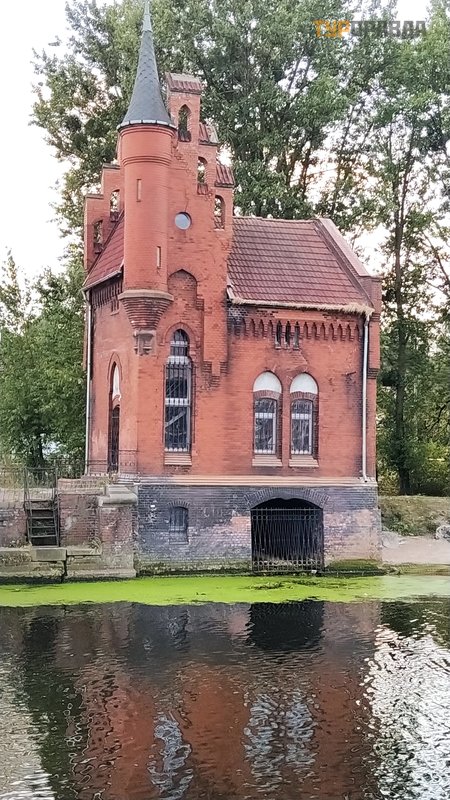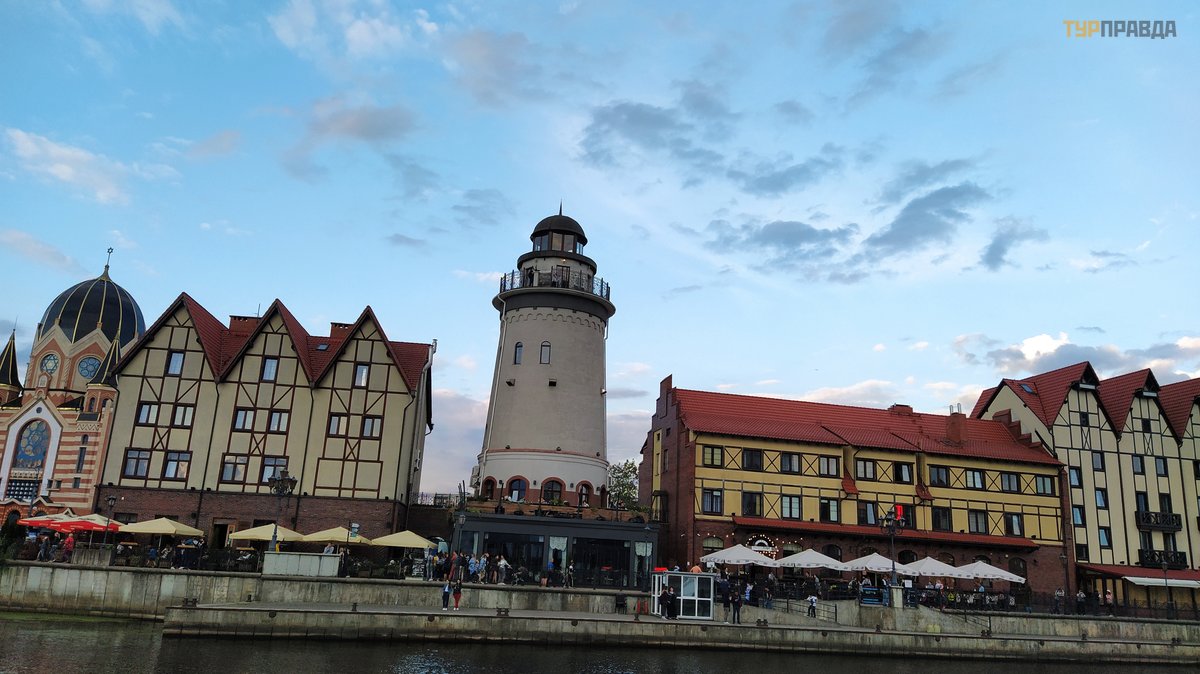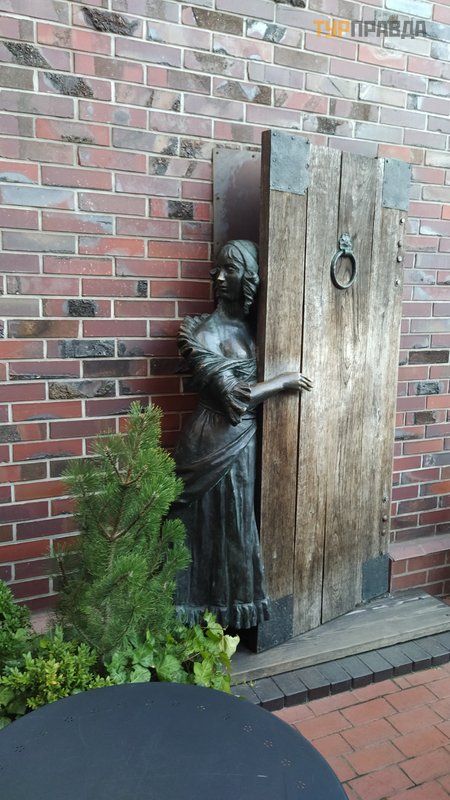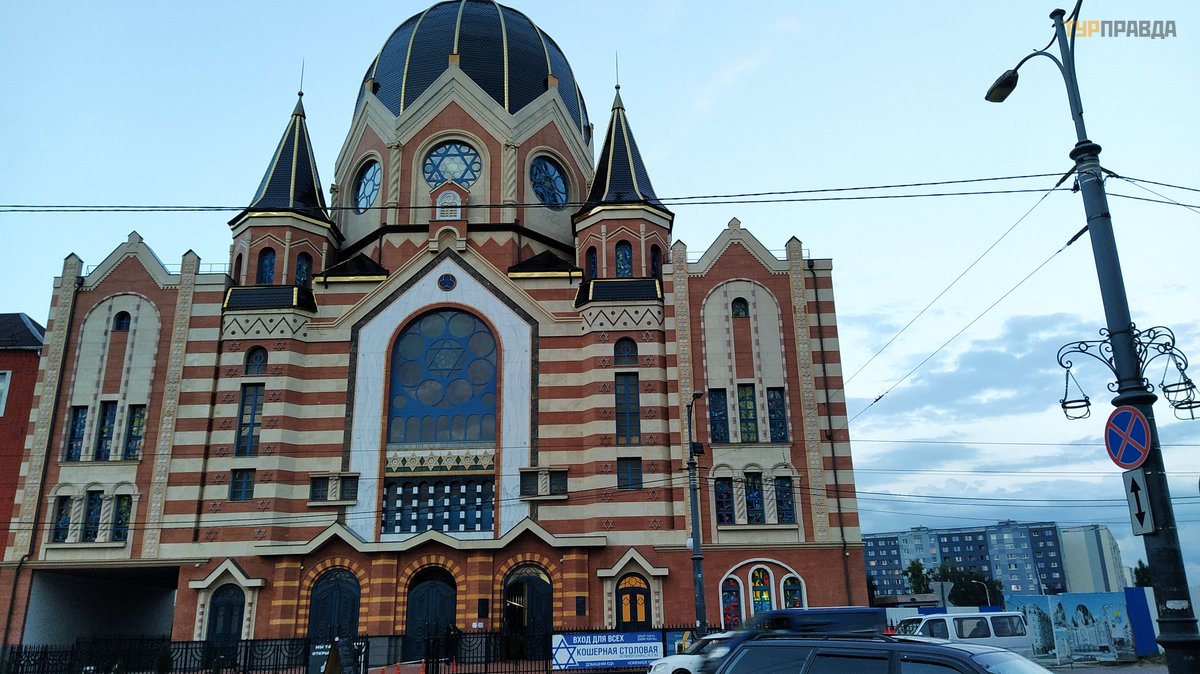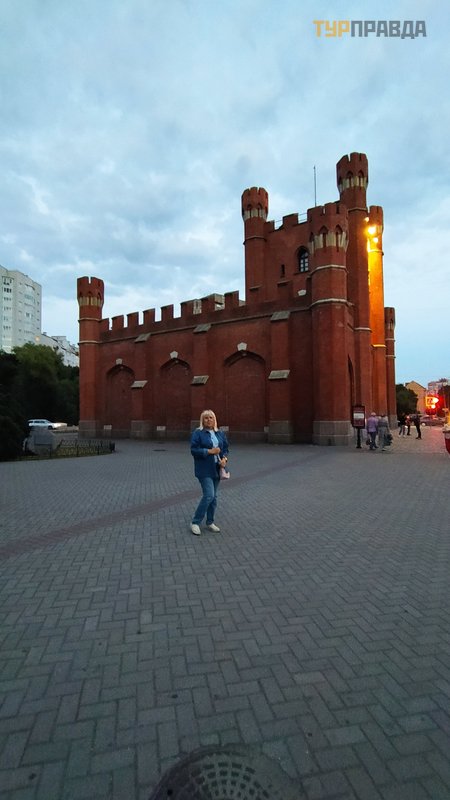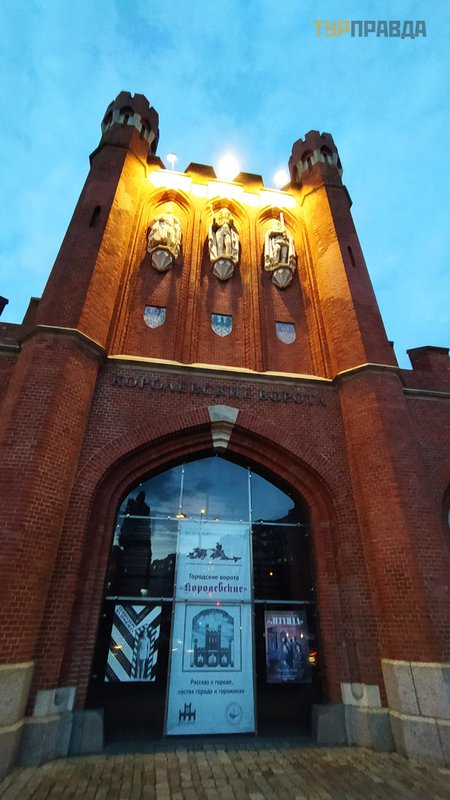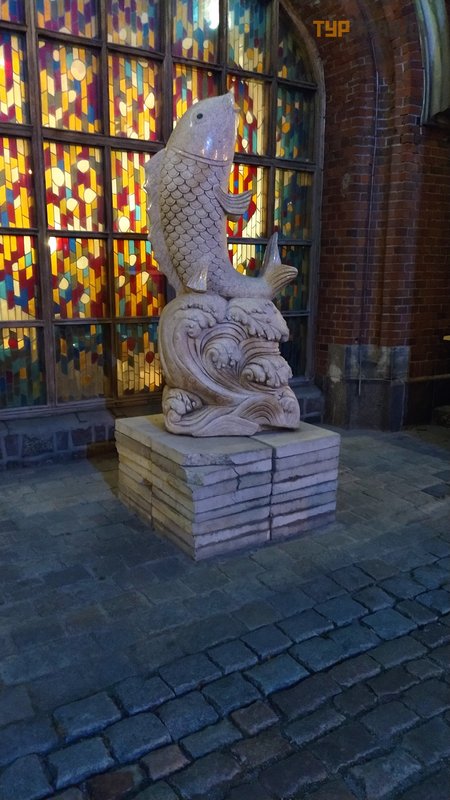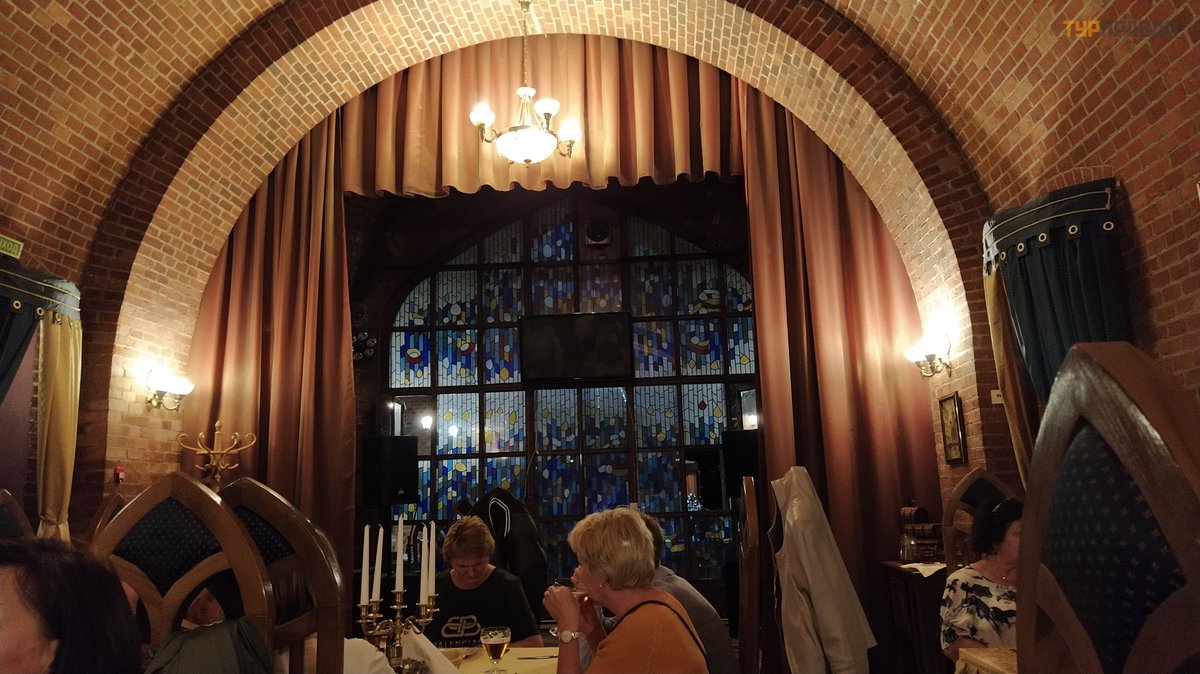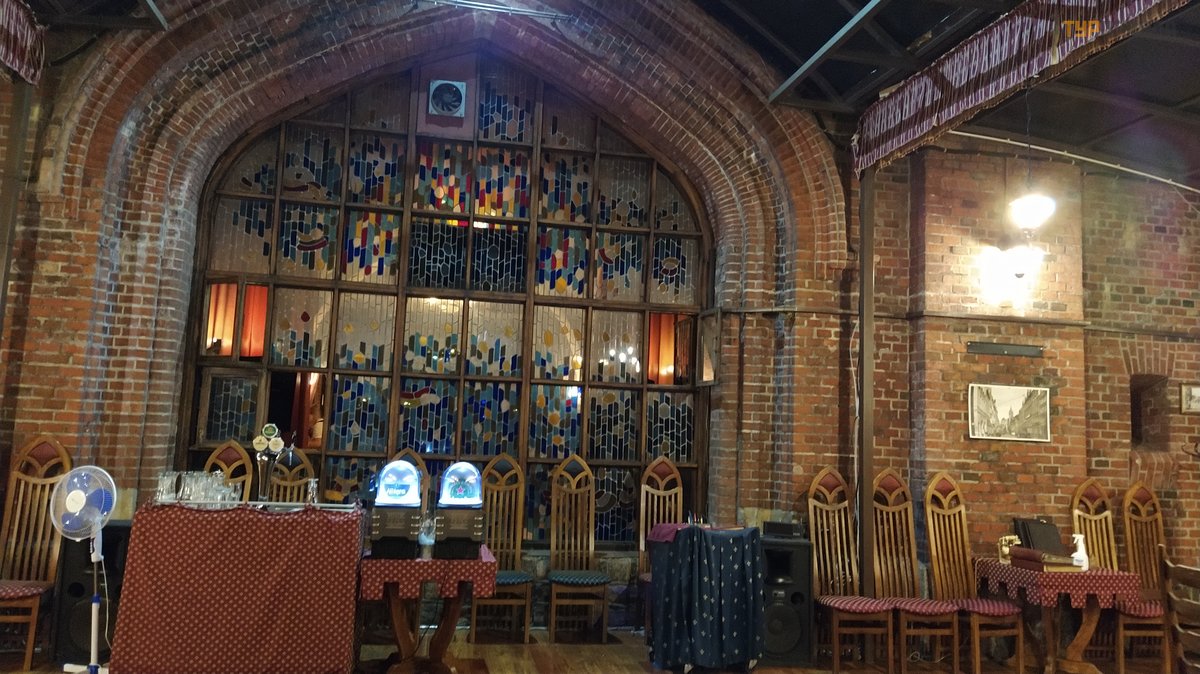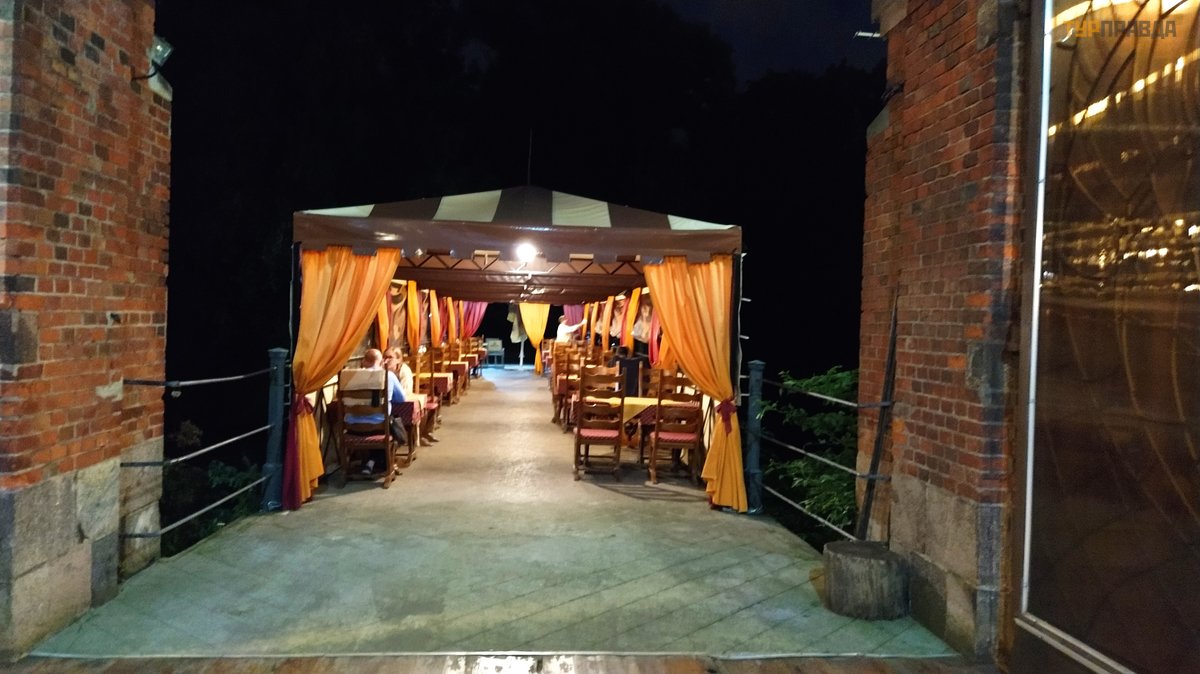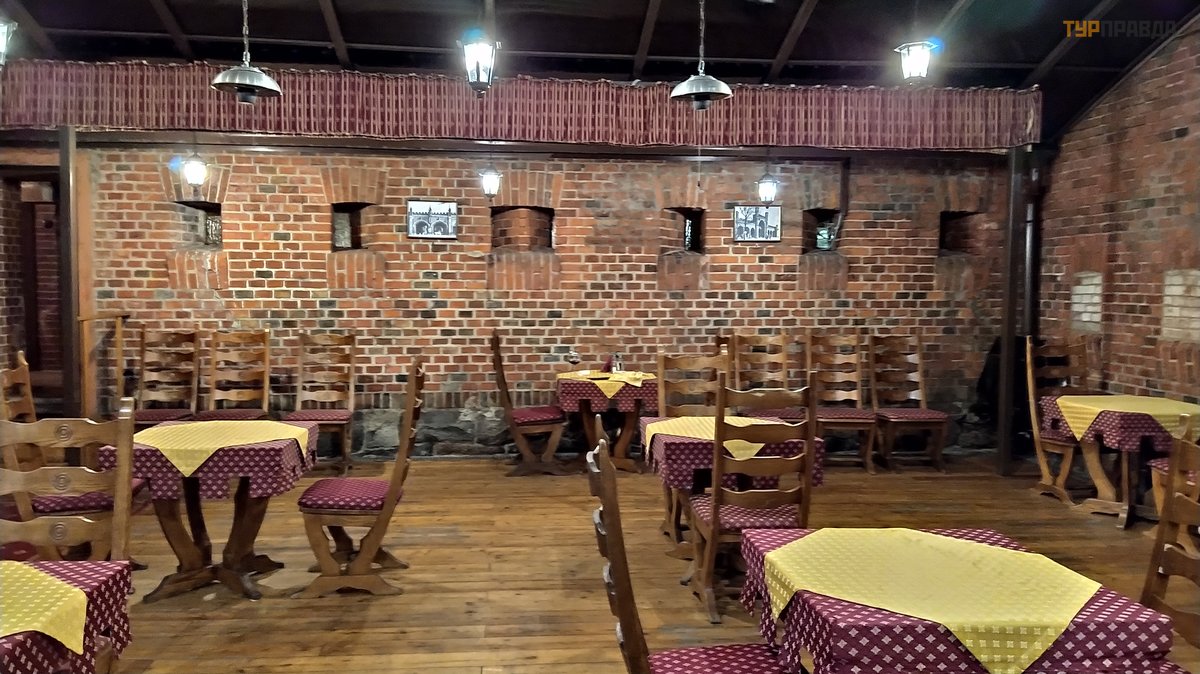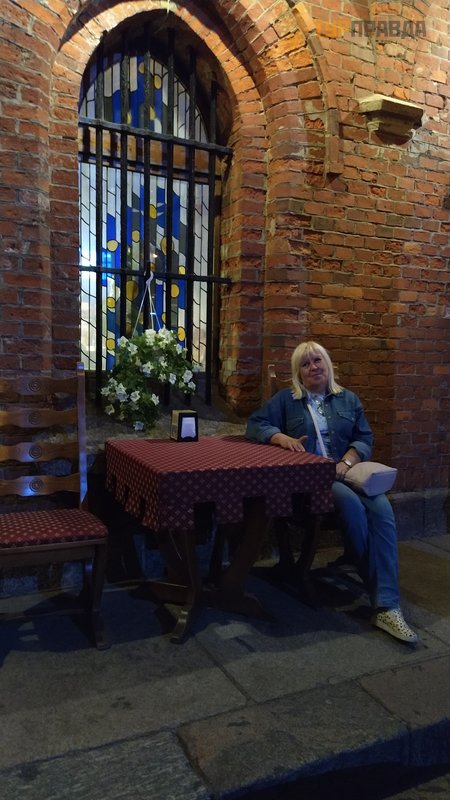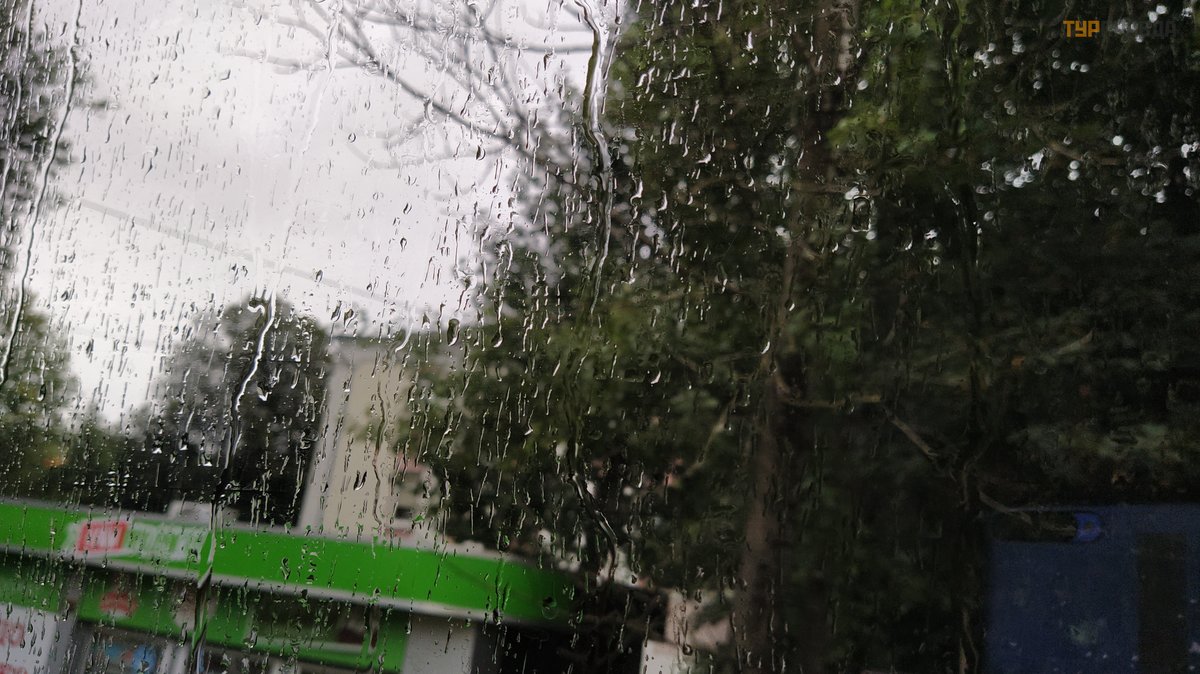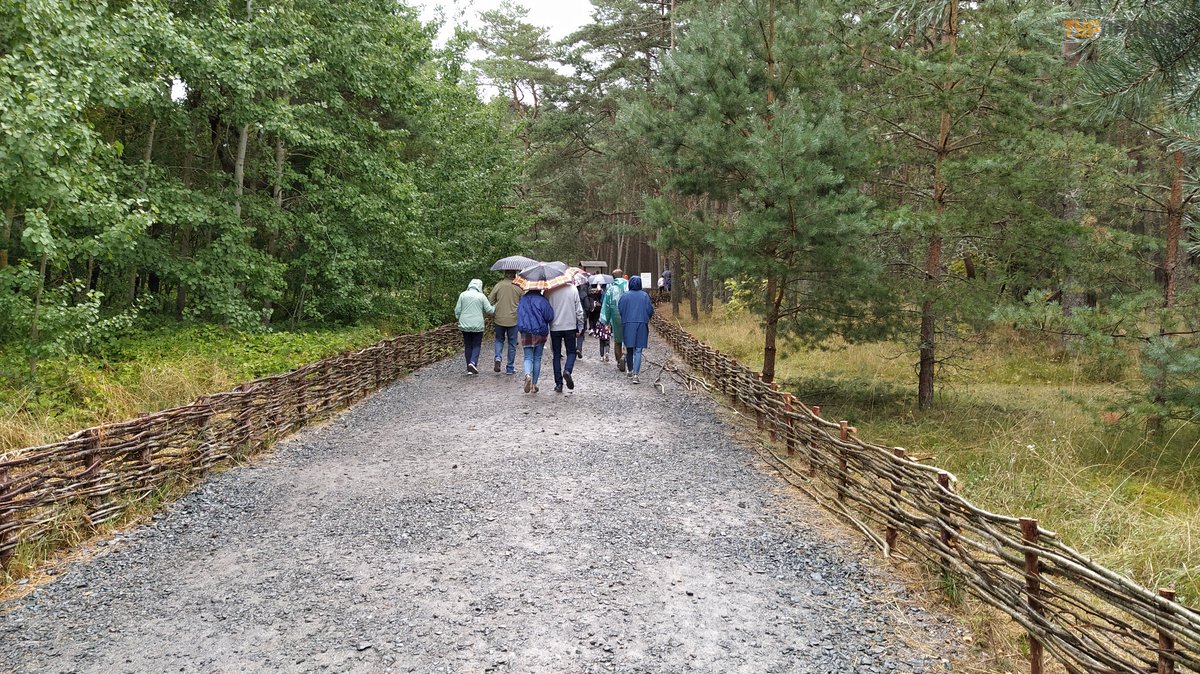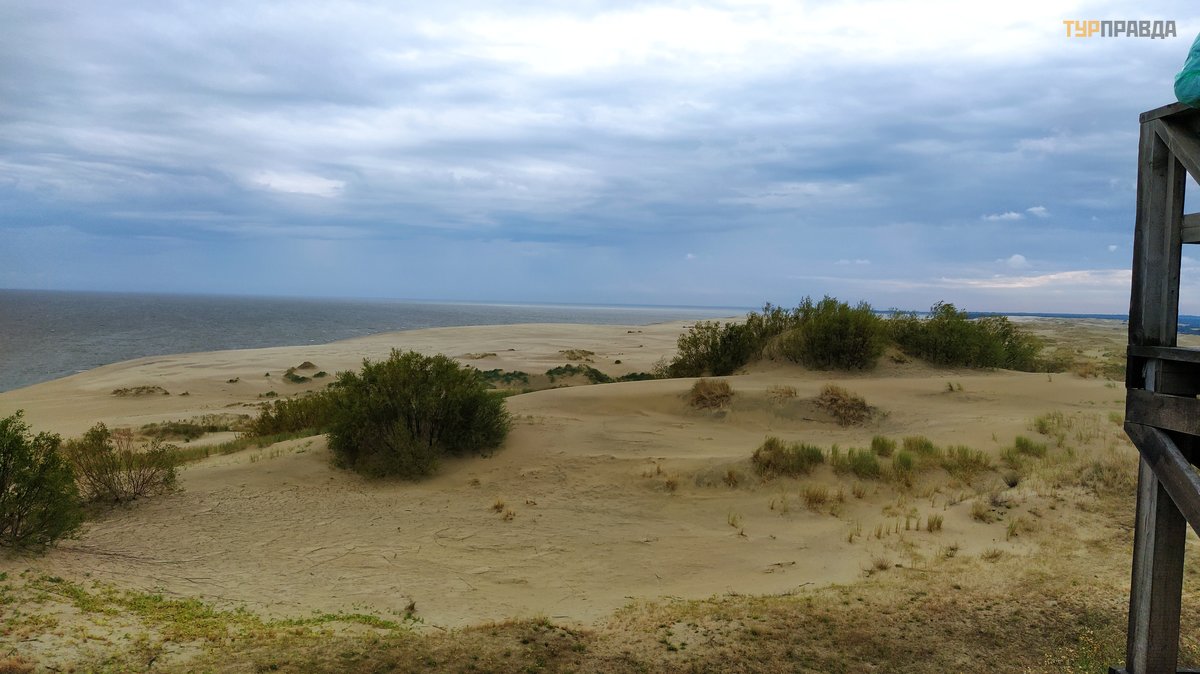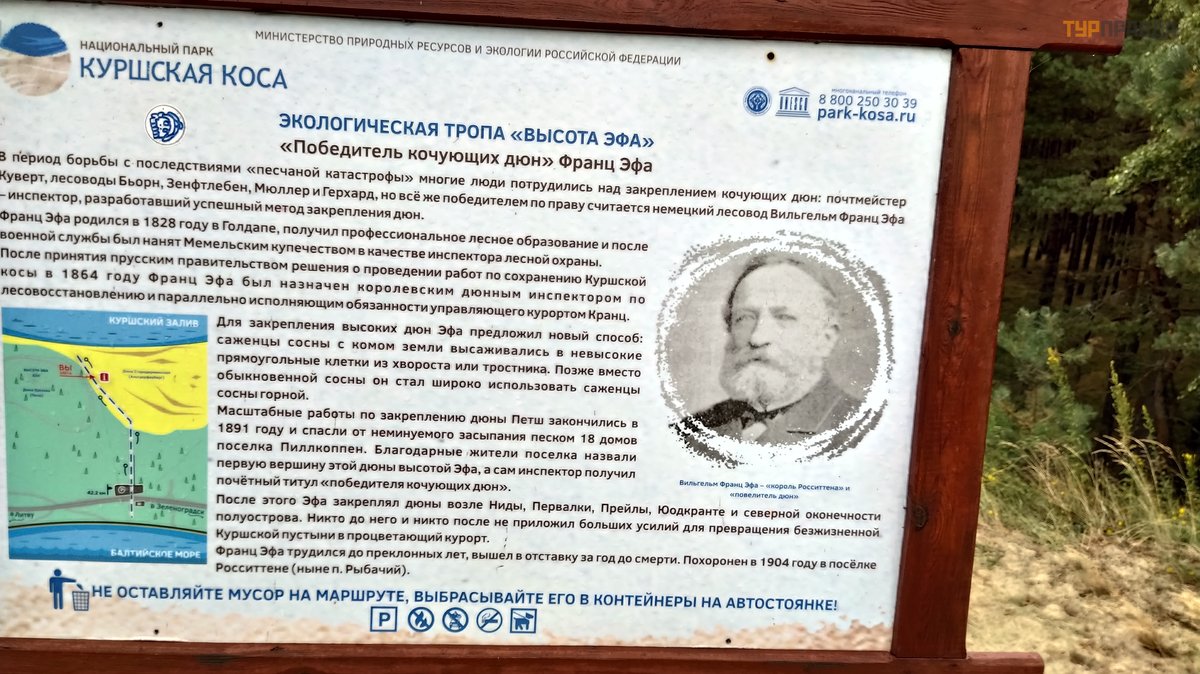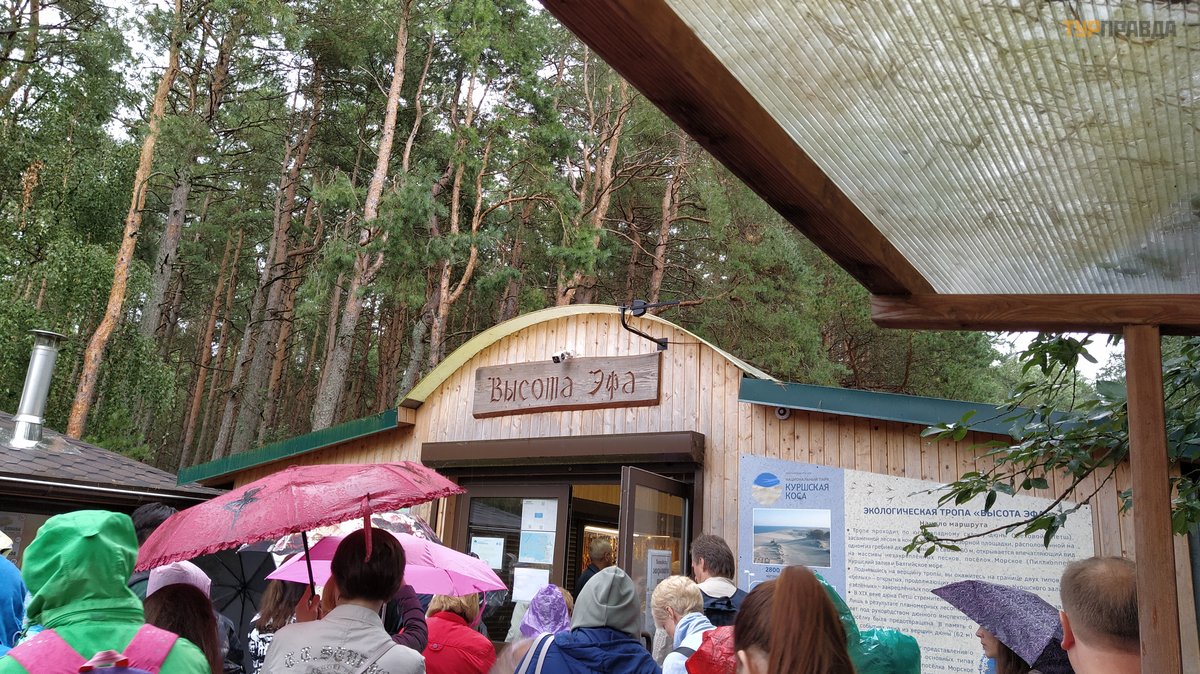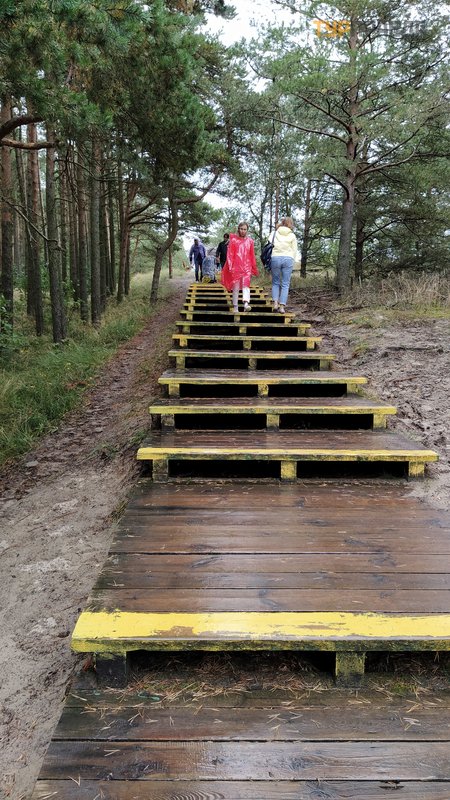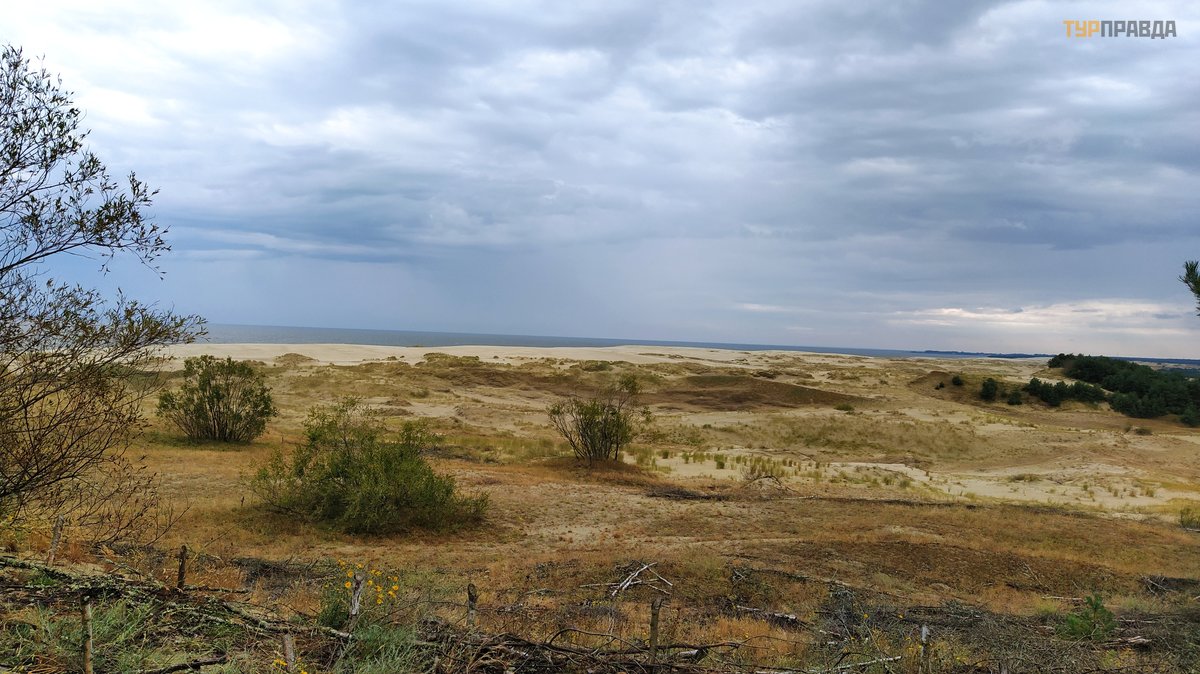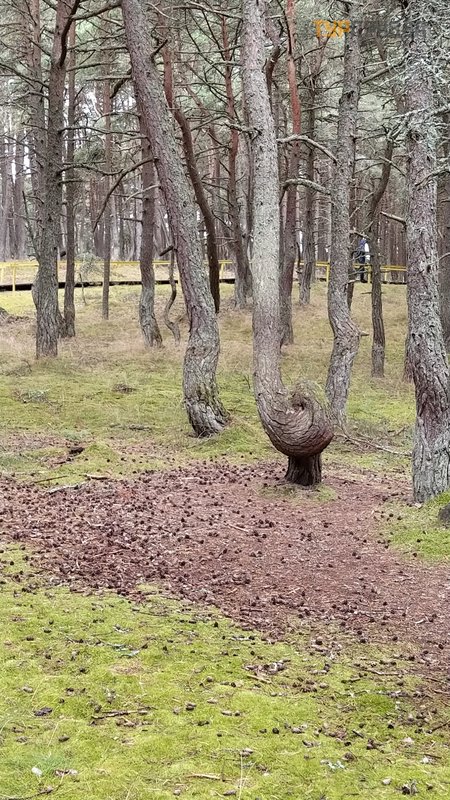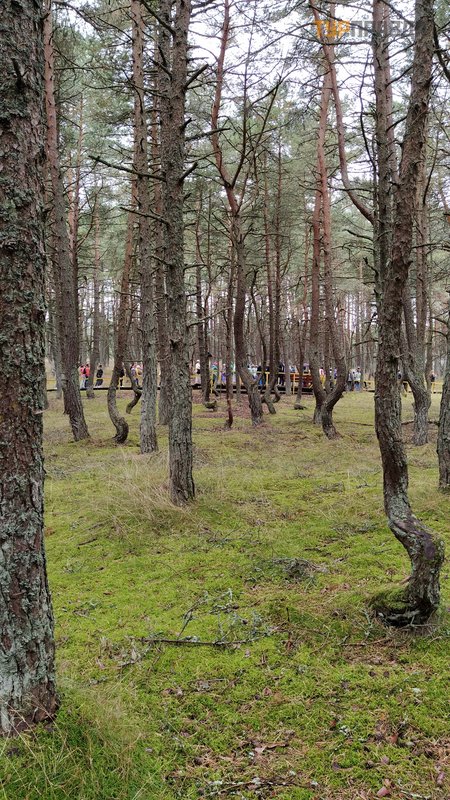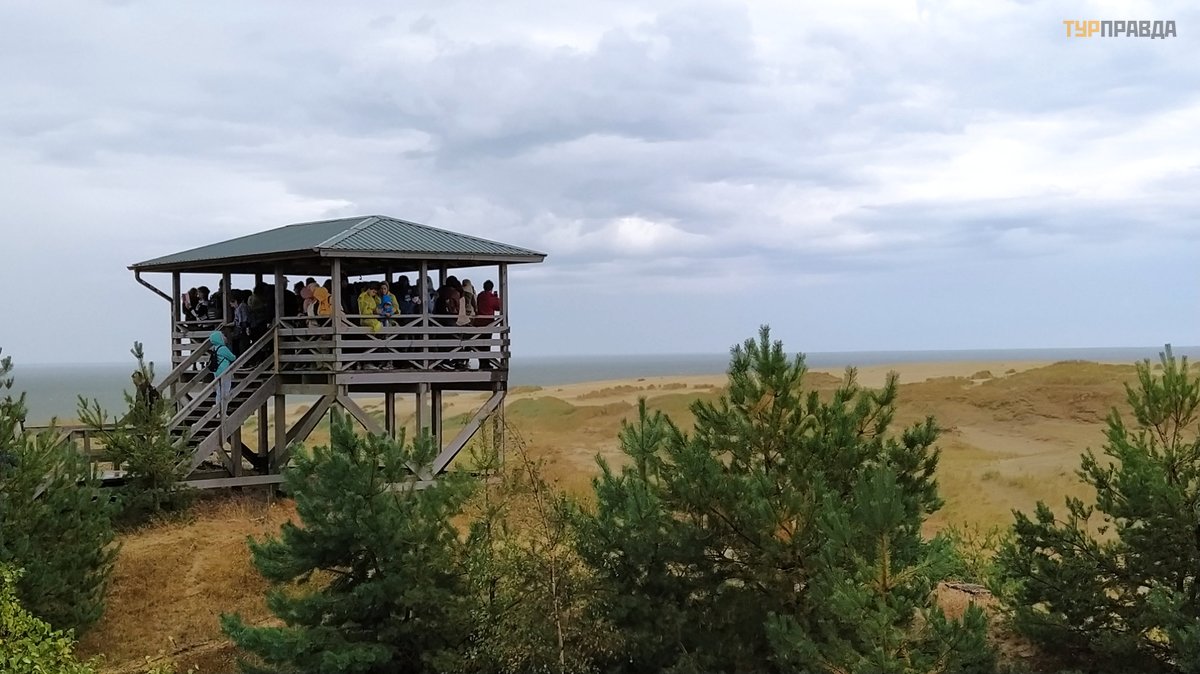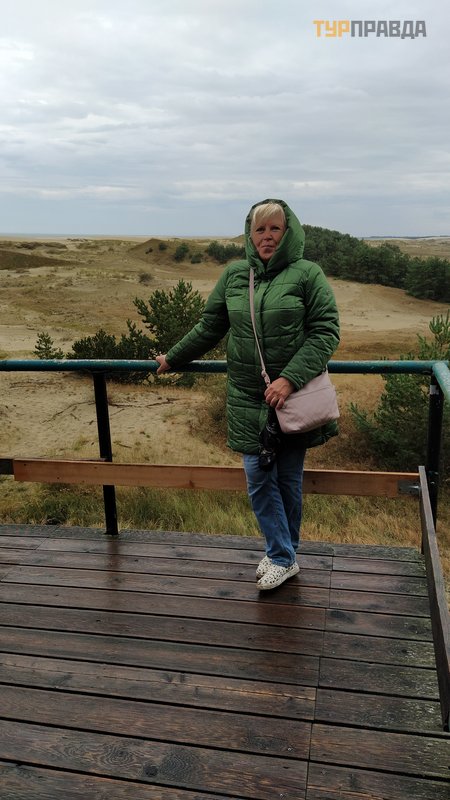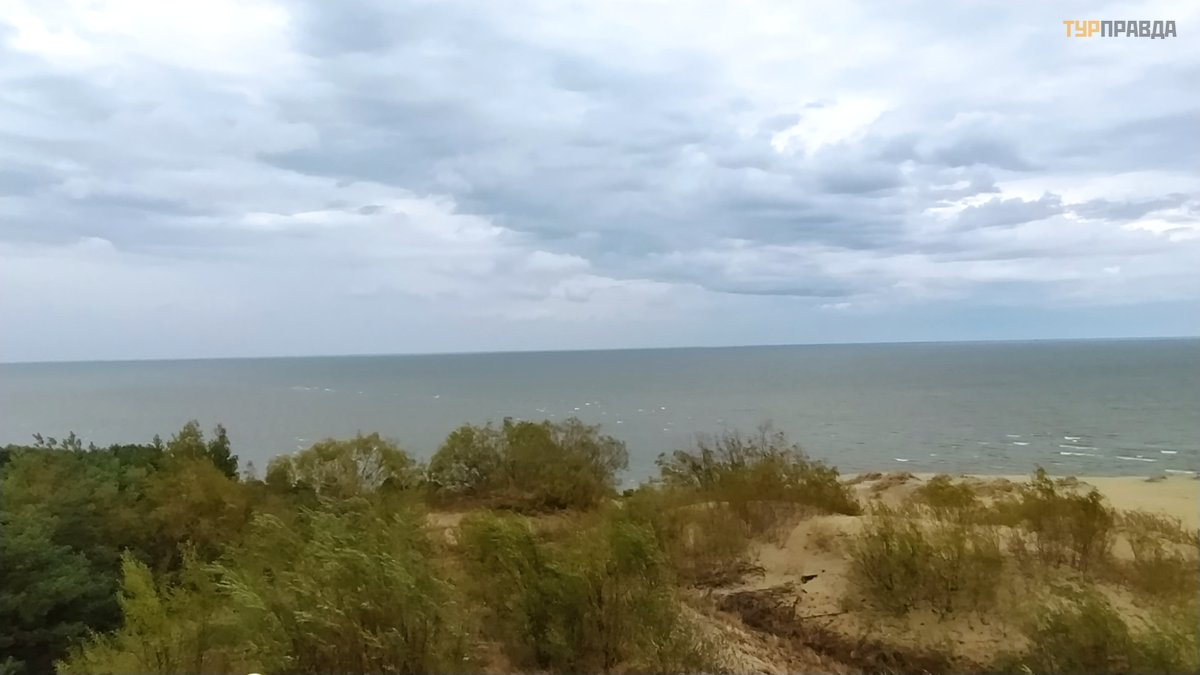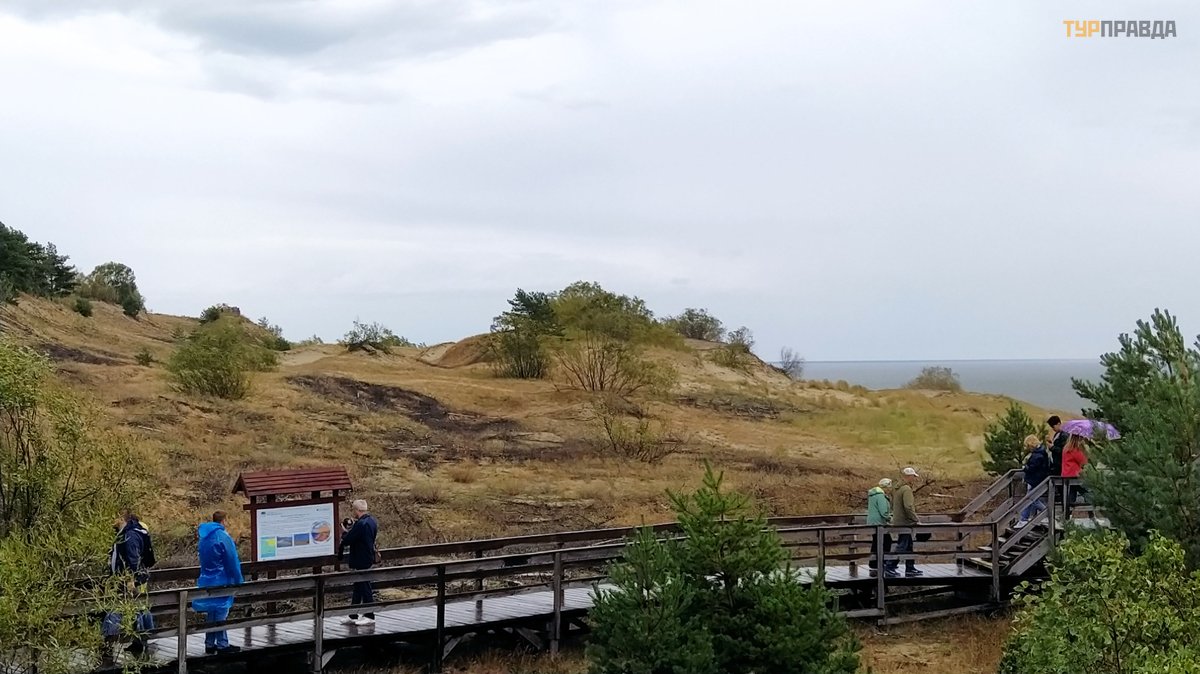In the Far Far Away Kingdom. Part two. Excursion (2)
To be continued. Start here >>>
Today I will tell and show three of my excursions, they took place at different times and on different days.
The first excursion is castles.
The morning of every day started just like that, because every day it rained, but the weather was good today, and we got into the buses and went to the castles.
The first place we went to was Nesselbek Castle, a hotel and entertainment complex in the village of Orlovka. This, of course, is a remake, but it was designed and built in the style of medieval castles of the Teutonic Order. The castle hotel looks nice and I wanted to live at least a day in such a castle, there was even a tour with accommodation in the castle, but there were no places in this particular castle and another castle-style hotel was offered. In general, it didn’t suit me in terms of numbers, and it’s good, because there’s nowhere to go nearby, and there’s nothing to see.
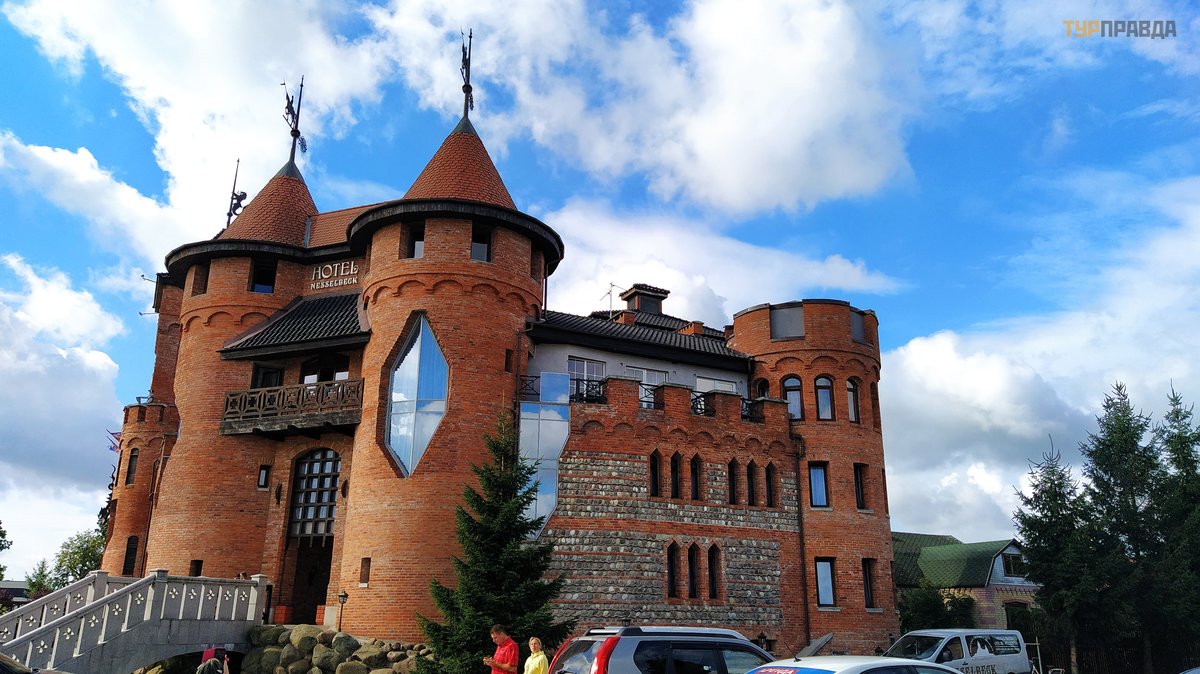 We saw such a handsome man when we arrived
We saw such a handsome man when we arrived
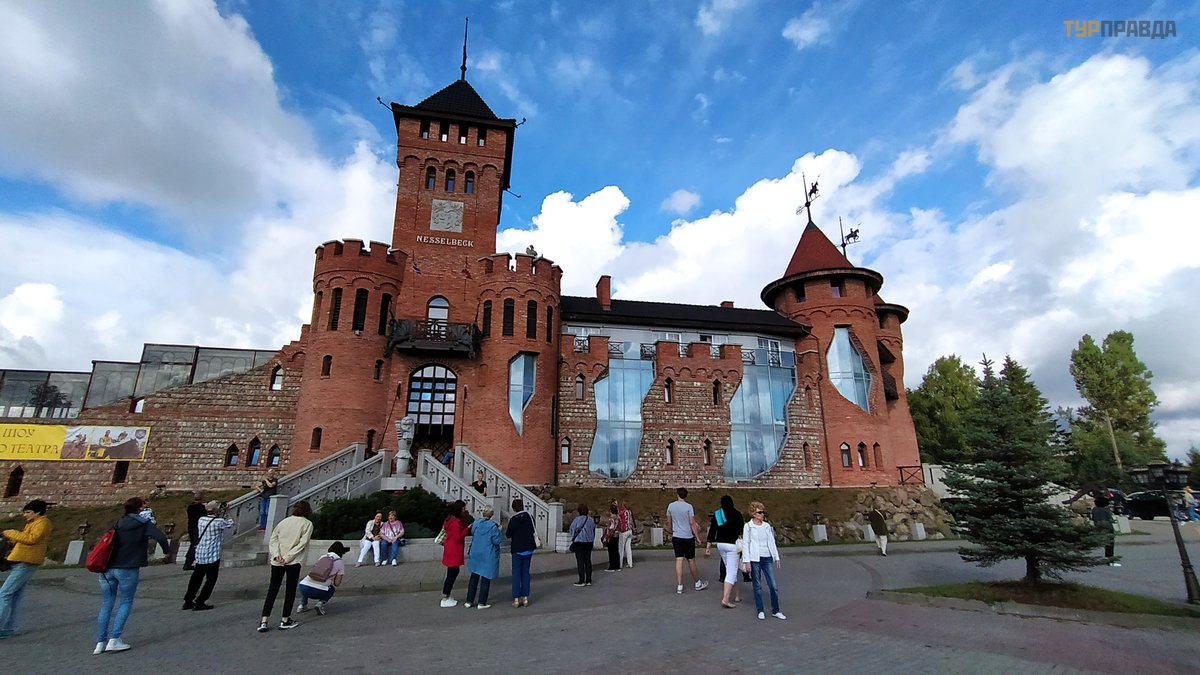 And so we tried to take a picture of him, but it didn't work without people, but that's life , and that's how it was
And so we tried to take a picture of him, but it didn't work without people, but that's life , and that's how it was
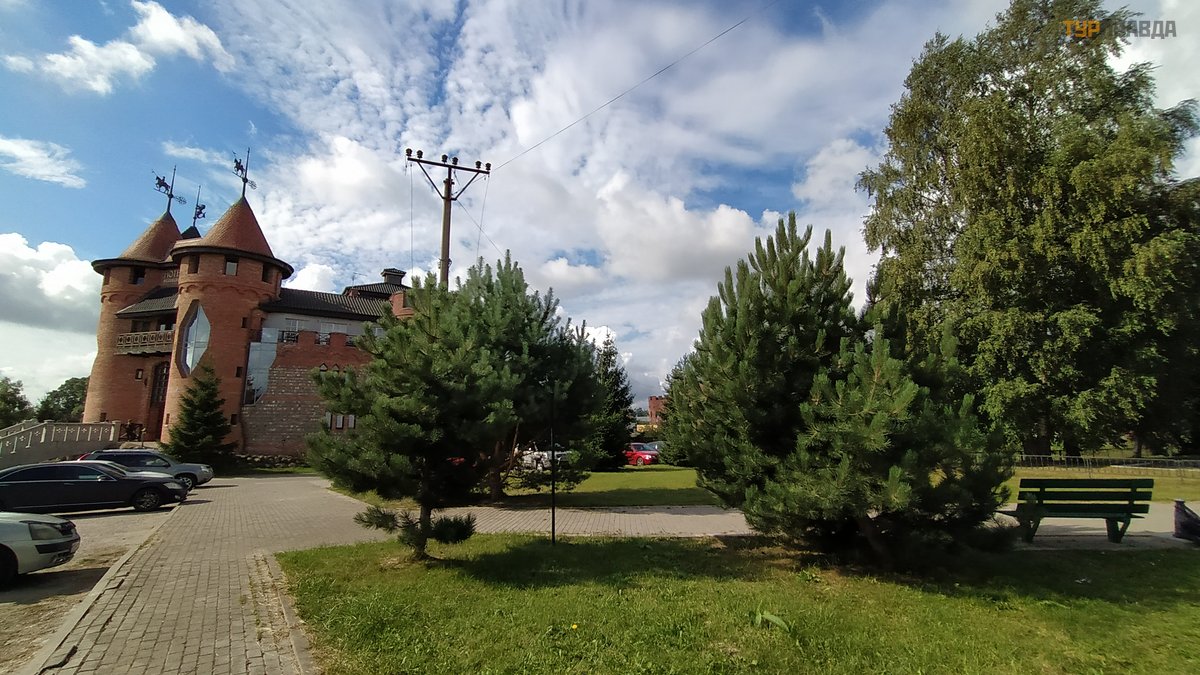 You can only take a walk in such a small park next to the castle
You can only take a walk in such a small park next to the castle
True, the hotel itself offers a swimming pool, spa treatments, beer baths and something else for entertainment, jousting fights, a fire show, and this is again by numbers and how you get there is still unknown. Here we just stop for a photo break, they didn’t even let us into the castle, however, they didn’t explain why, maybe because of the pandemic, we looked, took a picture - and that’s fine.
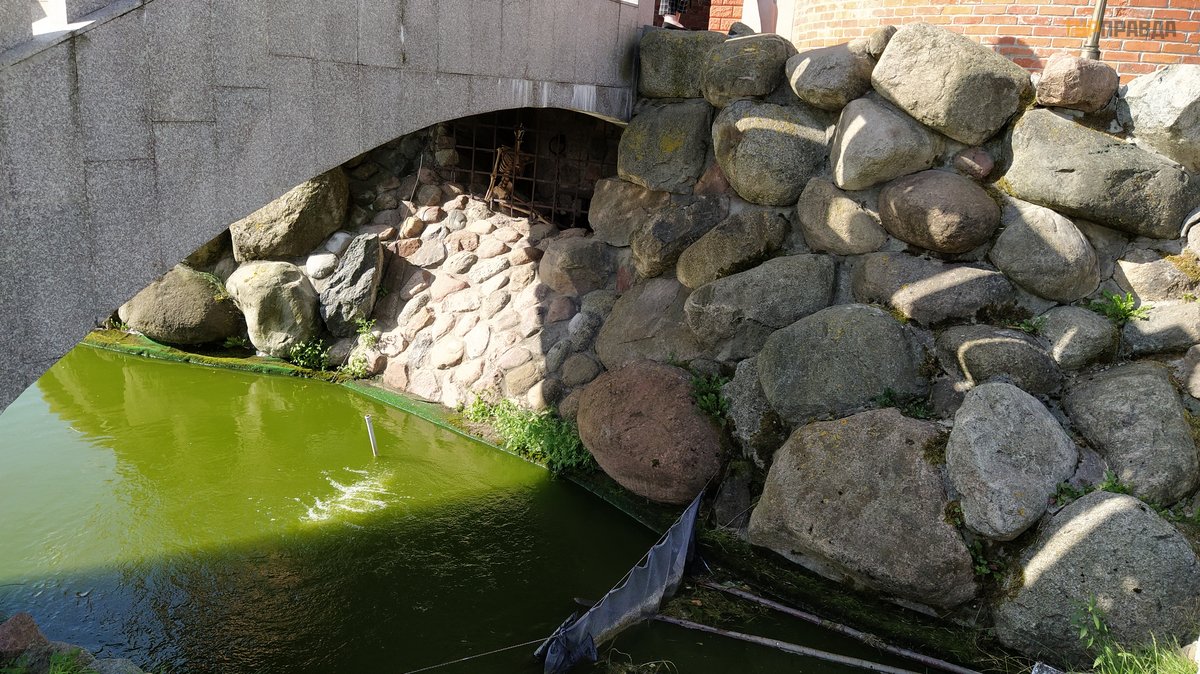 Like any castle, there is a moat with water and a prisoner's cell
Like any castle, there is a moat with water and a prisoner's cell
On Prussian soil, just like everywhere else, hearts that loved each other lived, says the East Prussian legend about a girl named Ragaina (Ragneta) and her lover Sklava, and this is a monument to them (just horror).
And then Schaaken Castle (located in the village of Nekrasovo), where a piece of the real Middle Ages is still preserved, well, a very small piece. Schaaken Castle is more than seven centuries old. No wonder it has so many mysteries. When we arrived, I was simply shocked by what I saw. And it was a pity that over time everything would collapse completely, but there are people who are trying to preserve and restore at least a piece of the past.
And a little history. For several centuries, he collected more than one hundred stories, it all started with the Prussian fortress, which was called Zoke. After the conquest of the fortress by the Teutonic Order in 1255-56. on the site of the fortress in 1270, a castle-fortress was built (probably more correctly) "Schaaken", in Prussian "Schaaken" means "grass". And since it was very close to the Curonian Lagoon and the area was overgrown with grass, reeds, this is how “Shaaken” turned out.
The walls of the castle, built of Baltic boulders, formed an octagon and were surrounded by a moat; buildings that served as living quarters, as well as weapons and food depots, a kitchen, a chapel, and outbuildings were attached to the walls of the castle. Near the castle, the village of Liska-Shaaken appeared (now it is the village of Nekrasovo). Subsequently, everything was built and rebuilt in the castle many times, and after a fire in the 17th century, the castle had to be almost completely rebuilt. Some of the buildings were already built at the beginning of the 20th century.
We were met by a guide in historical clothes and a short tour began with the history of this place, and then we go down the old worn steps to the basement of the castle. As we were told, the basement and courtyard have not changed since ancient times, in the gloomy basement there is a museum of the Inquisition, lined with various instruments of torture with images and instructions, well, in general, when I was fond of history, I read a lot and about torture, of course, it’s creepy, but here to touch the walls that still remember the days of chivalry, this is the most important thing for me (the walls were scratched).
We carefully climb up, going up the historical steps, at the top there is a museum of the history of the castle, somehow I didn’t remember it at all, and also an armory - these are not historical exhibits, but copies of medieval armor and weapons made by modern masters, but you can try them on and take a picture.
That's all, the tour is over, and we are invited to tea with a pie. The castle courtyard, which has not changed over the past 400 years. In its center there is a stadium where real jousting tournaments are held.
There is a stone labyrinth on the territory (on the site of the chapel), made recently, but according to classical models, and after going through all seven circles and repeating your wish, it will surely come true (there are many who wish, but time is short).
While tea was being prepared for us and pies were being delivered, I examined the yard, fired from a bow (that medieval one), it turned out that the arrow flew to the target, well, in general, I represented that time, no matter what.
 Such signs are scattered throughout the castle, for me they fit well into the atmosphere of the castle
Such signs are scattered throughout the castle, for me they fit well into the atmosphere of the castle
A tavern in a separate annex of the early 20th century, in general, this is a stylized cafe. In the tavern there are all kinds of utensils and costumes in which you can take a picture.
And that's what you need - the hostess of the tavern, well, how can you miss it, there are many who want it and she kindly agrees and takes pictures with everyone.
It was possible to take a picture with Valera, but there were no free people nearby (you need to buy a selfie stick).
Above the entrance to the castle, the motto of the Teutonic Order "Help. Protect. Heal" - nobly, nothing to say, and at the entrance to the castle there are two huge boots like knight's armor. She asked, "What does that mean? " - They explained it this way: "Whoever can take at least a step in these shoes, that is the owner of the castle. " But the shoes are screwed in such a way that you can probably only tear them off with a tractor (I tried it - but where is it, the wrong blood! ).
The cake is delicious, the tea is hot, everything is fine, and we say goodbye to the castle and continue on our way. I also managed to run a little through the ruins of the castle, but it's still great that people are somehow trying to take care of the castle.
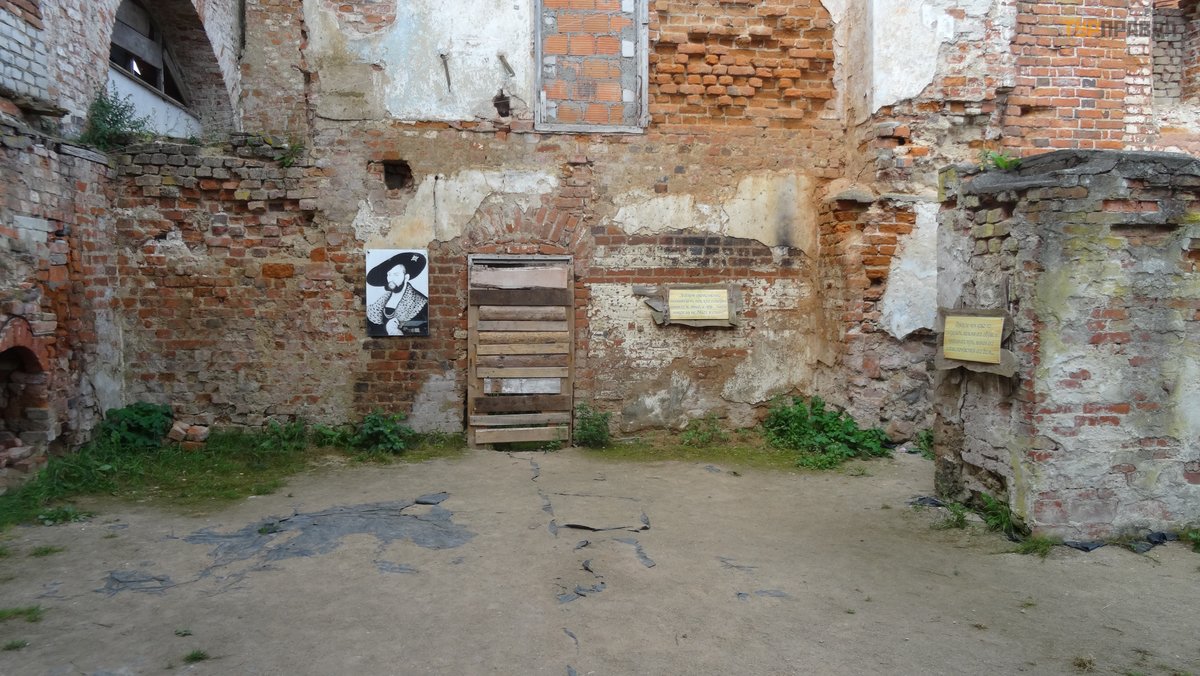 Inside there are photographs of people who visited the castle
Inside there are photographs of people who visited the castle
I almost forgot, the castle naturally has its own ghost, but we were not taken to the place where the ghost lives. Participants of the “Battle of Psychics” even came to his soul to find out his sad story.
A cheese factory has recently opened not far from the castle (we didn’t go there). In another tour there is a visit to a cheese factory and cheese tasting.
The next castle.
Waldau Castle is one of the best-preserved castles in the Kaliningrad region, located in the village of Nizovye, very close to Kaliningrad. The name Waldau itself comes from the ancient Prussian word "Wald", meaning "possession". And again, everything is connected with the knights of the Teutonic Order, the date of construction of the castle is considered to be 1264. The castle has been rebuilt many times in its history, both outside and inside, and it has become a little like a castle in our (in my) understanding. But judging by the layout, the castle still existed.
Three hundred years ago, the high towers and the fortress wall were dismantled into bricks, and the premises were rebuilt, and over time, the castle lost its original defensive appearance with fortress walls, towers and a moat. And the castle began to change hands, in 1858 it was agricultural. academy, then a teacher's seminary, then the "Old Castle School", associated with the Royal Asylum, which lasted until 1945.
Now the main building of the castle and the side wing have been preserved from the buildings. And as always, cellars and a small section of the wall between the wing and the castle building remained in their original form. Here in the wing of the castle there is a small museum, the guide meets us and starts the tour with humor.
The first is a portrait gallery of the owners of the castle and a layout of the castle. Armor, swords and axes, bows and arrows, which were in use during the time of the Teutons, here are pieces of furniture, utensils.
The hall of the poet and writer Maximilian von Schenkendorf, who lived in the castle in 1805, is a special pride of the museum.
We go down, along the worn-out steps to the basement, there are chips somewhere, which may have been left by the spurs of the knights who walked along these steps (romance, it’s not just “Far Far Away”).
The museum is dedicated not only to the history of the Waldava Castle, but also to the history of the region, there are halls: the Stone Age, Ancient Prussia, the Street of Crafts, the Prisoner of the Castle. And everything is so fast that we can't keep up.
They told about the stay of Peter I and the Great Embassy in the castle - in a small room there are portraits of Peter I and the ambassadors, the route of the Great Russian Embassy, some surviving documents, drawings, interior and household items. And Peter I was also in Schaaken Castle. One of the most valuable exhibits is the Order of St. Andrew the First-Called (copy).
The Hall of Sculptures was created in honor of the first director of the Barinov Museum. Here are the sculptures made by him from different types of wood. Barinov called his collection of sculptures "Trees of Soul and Heart". And in each sculpture there is a clue - what kind of wood it is made of.
And another small room with household utensils:
While the people are getting out of the castle, I ran and looked and, of course, the arch, which was preserved, be sure to go through it and make a wish.
And recently, in the program “Let's Eat, Let's Eat, ” I learned that the outbuilding where the museum is located belongs to one family, the castle building to another family (lease for 25 years). As always, everything is covered in darkness.
Waldau Castle, like any castle, has its own ghosts - Susanna and Hans, of course, a love story (no ghosts have been seen).
We also visited the Church of St. Catherine in the village of Rodniki. The 14th century is considered the date of construction, we looked, listened quite a bit, the tour ended and we are going home.
And today Far Far Away Kingdom did not let us down, walked through the basements and stairs of castles where knights walked.
The second excursion in Kaliningrad.
A short evening tour of the city and on a boat, and lunch at a fish restaurant. Obzorka is not news, as always, we took a bus ride - they told me, but I took a tour because of the boat.
"Fighting bison" is one of the most famous monuments of Kaliningrad, the sculpture was created by a famous German sculptor in 1869 and installed in Kö nigsberg in 1911. Nearby is the building of Kaliningrad State University, built in 1913, a beautiful portal (reminds me of Vienna).
One of the new city attractions of Kaliningrad is the Fish Village, which appeared 10 years ago on the embankment, from where our boat set sail.
The fish village is a historical, ethnographic, trade and craft complex - a stylization of the old city quarter of Kö nigsberg. Everything here is reminiscent of the old city blocks of Kö nigsberg. They built the Fish Village on the site of the old fish market, many buildings are stylized as German half-timbered houses. I watched a photo of the old Kö nigsberg of this place on the Internet: the houses are very similar, well done, they tried to adhere to the style of the old city and this place. Nice, but I already walked around the old town and saw houses with history.
Everything turned out funny with the tour, either you listen about the history of this place and the history of Koenigsberg in general on the lower deck, or admire the beauty above. The deck is open, it’s evening, the river, well, in general, it’s not hot, having estimated and knowing the river, I took a jacket, which I was very pleased with and calmly watched from the upper deck. Arriving, I read on the Internet that they sailed. The tour is not long 40-50 minutes.
In the course of the tour, he swims under several Kaliningrad bridges - Vysokoe, Yubileiny, Trestle bridges. The fishing village looks just great from the water (I missed the historical wear a little), we continue our way past the Museum of the World Ocean. The complex includes several museums and exhibitions.
The building of the former Koenigsberg Stock Exchange made us happy, standing on the water (it's just Venice), looking at us with its noble wear.
The monument to the fishermen and Nicholas the Wonderworker was combined into a single ensemble:
The stadium built in 2018 for the FIFA World Cup:
And suddenly a very funny and pretty building is approaching us - this is the house of the superintendent of the High Bridge, it is also called the "house of Baron Munchausen", built in 1899, there are several legends (maybe true), one of them says: "Munchausen , walking around the city, dined nearby in a tavern and went over, and he was attached to spend the night in the caretaker's house. That's all, the journey on the boat ended.
Next we have lunch at the Fish Restaurant. Passing through the Fishing Village, we take pictures with a bronze skipper and a tame monkey and some “Junge Frau”, you can sit on the throne, and also climb the observation deck of the Mayak tower. Beautiful, but this "Far Far Away Kingdom" is very young and is only gaining strength.
Stopping for a photo pause, just to click, many are no longer ready to get off the bus again, but in my head: “Suddenly I won’t get here” (it all happened). There were only a few of us and everything was fast. The Royal Gate is one of the seven gates of the Kö nigsberg defensive line, built in 1843, now museums are located there.
Lunch (or rather dinner) was at a restaurant in the premises of the Rossgarten Gate. Signature old dish Kö ningsber klopsy (meatballs) with potatoes and cabbage, and they were served a glass of beer. Allocate a little time (to put it mildly), the restaurant has three halls, I looked at all the halls and also ran to the bridge and looked closer at the moat.
It was possible to stay and sit still, but then you would have to get to the hotel on your own, it is not far away, but it was not possible to agree with the legs (from 7 am to 9 pm), they worked hard, trying to show as much as possible, so they wrapped me straight to the bus. And today I managed to visit the realm of the old Koenigsberg and already in the new fairy tale of Kaliningrad.
Another excursion to the nature reserve is the Curonian Spit National Park.
And the morning did not please me at all, to nature, to the sea, pines, and on the street it was raining and brrr, all the delights of the weather that the weather forecasters promised for my whole trip, but it was only one day out of seven (it pleases). There is nowhere to go, we load and go.
For 20 years, the Curonian Spit has been a UNESCO heritage site. The length of the Curonian Spit is 98 km, the width is from 400 m to 3.8 km, the spit is located between the Lithuanian city of Klaipeda and the Russian city of Zelenograd. The state border between the countries runs somewhere in the center of the spit. The Curonian Spit, also a sand spit, is a strip of land (sand) on one side of it, the Curonian Lagoon, and on the other side, the Baltic Sea.
The name Curonian Spit comes from the name of the ancient tribes of the Curonians who lived in this area before the arrival of the Germans in Prussia. It is known that in the 10th-11th centuries the Vikings lived here, later the spit passed into the possession of the knights of the Teutonic Order, and it could not do without knights (Far Far Away does not let me down). Trees in those days were cut down - whoever wanted and how they wanted, the dunes began to “float”, hiding entire castles and settlements under the sand.
We have a lot of different excursions - Ecological trail "Height of Efa". Here everything is clear and understandable. It’s raining and drizzling, horror, that’s how the tour went, there were a crowd of people, and at first I try to hear something and try to remember. Well, in general, there is an Internet at home, I read it - it was the best solution in such a situation.
The Dancing Forest - the first thing that was on the way was a small pine forest, where the pines are twisted at the base, bent in different directions. The reasons for all this are unknown. There are just sooo many people and you have to try to take a picture so that more twisted trees get into the frame, but somehow it turned out a little.
Of course, it's all interesting, but you can't convey the weather, see for yourself, but I walked the entire trail, or rather ran, and I really wanted to take a walk between the pines and breathe clean air, you can’t go into the pines so as not to disturb the environment.
I also found a cone, in which the seeds sprouted, of course, I took it home with the moss, I’m still waiting for it to die. The reward for such weather was an unusually tasty squid and hot-smoked eel and Lithuanian beer (the border is nearby). The eel was vacuum-packed and arrived home safely. The tail of the eel and the squid were left for dinner with beer, "purred. "
And then my "Far Far Away Kingdom" pleased me.
Continued here >>>
